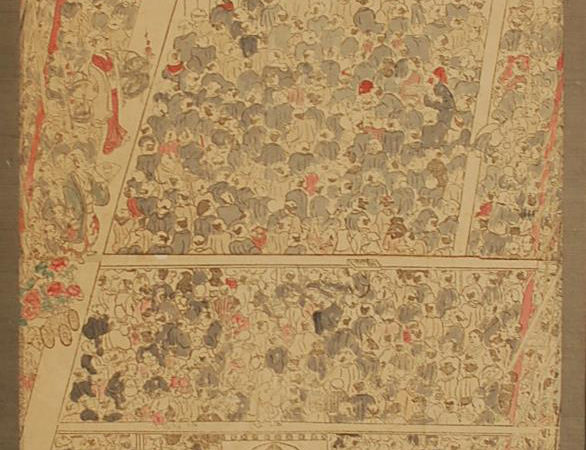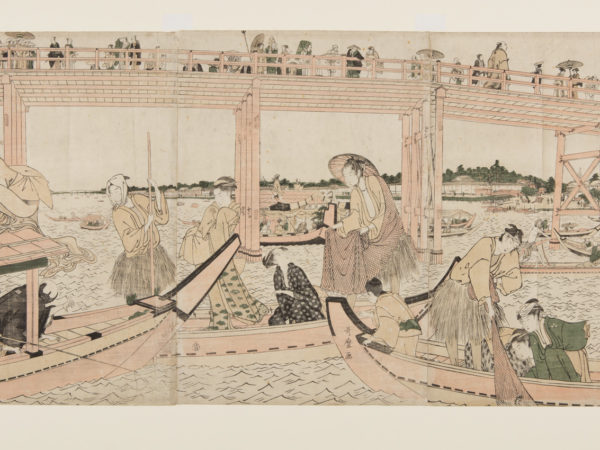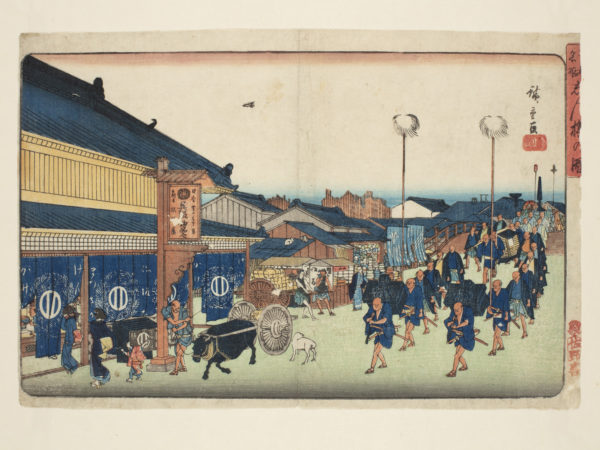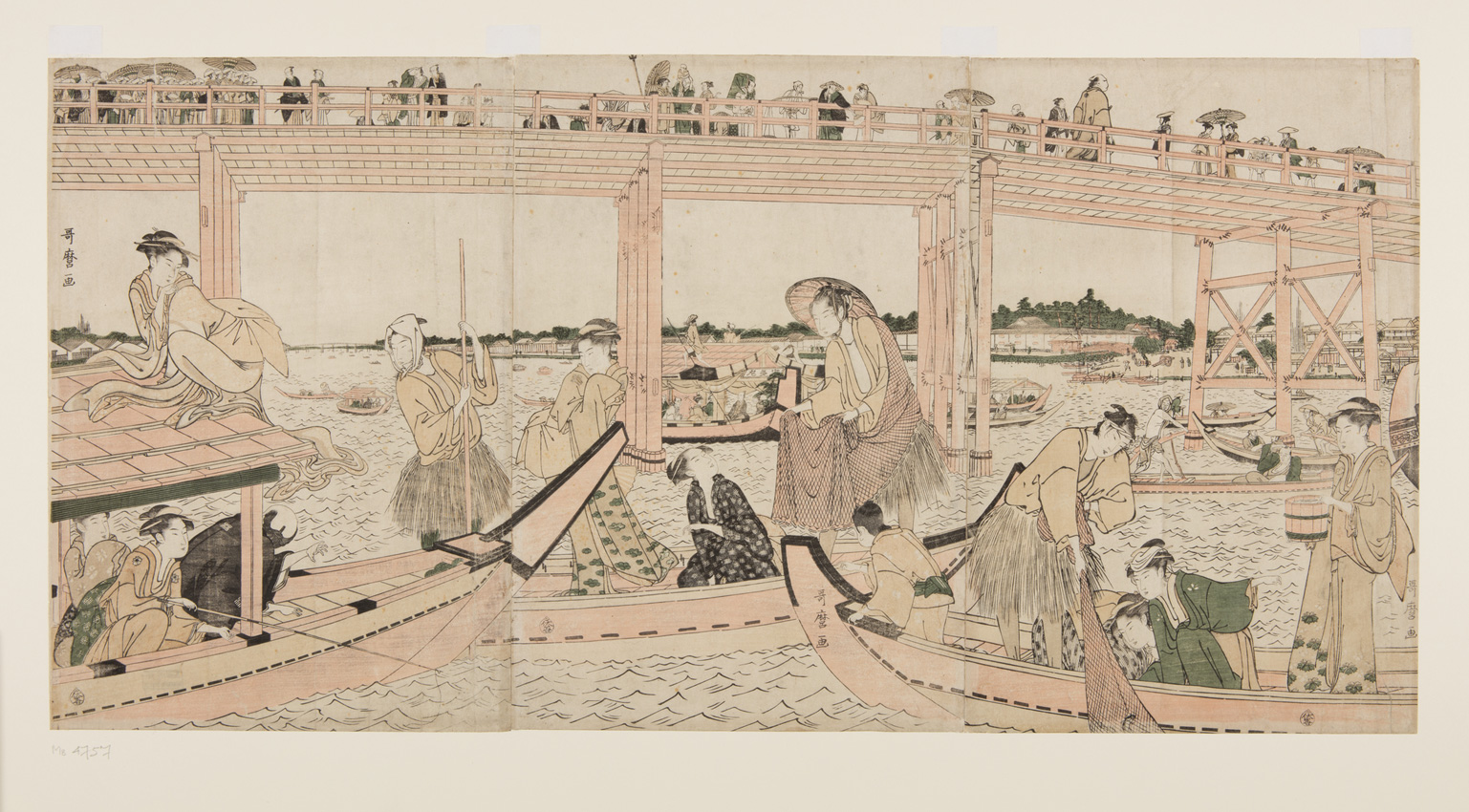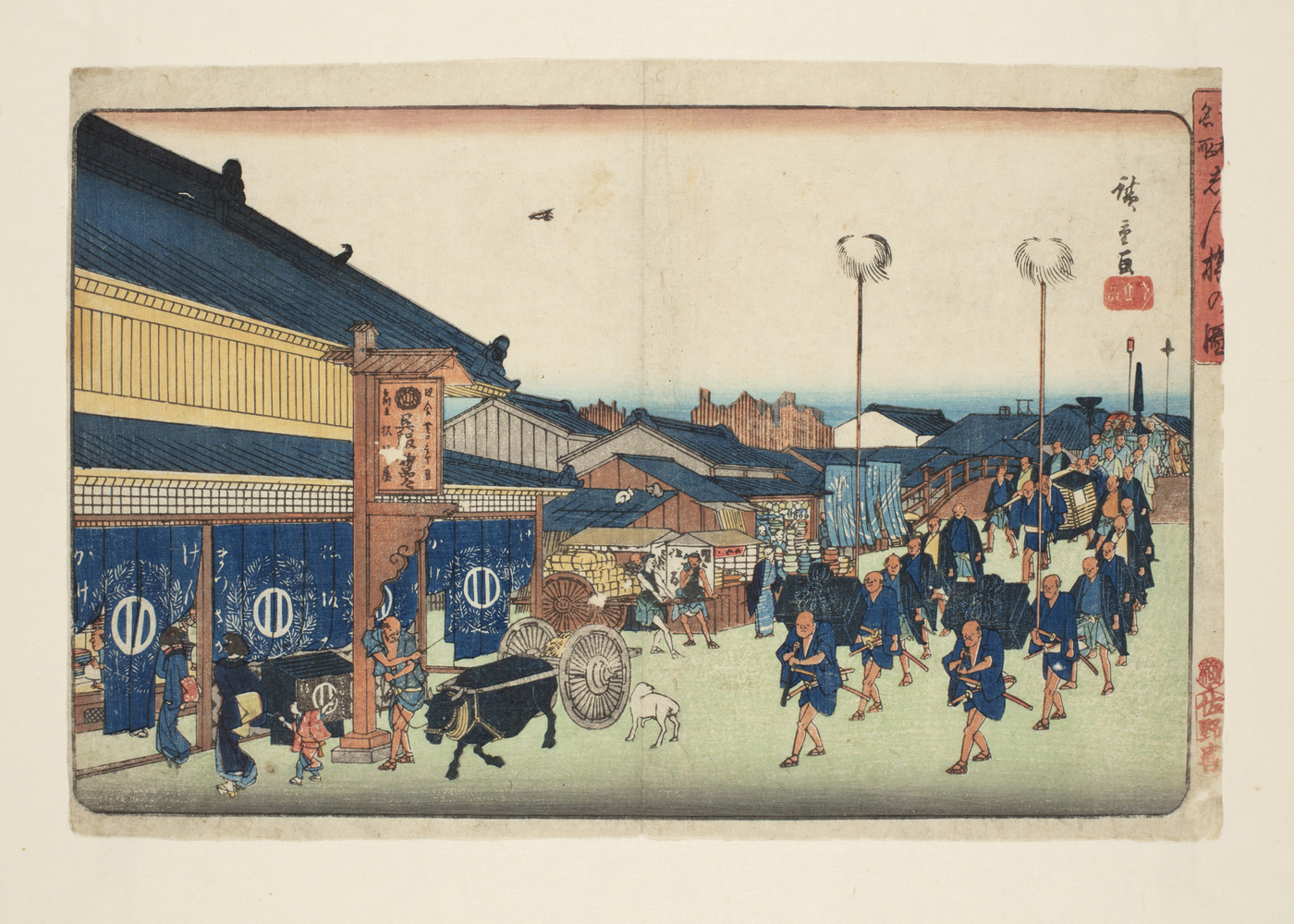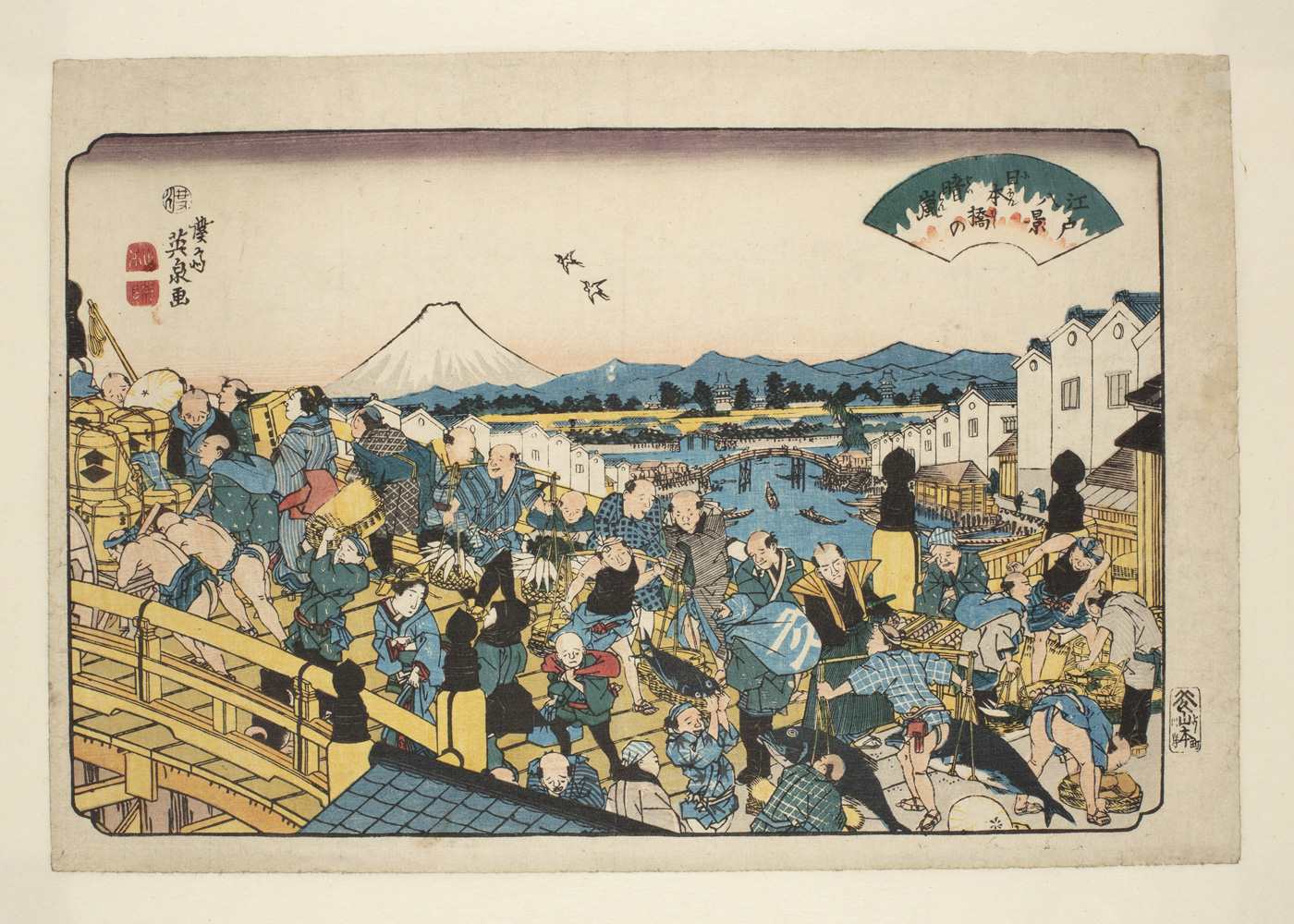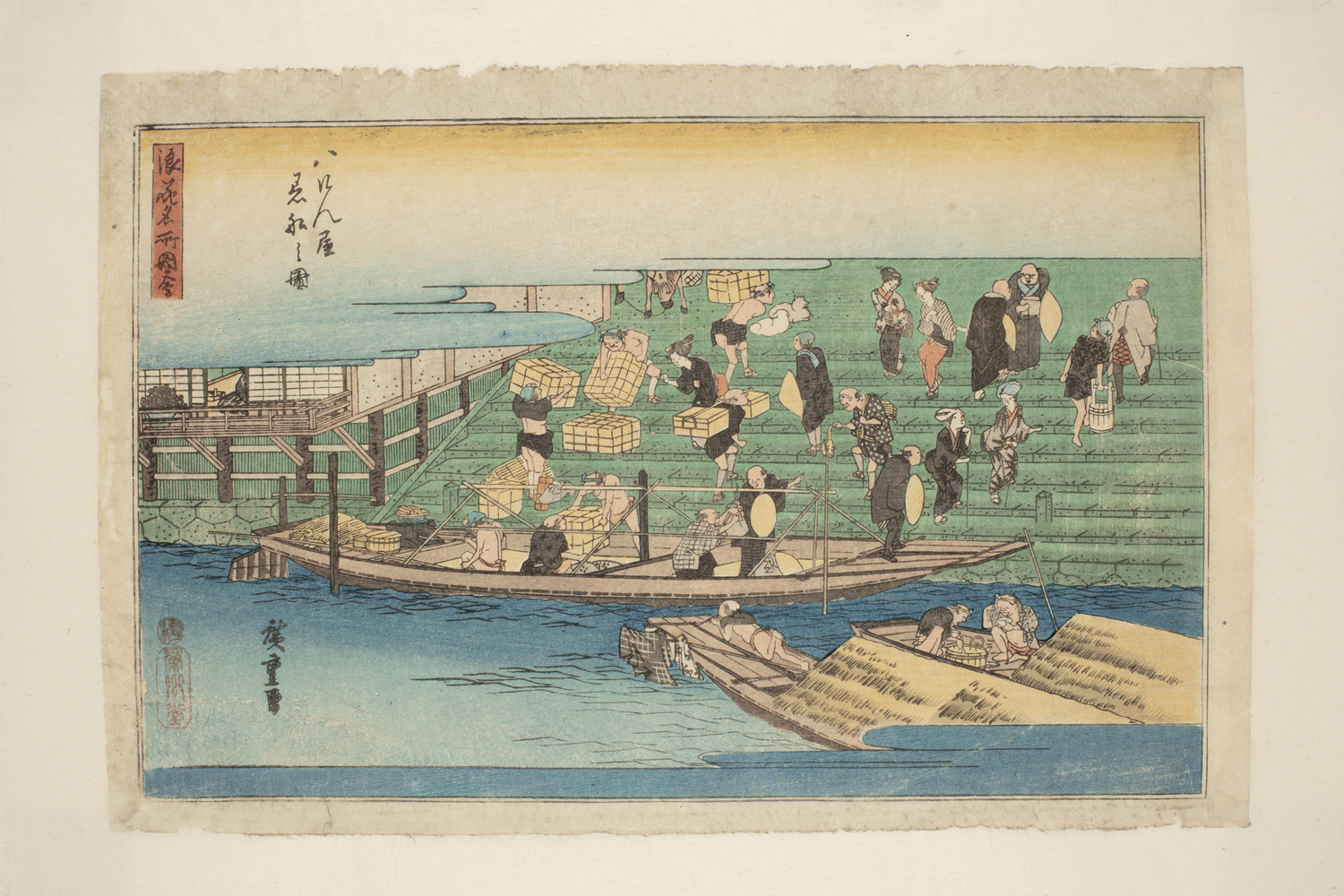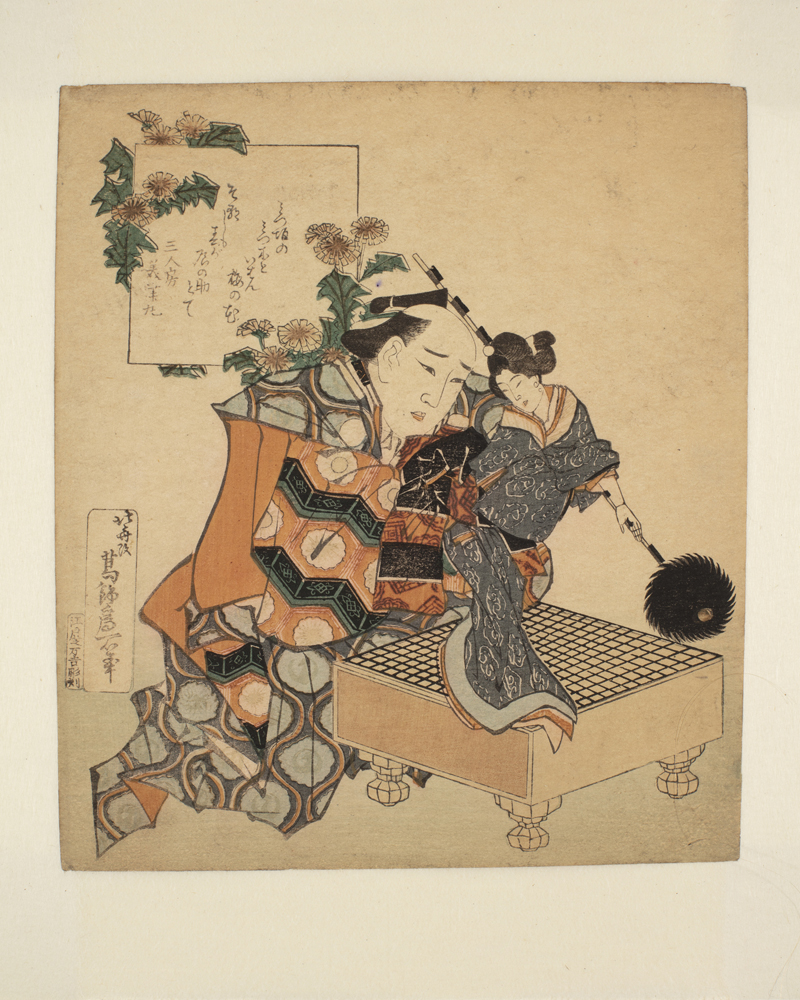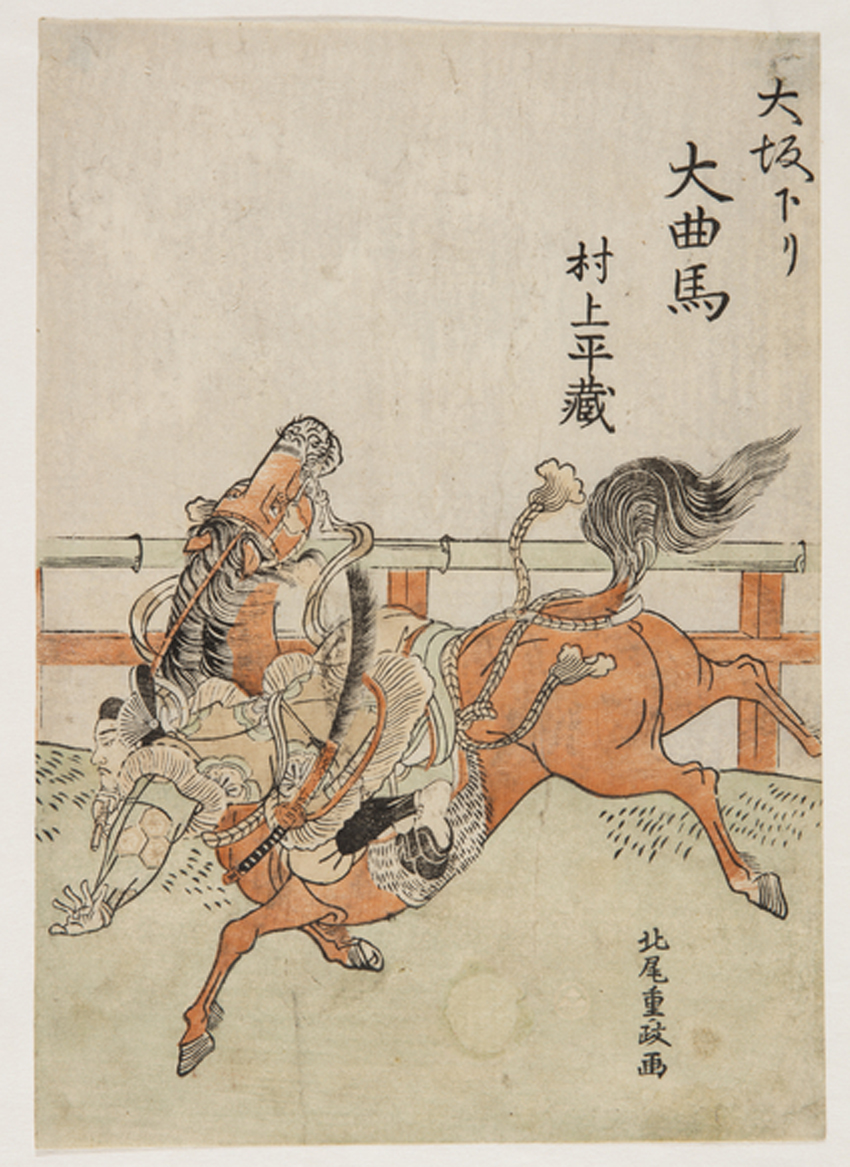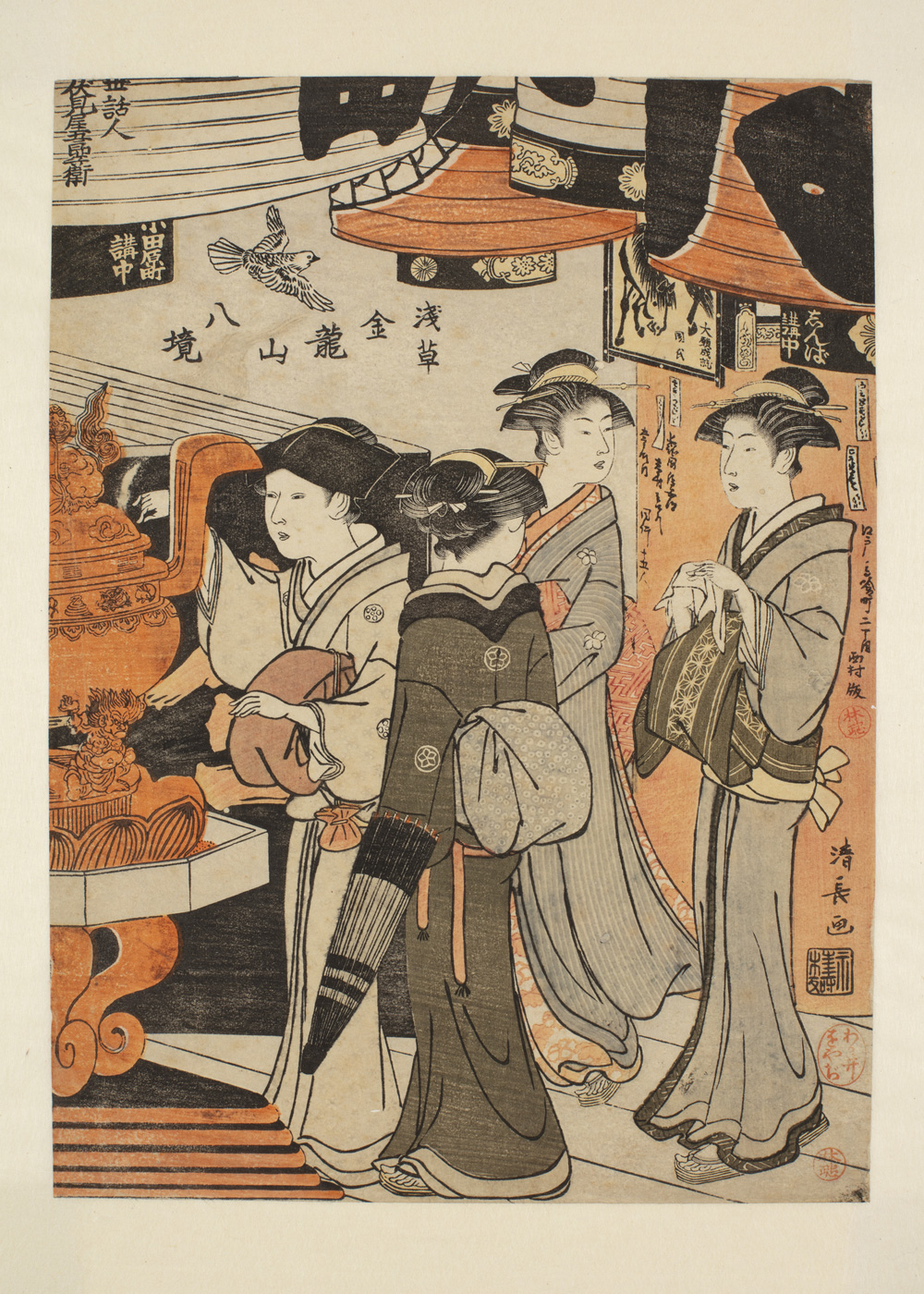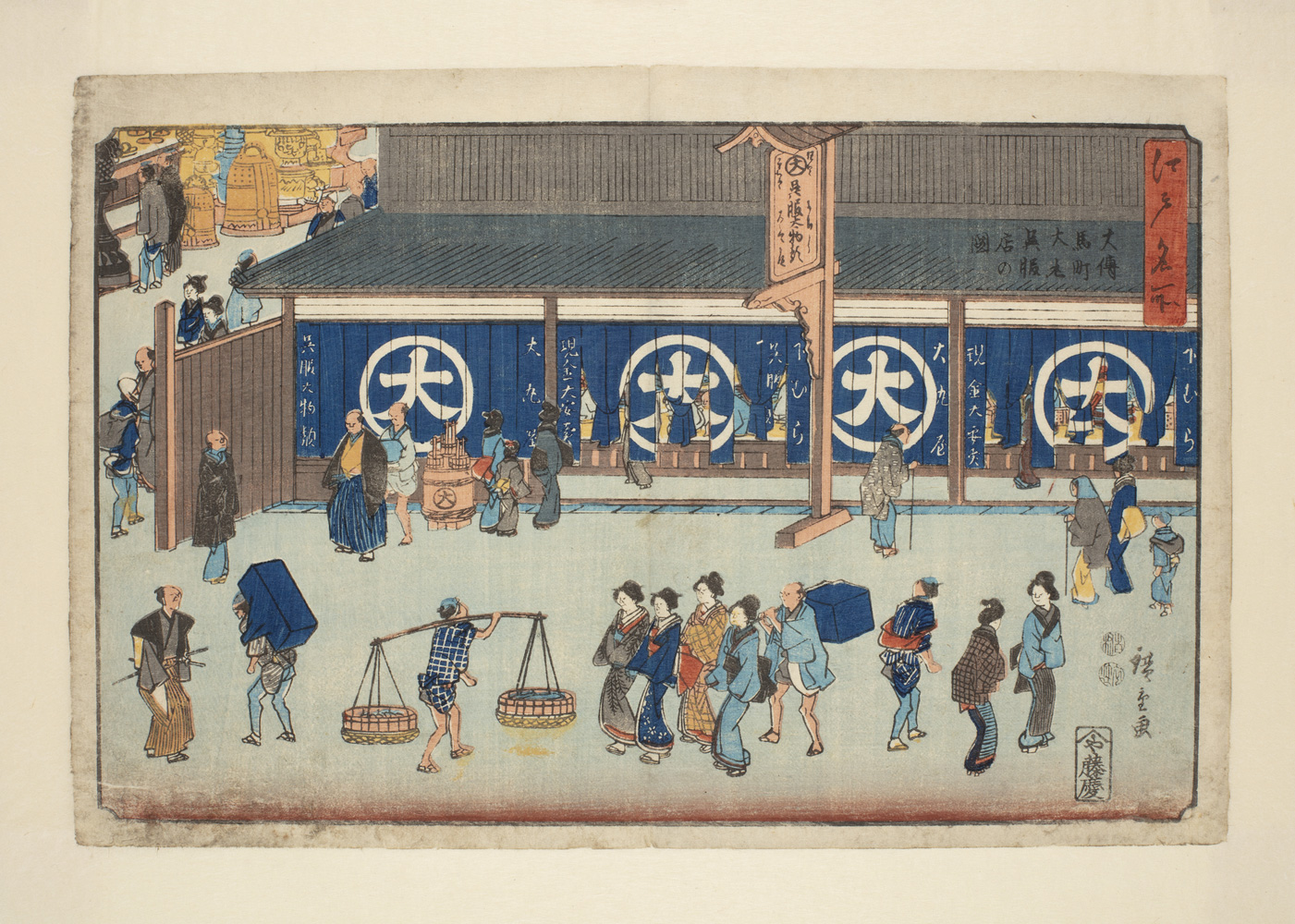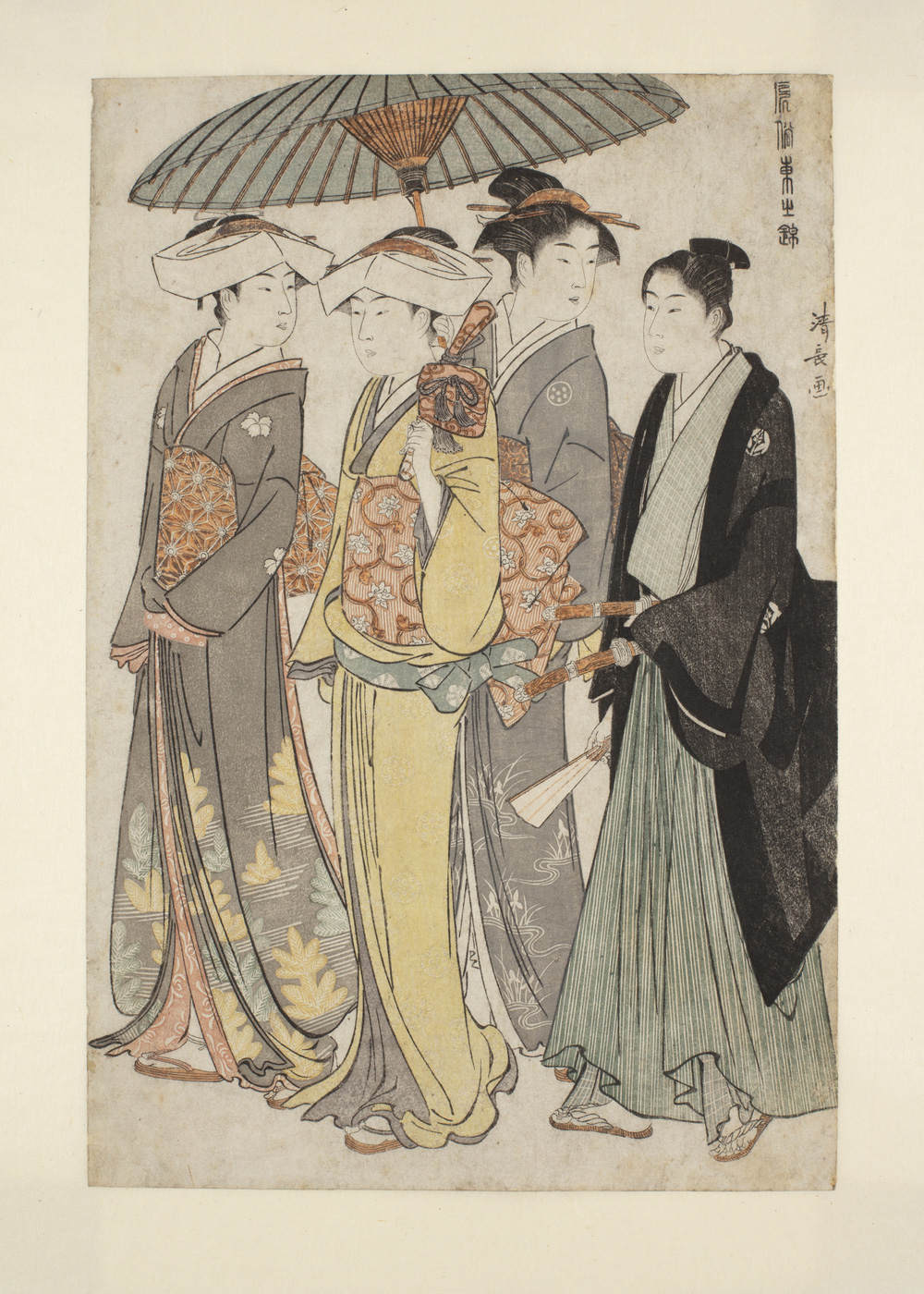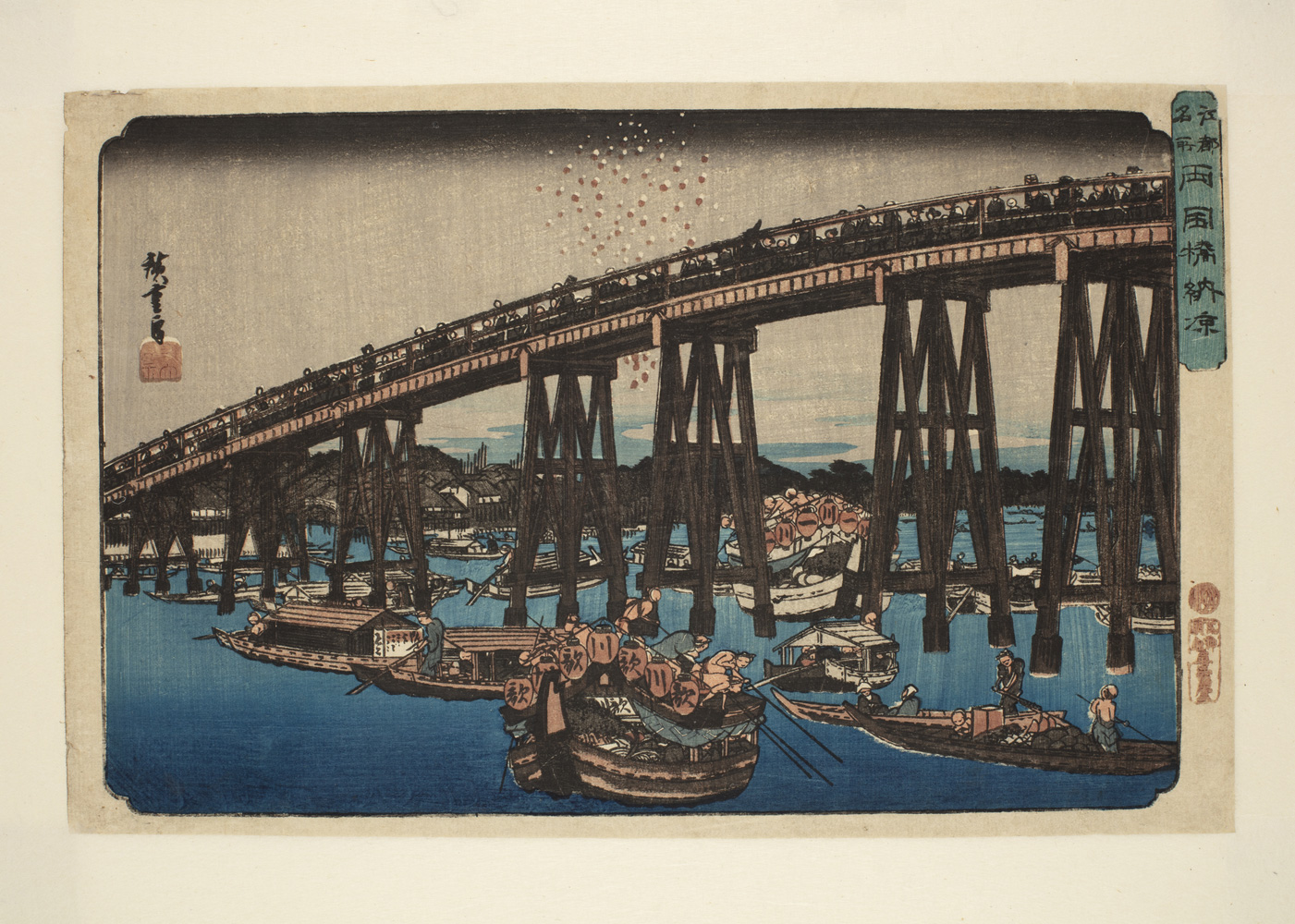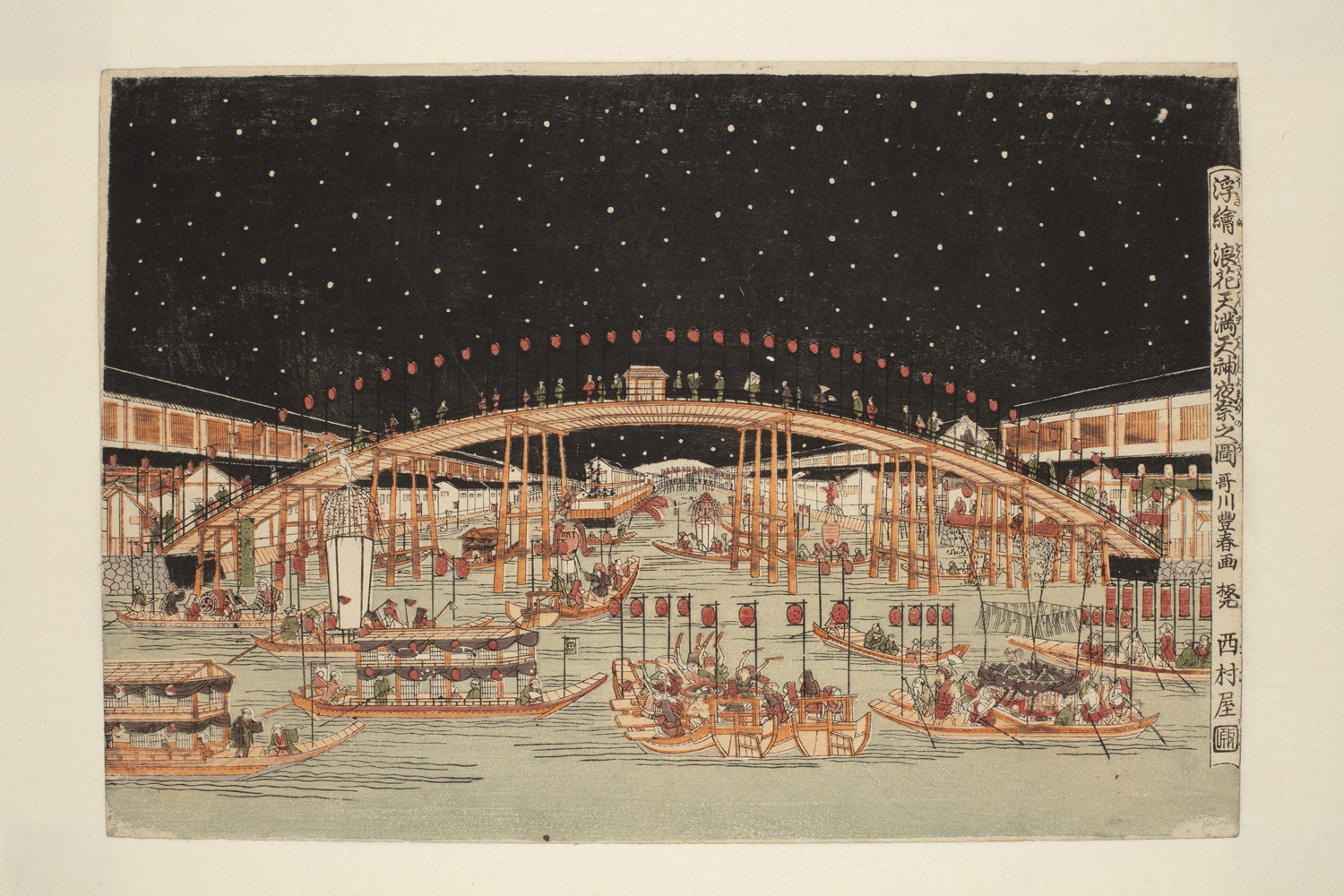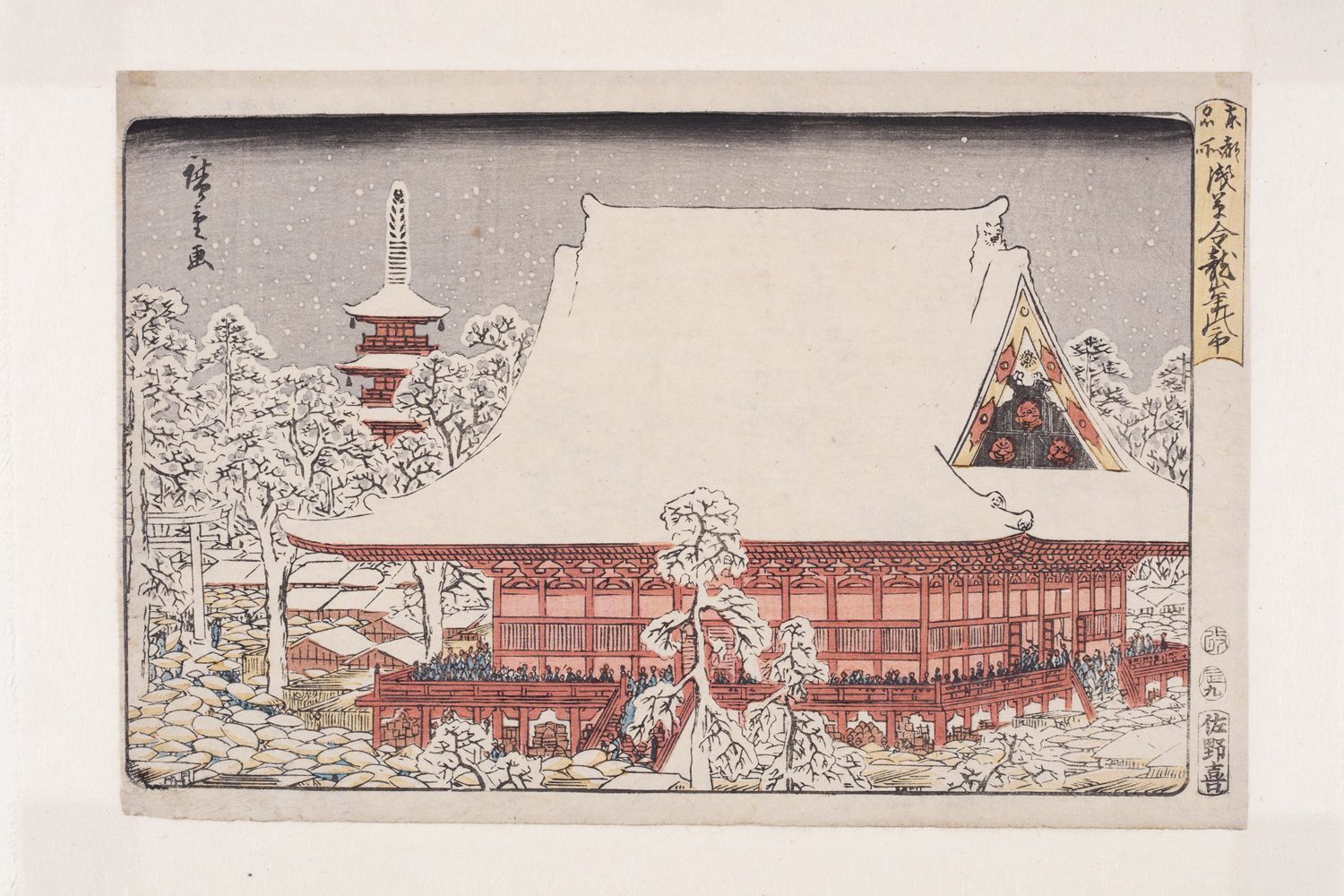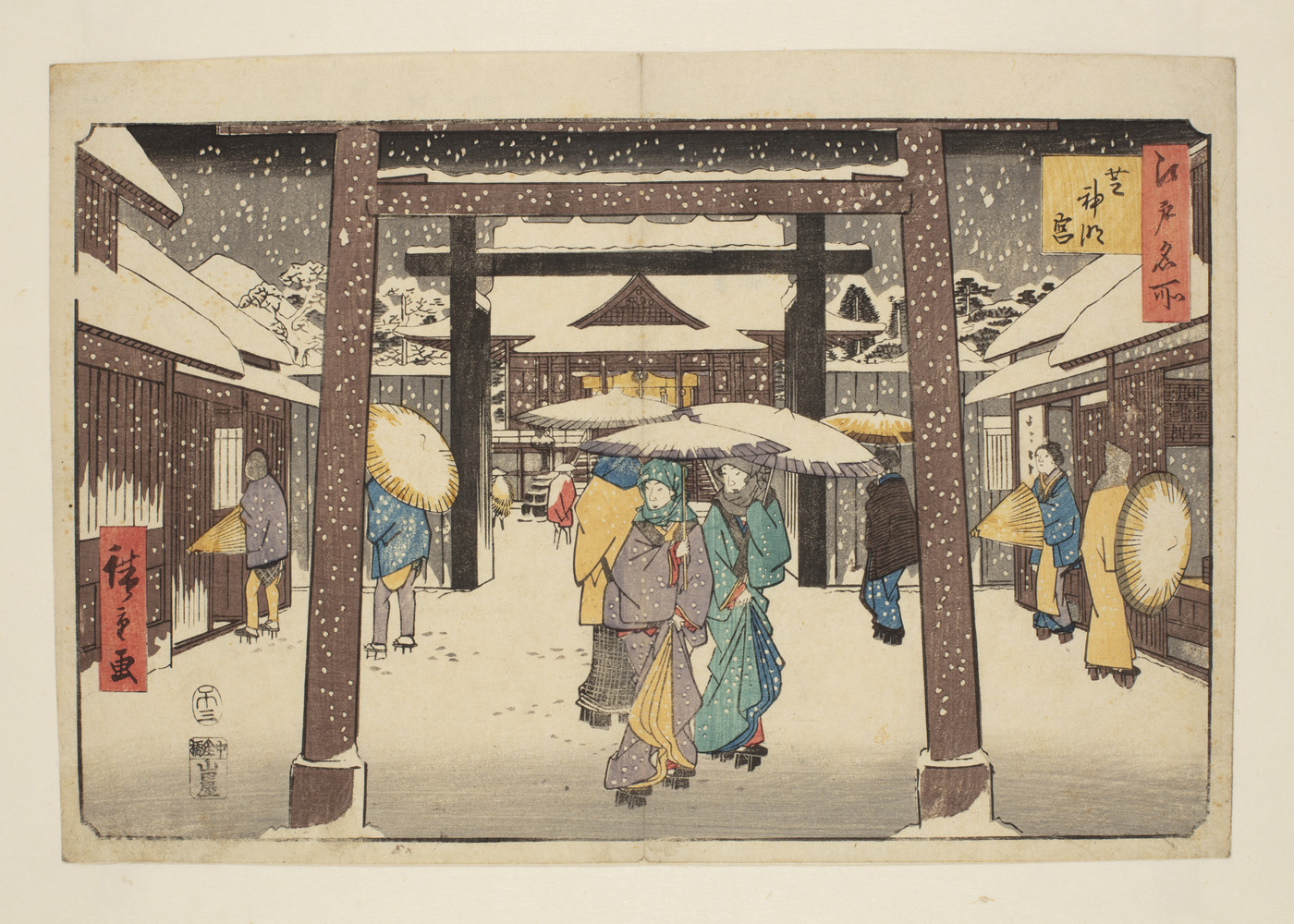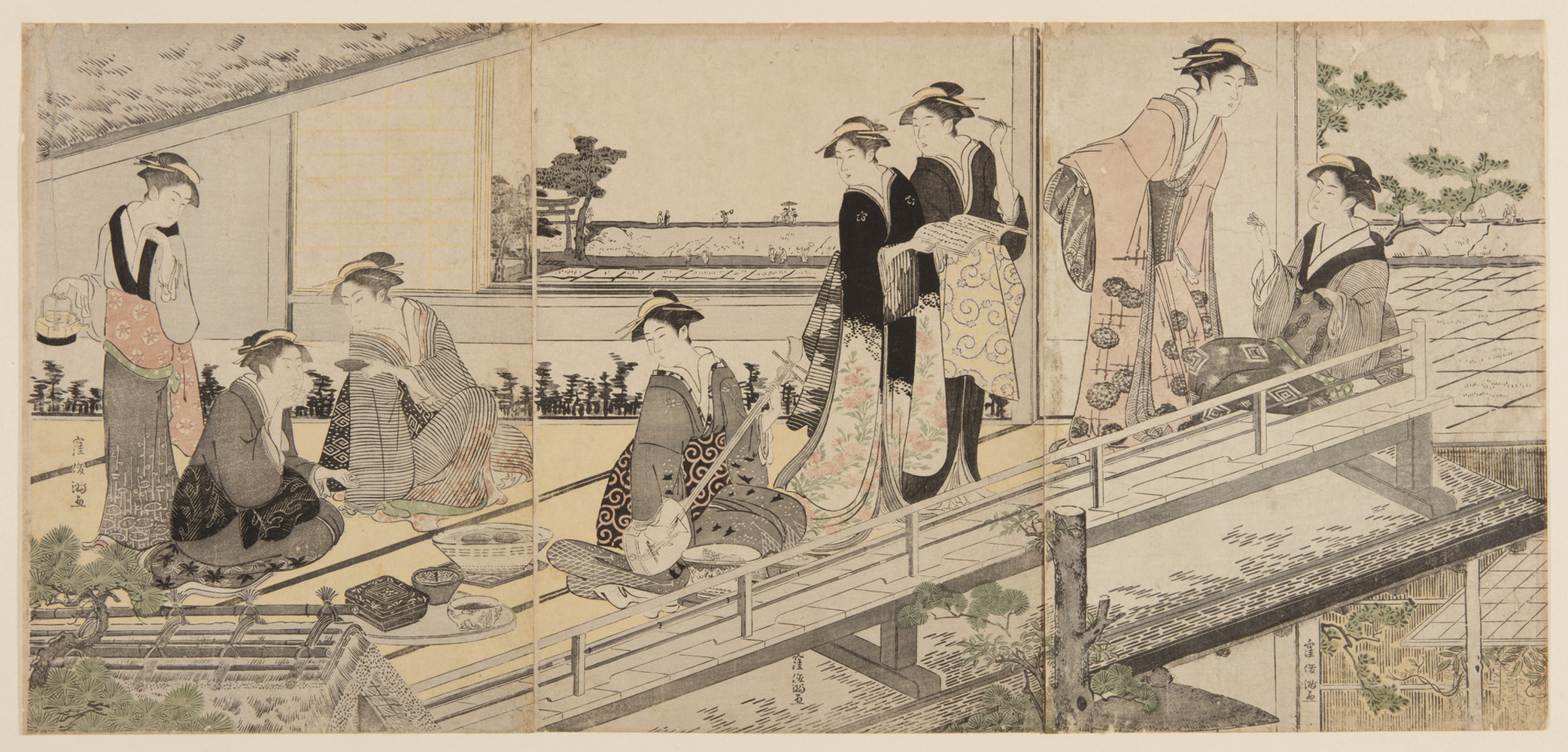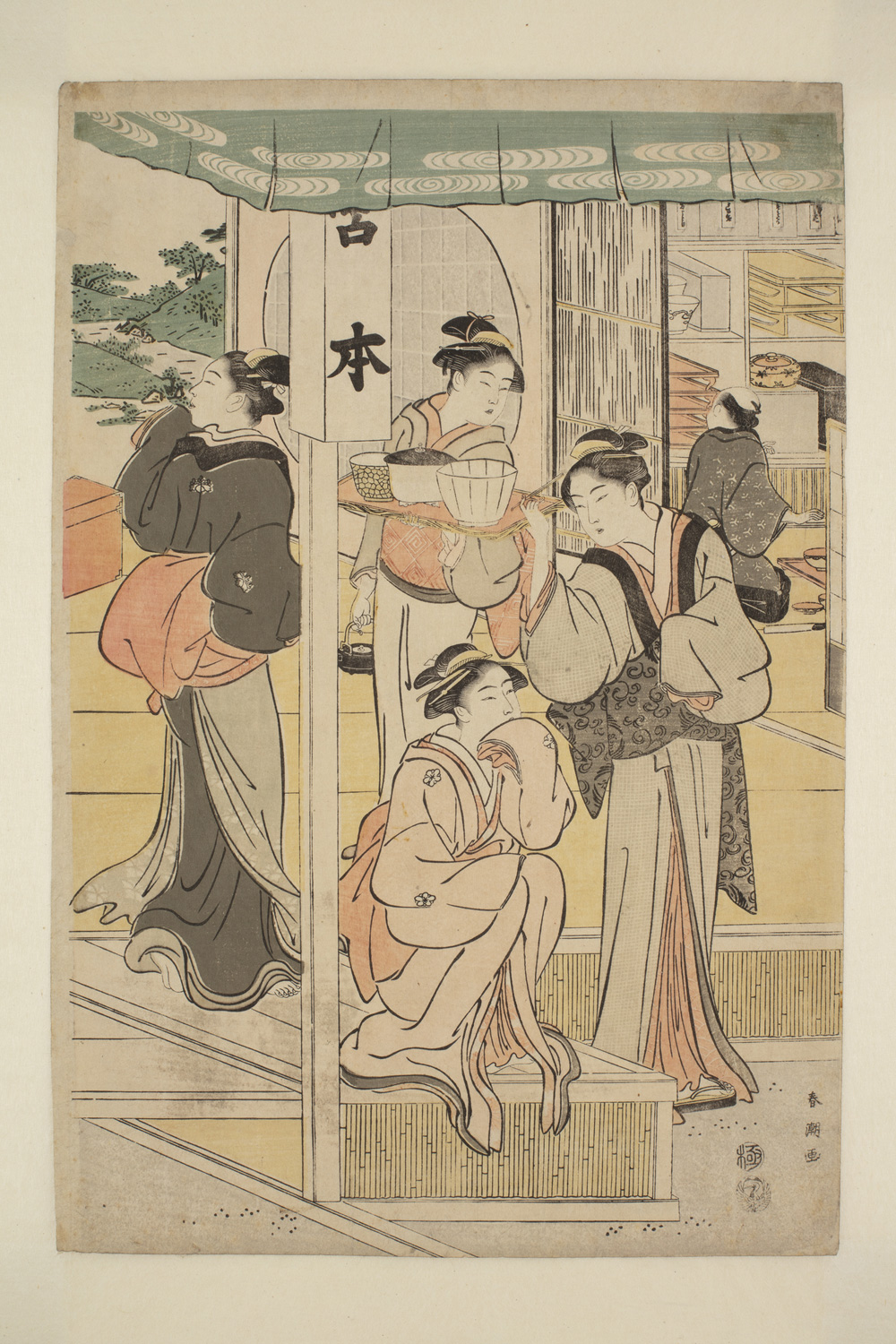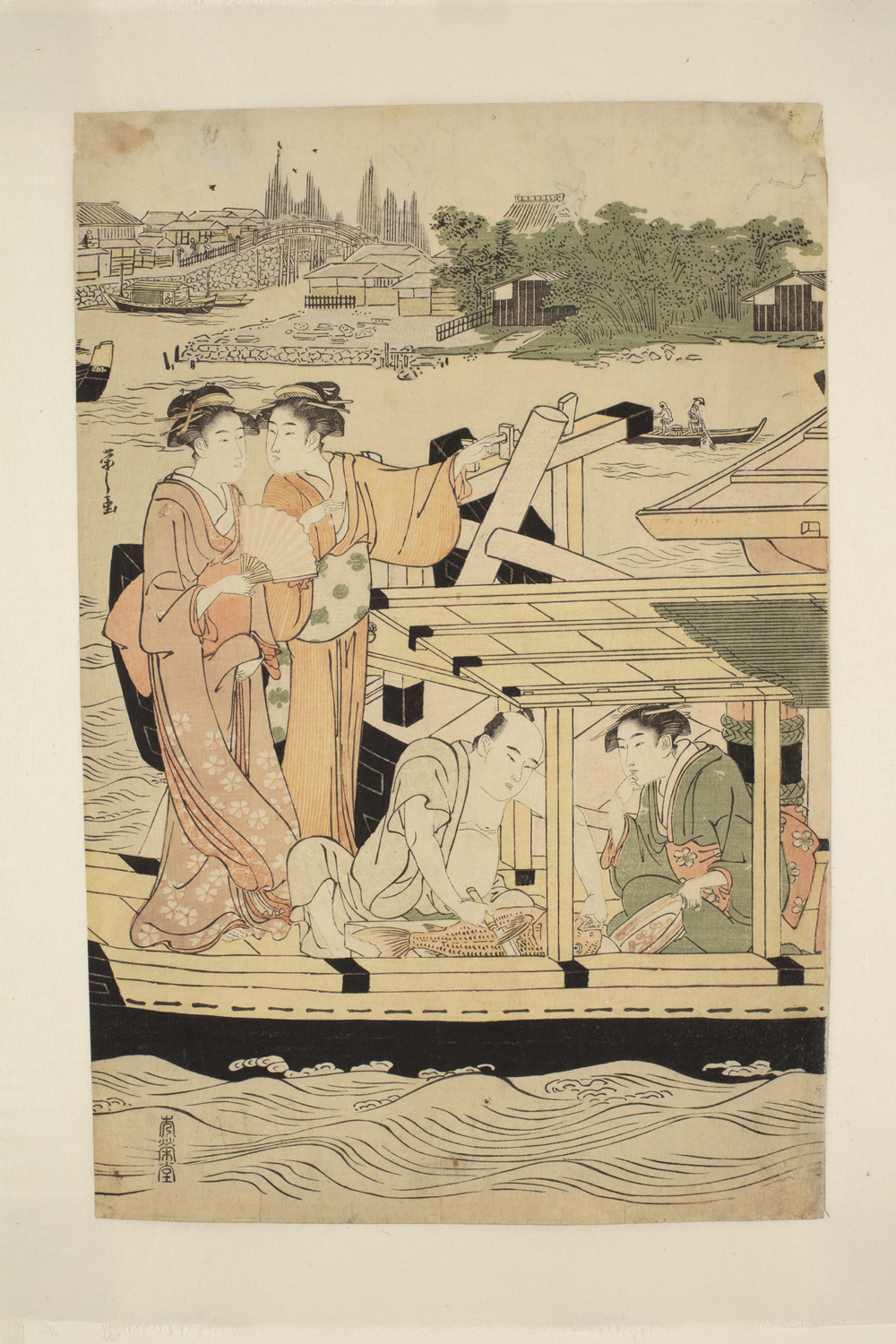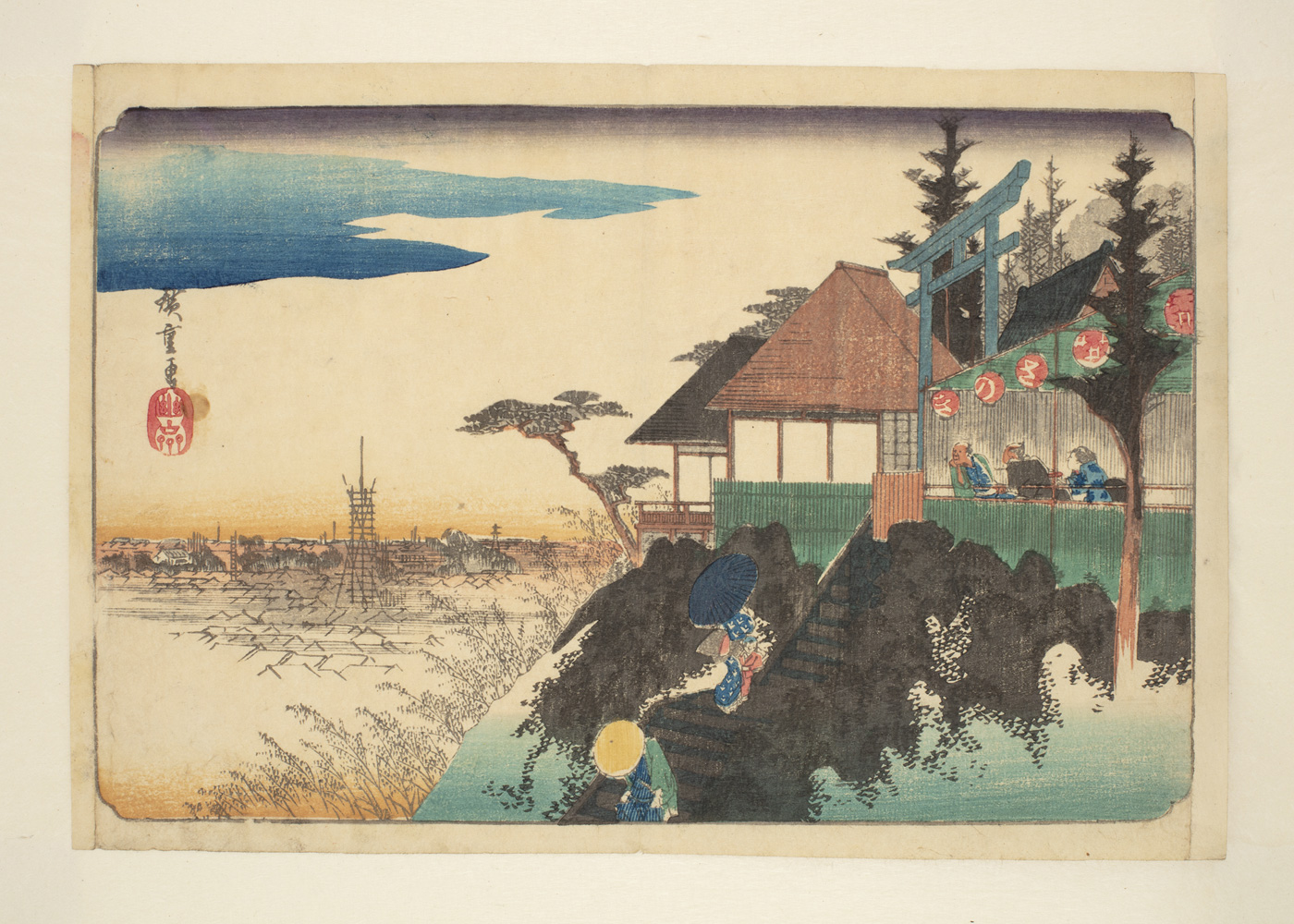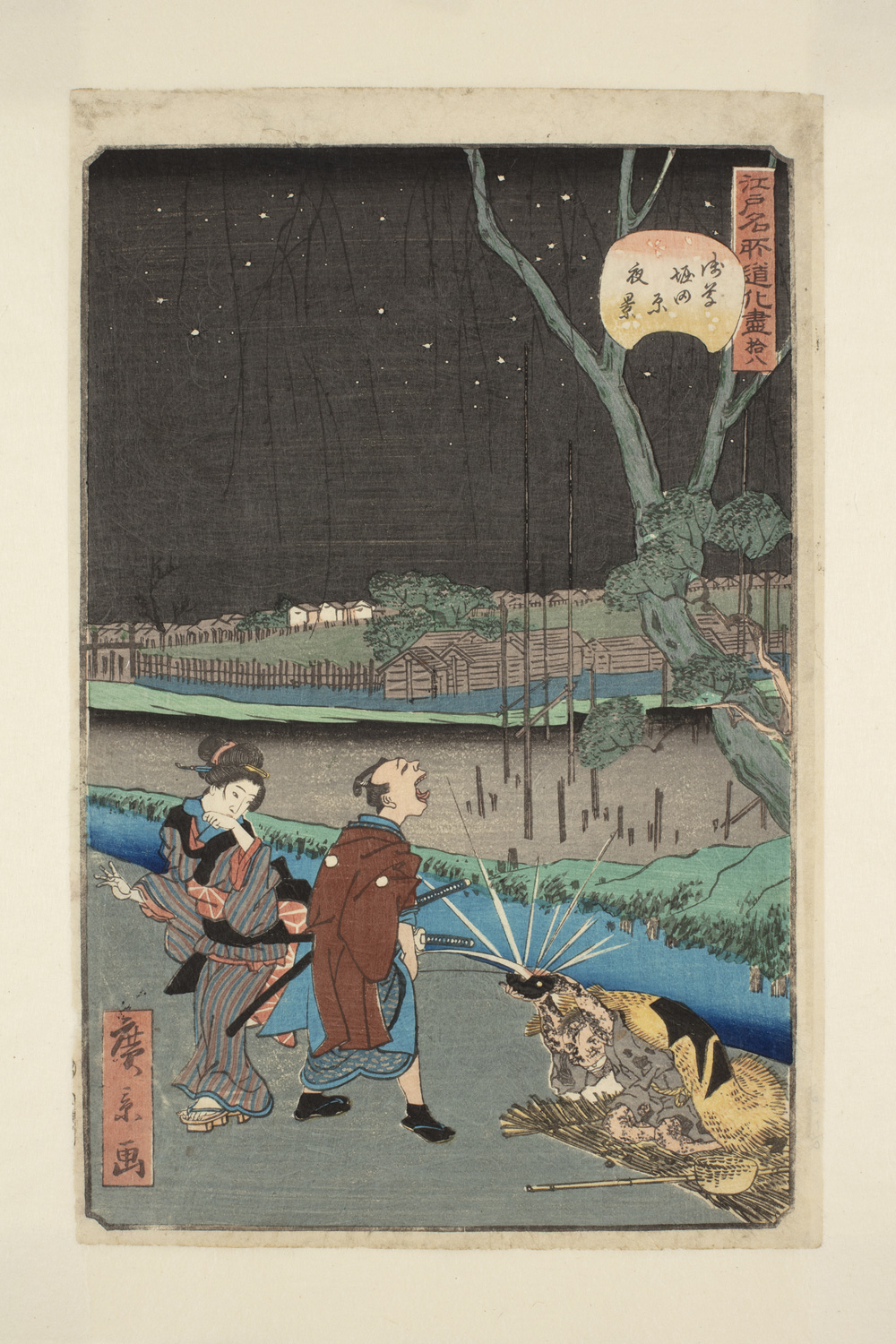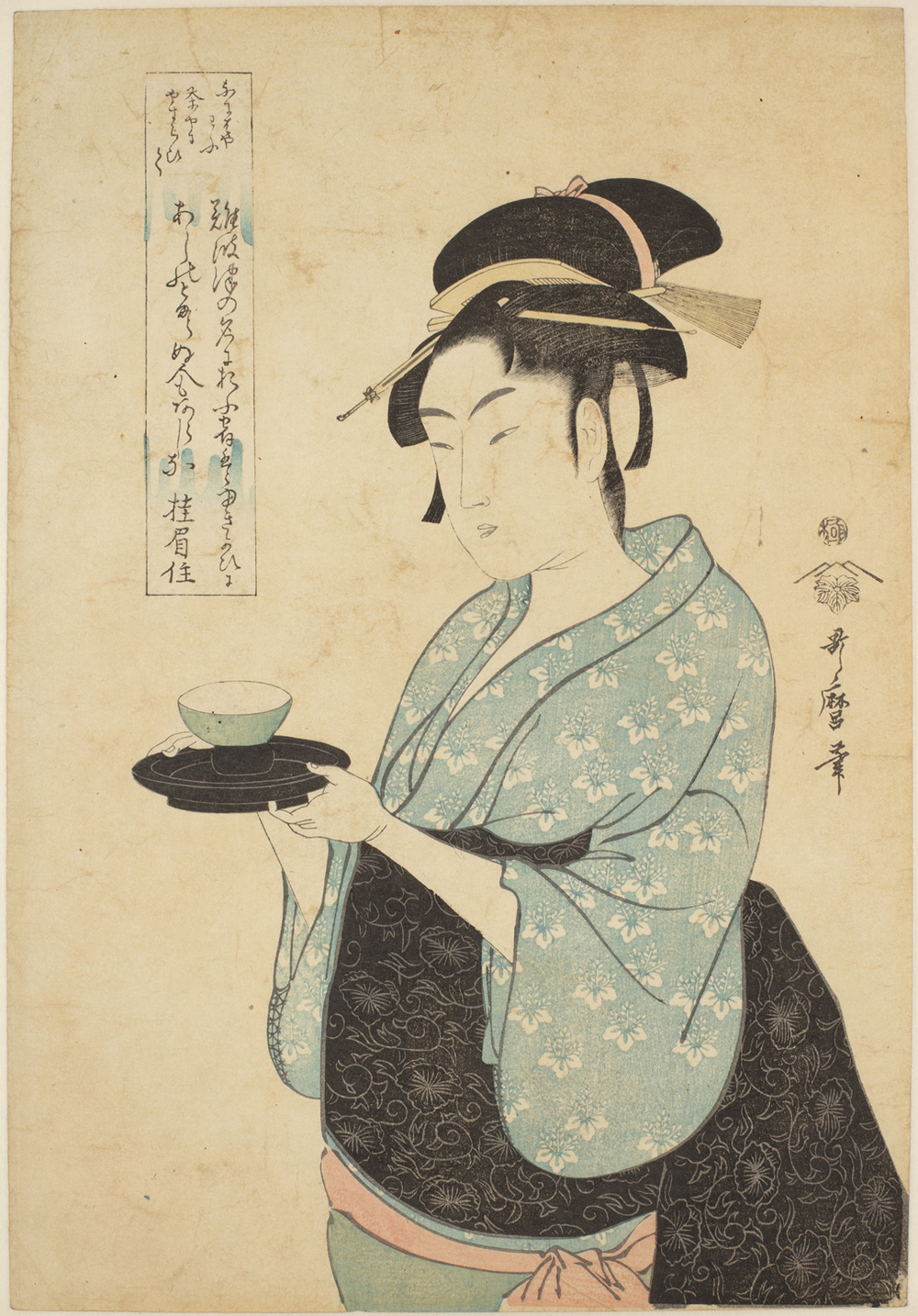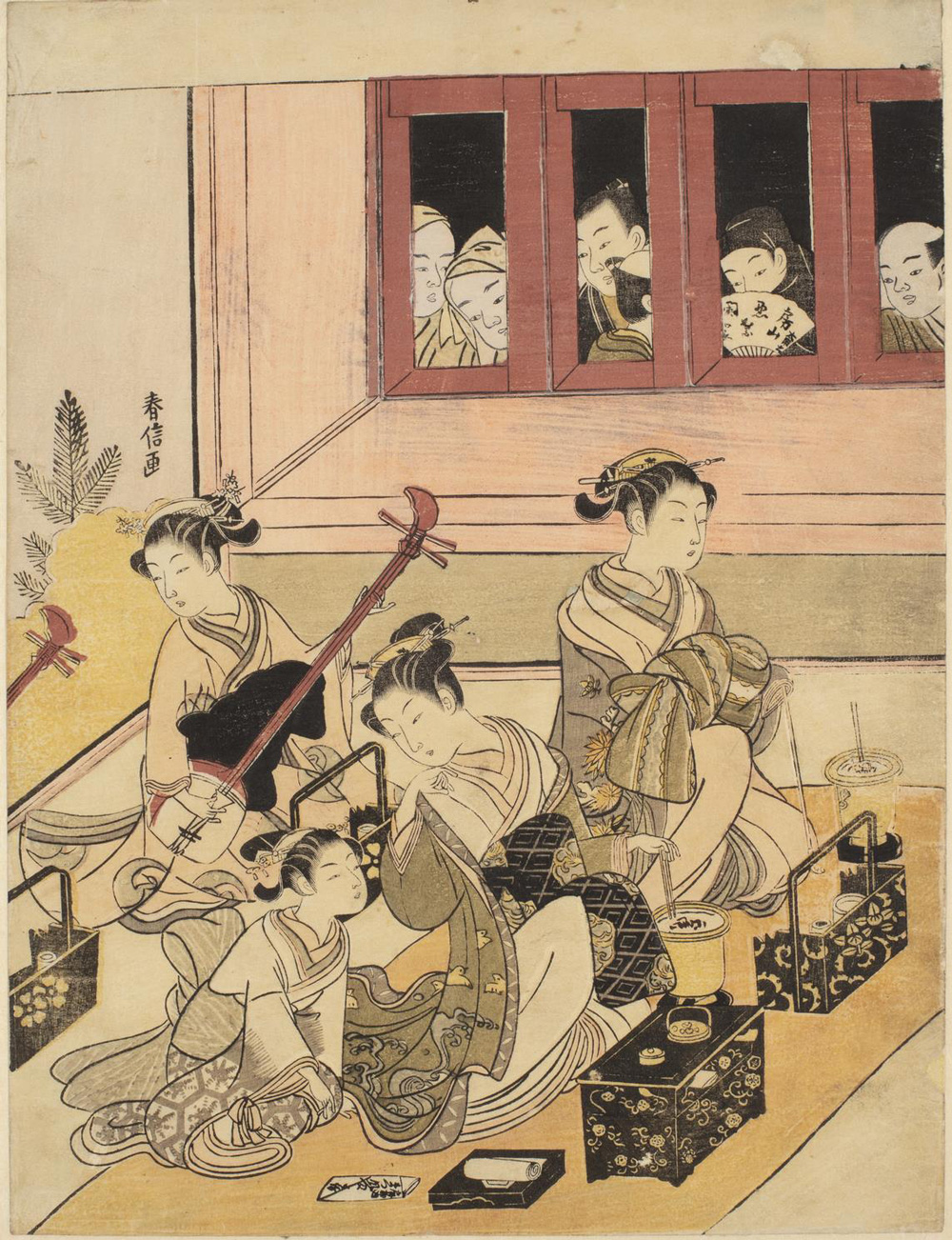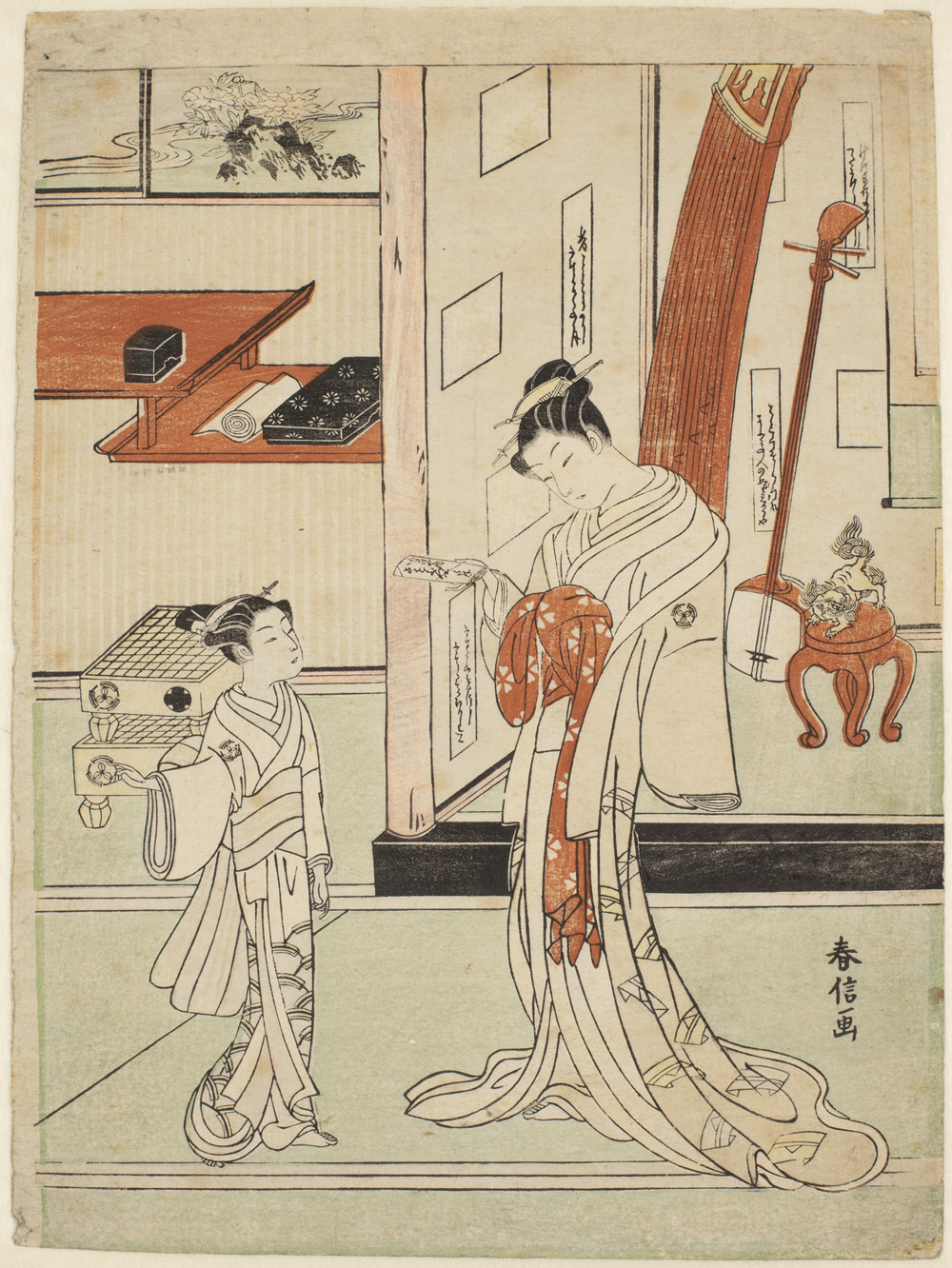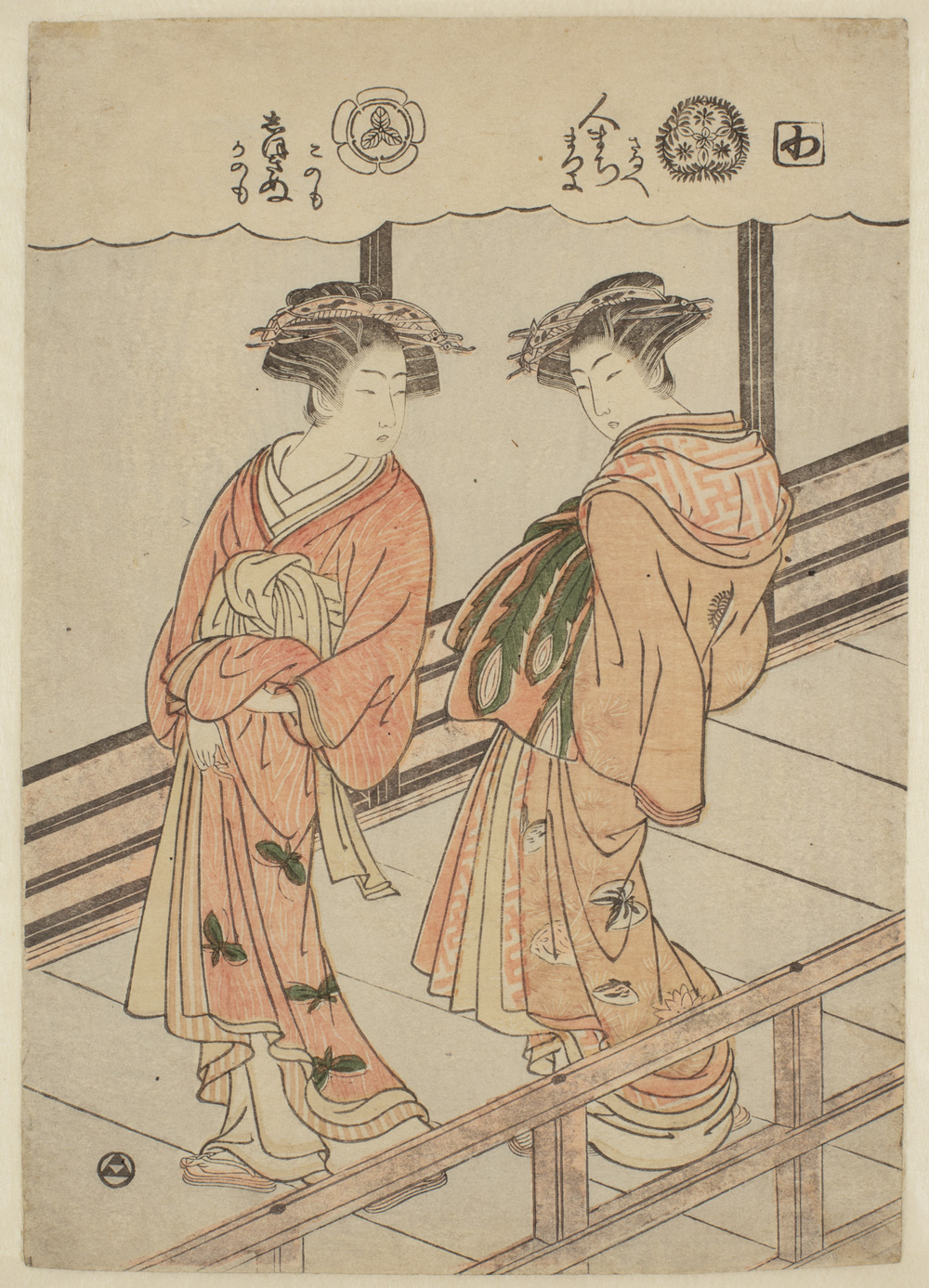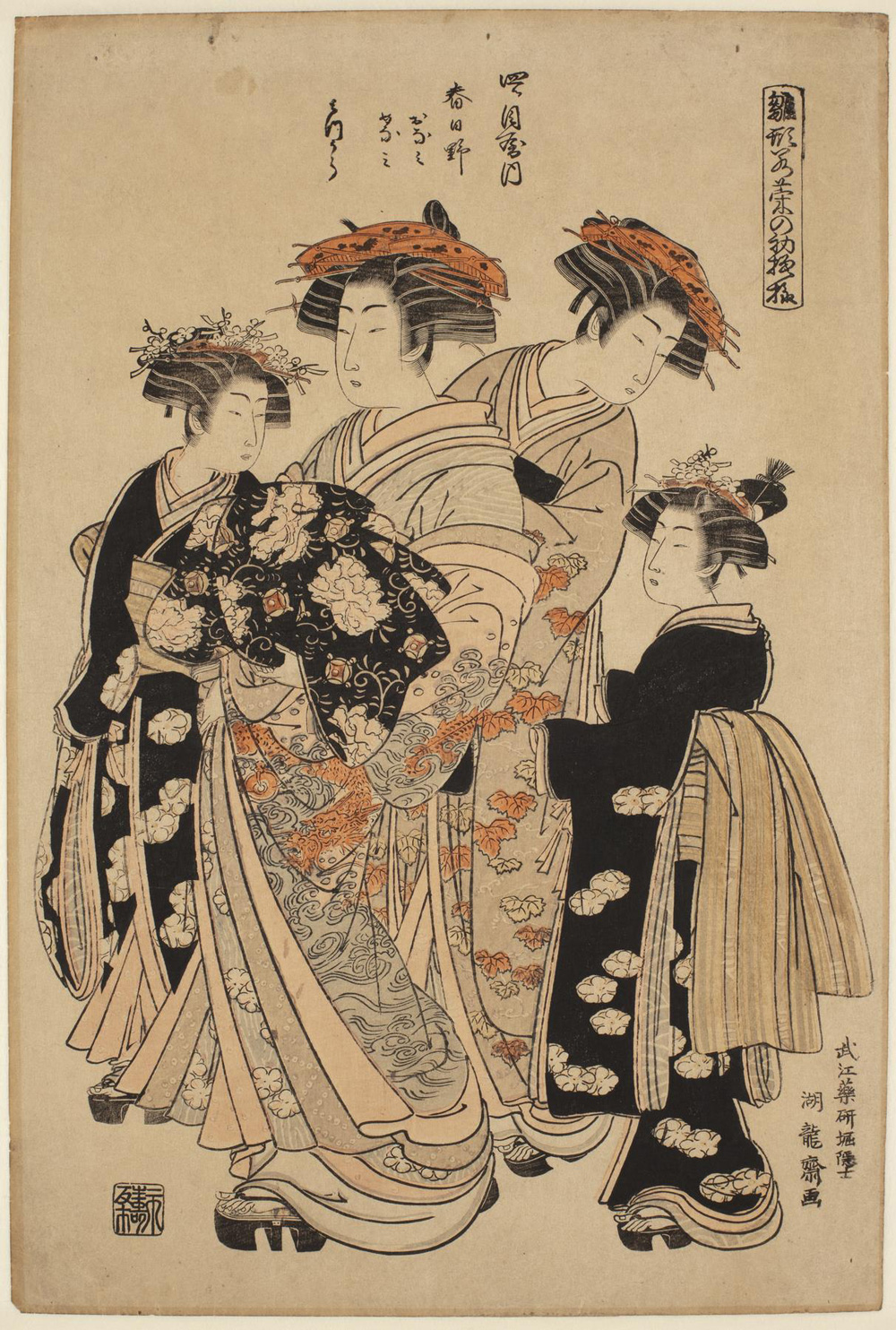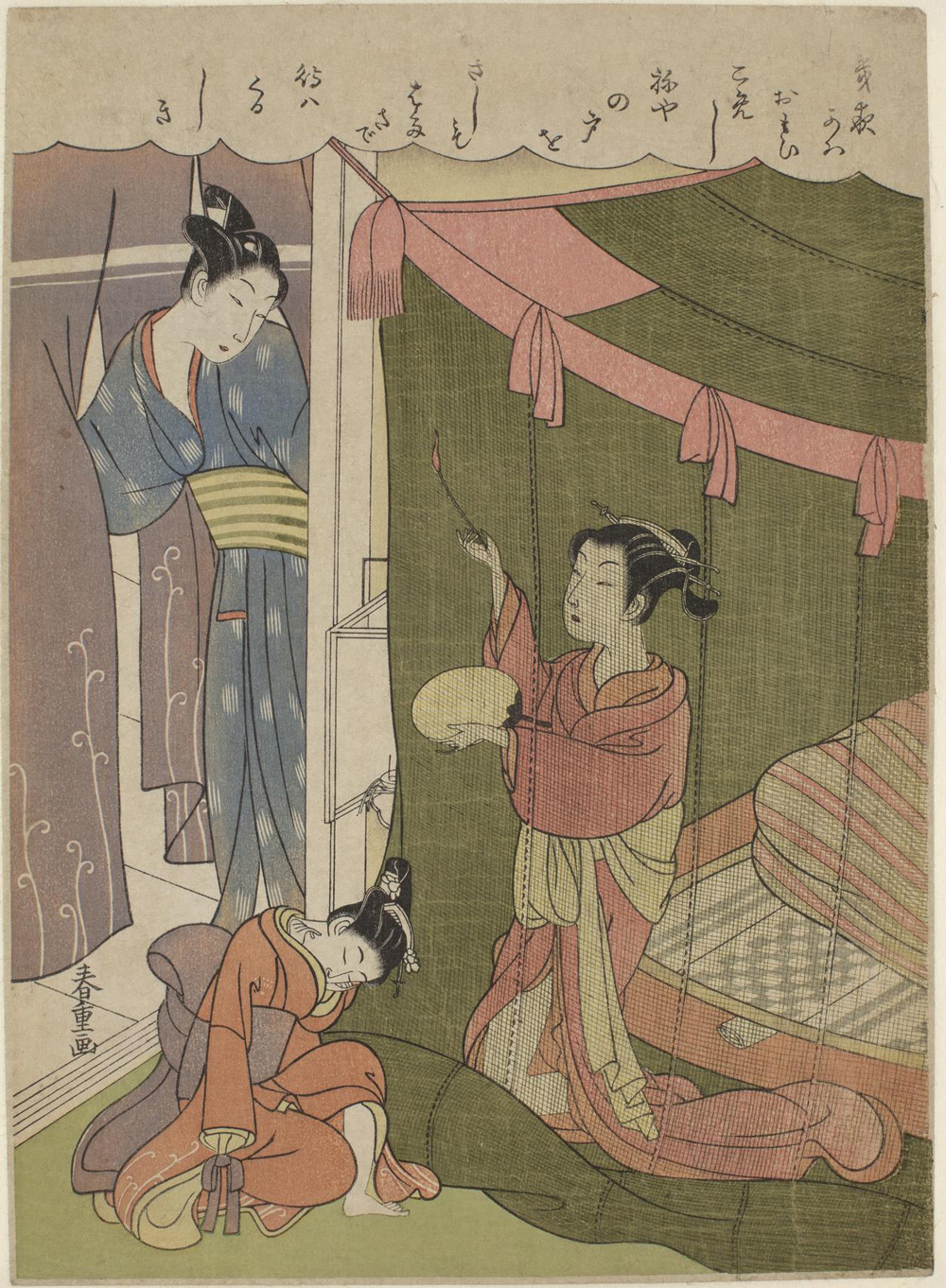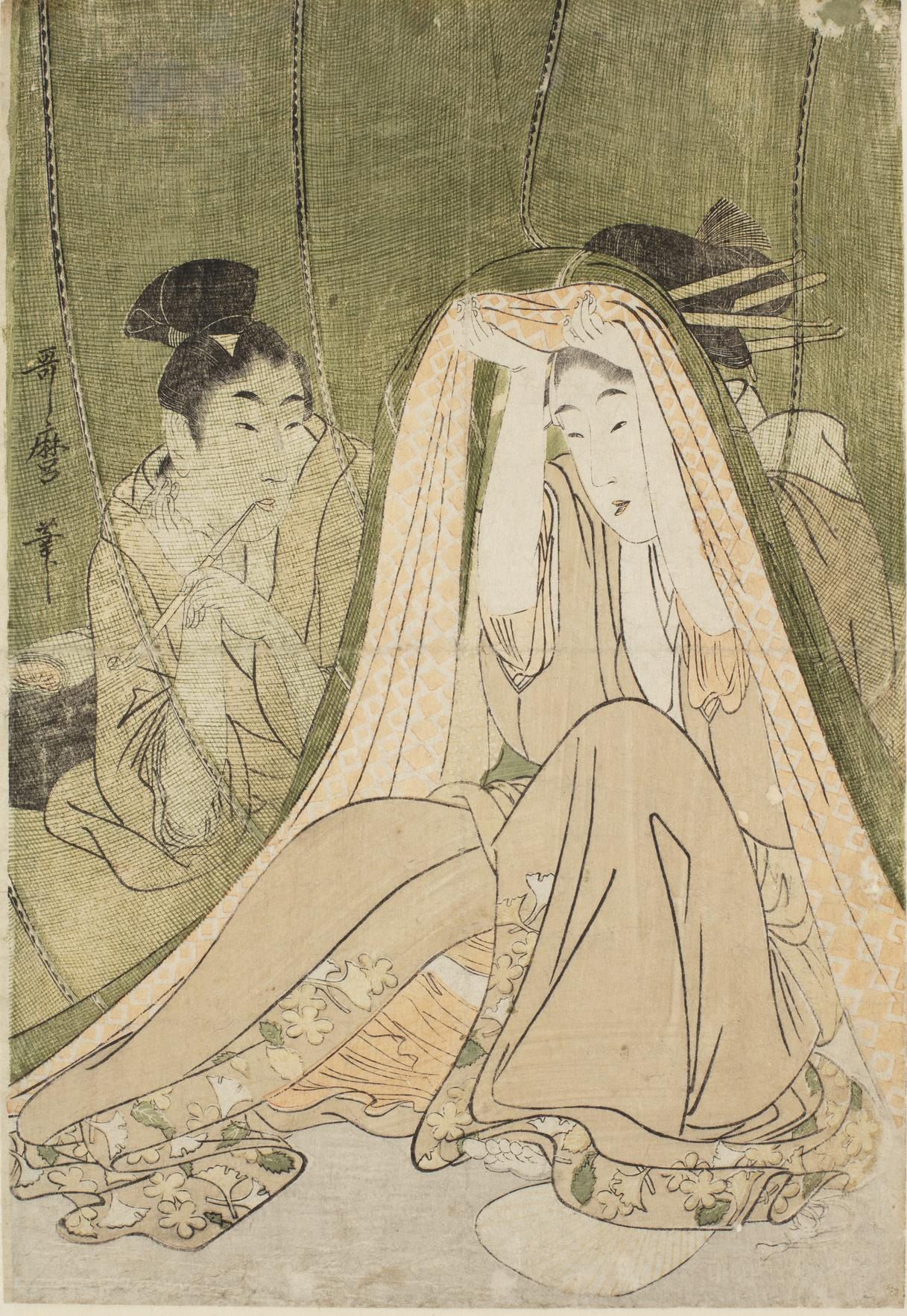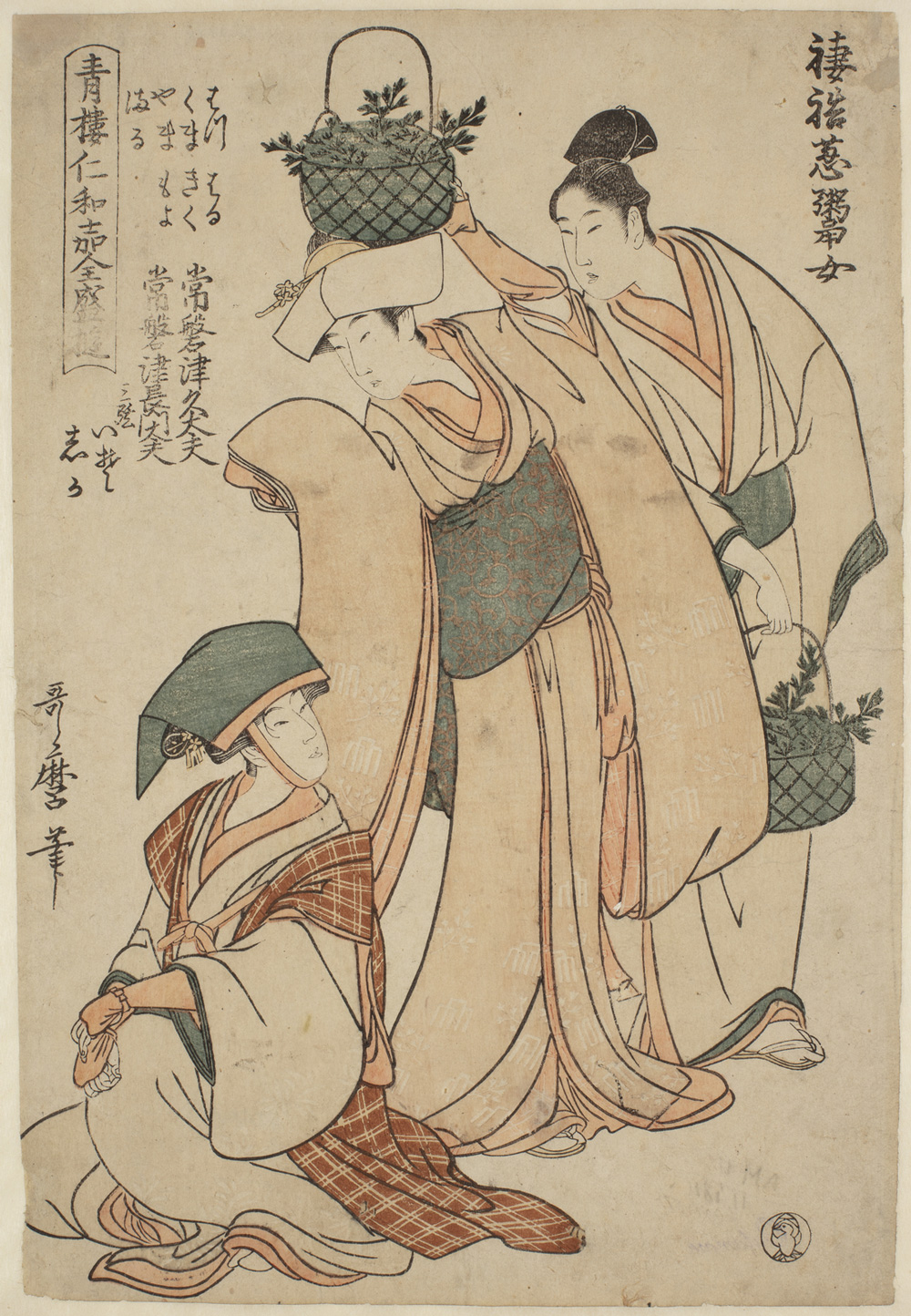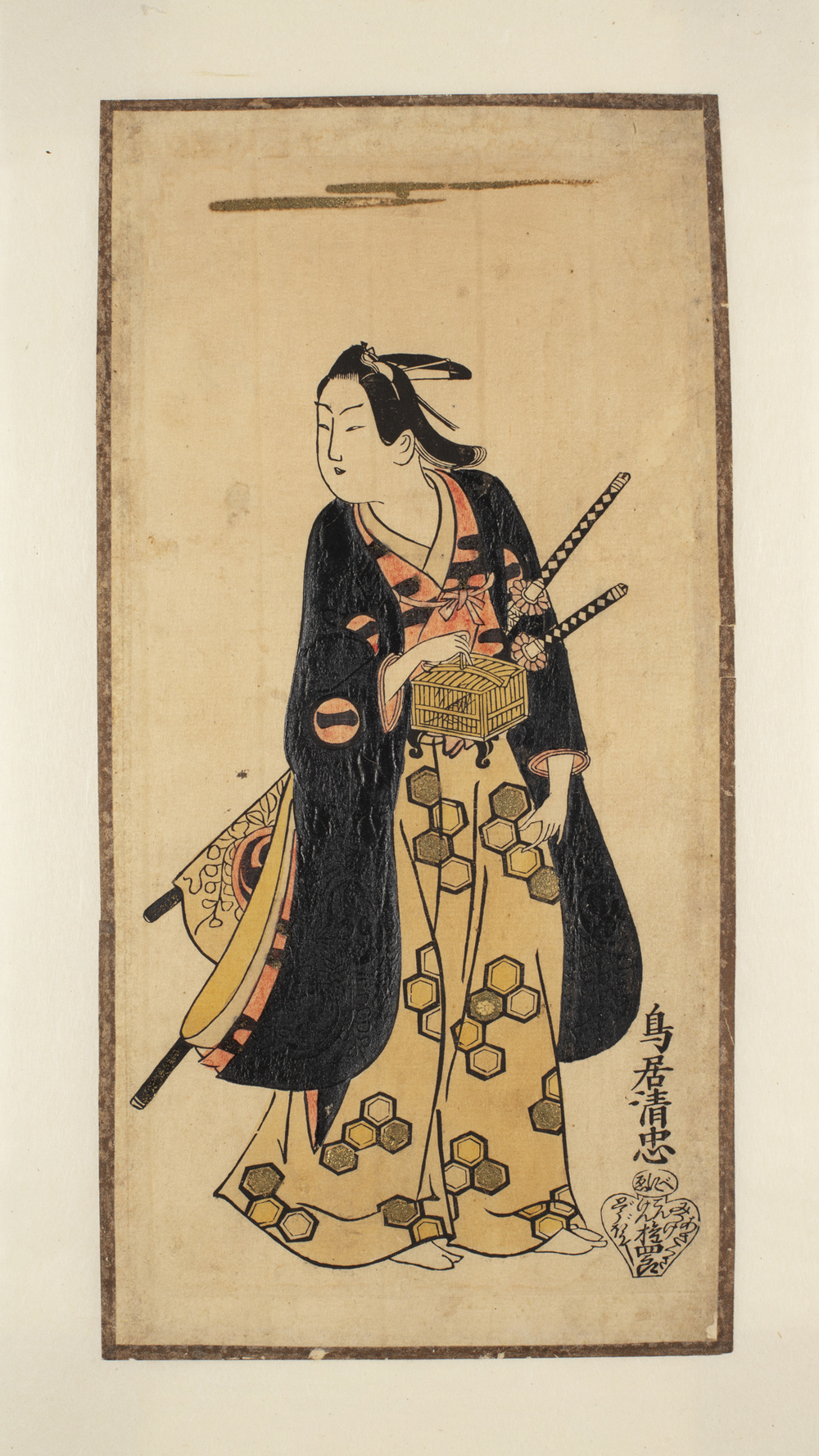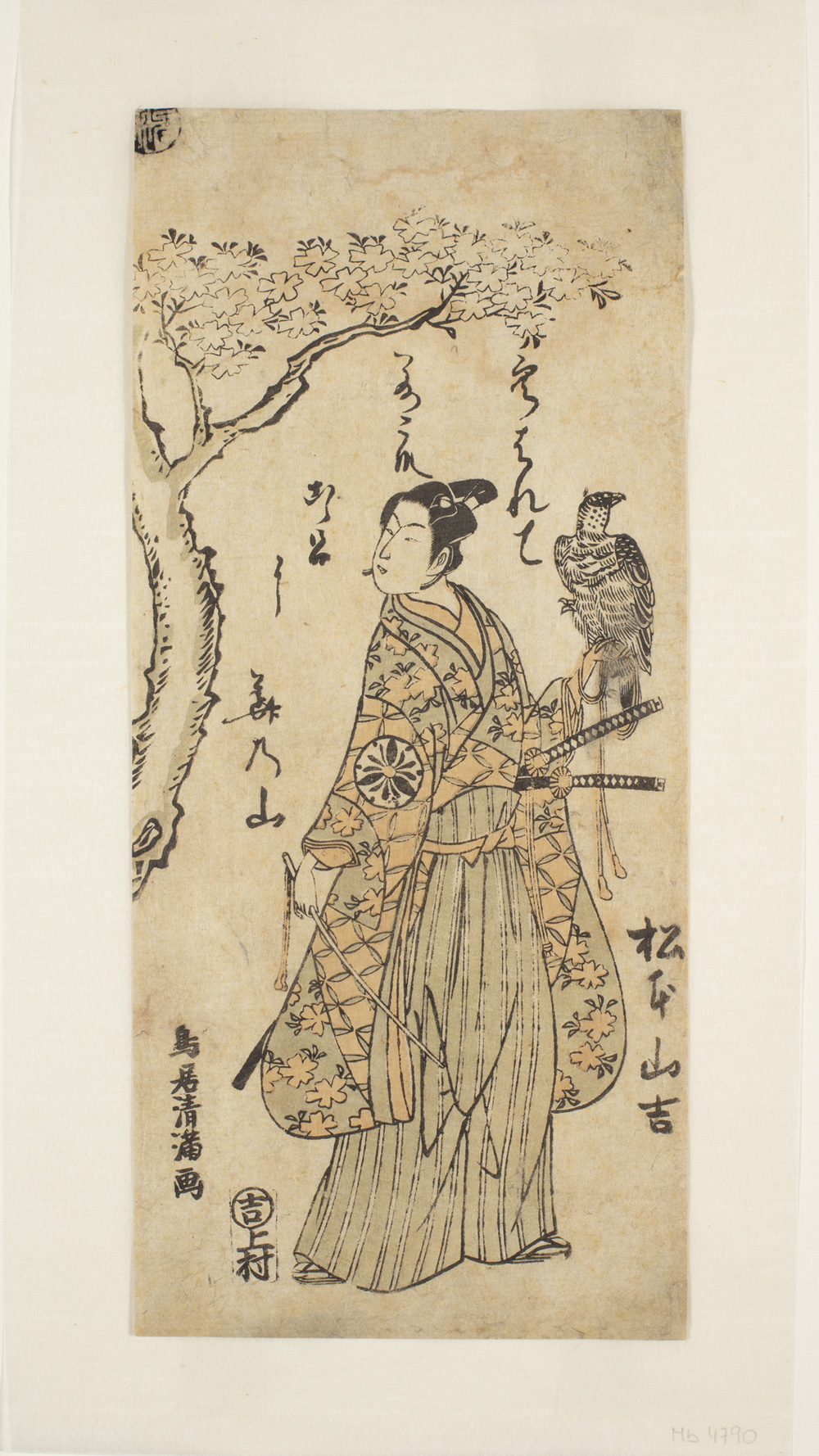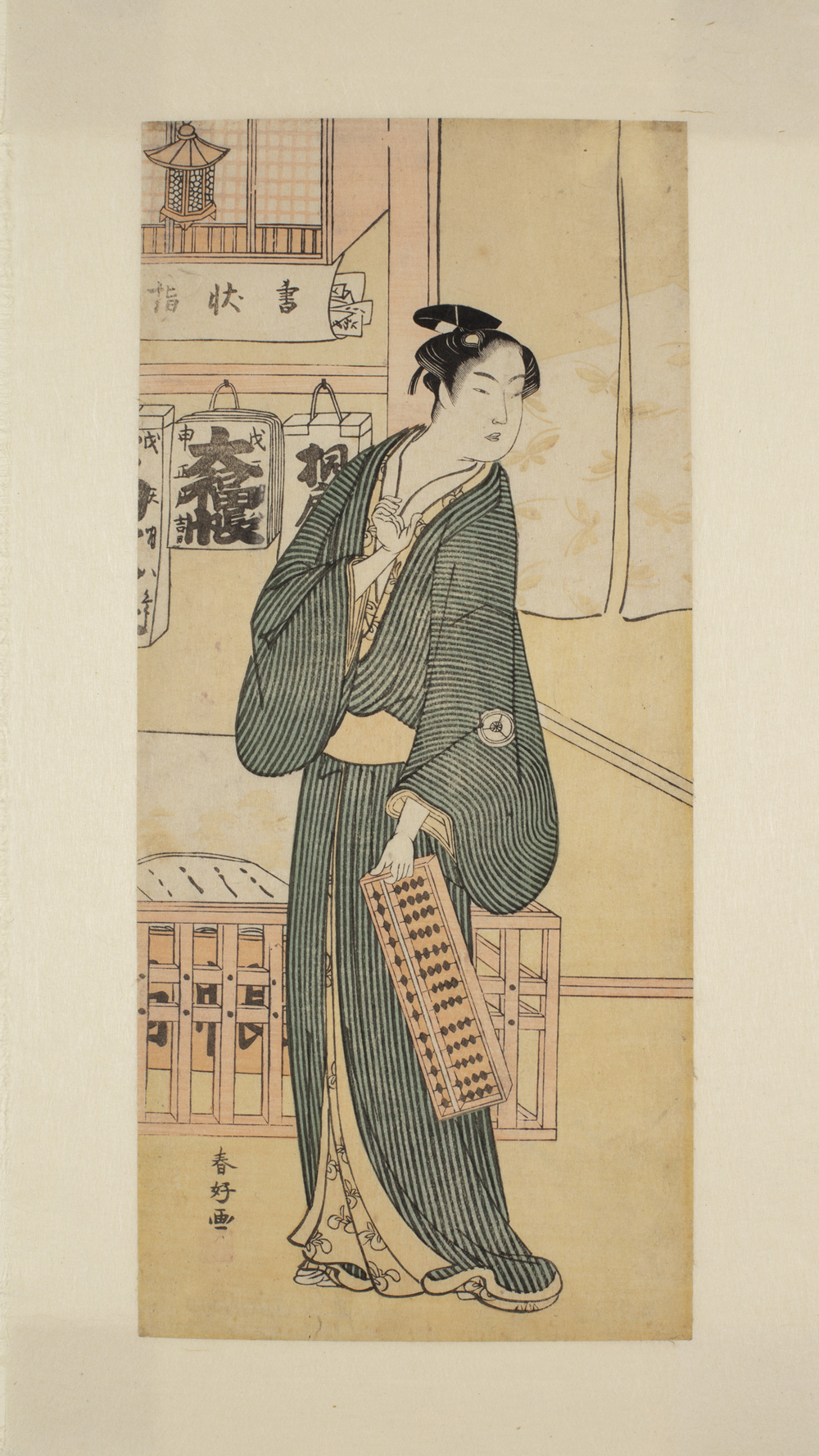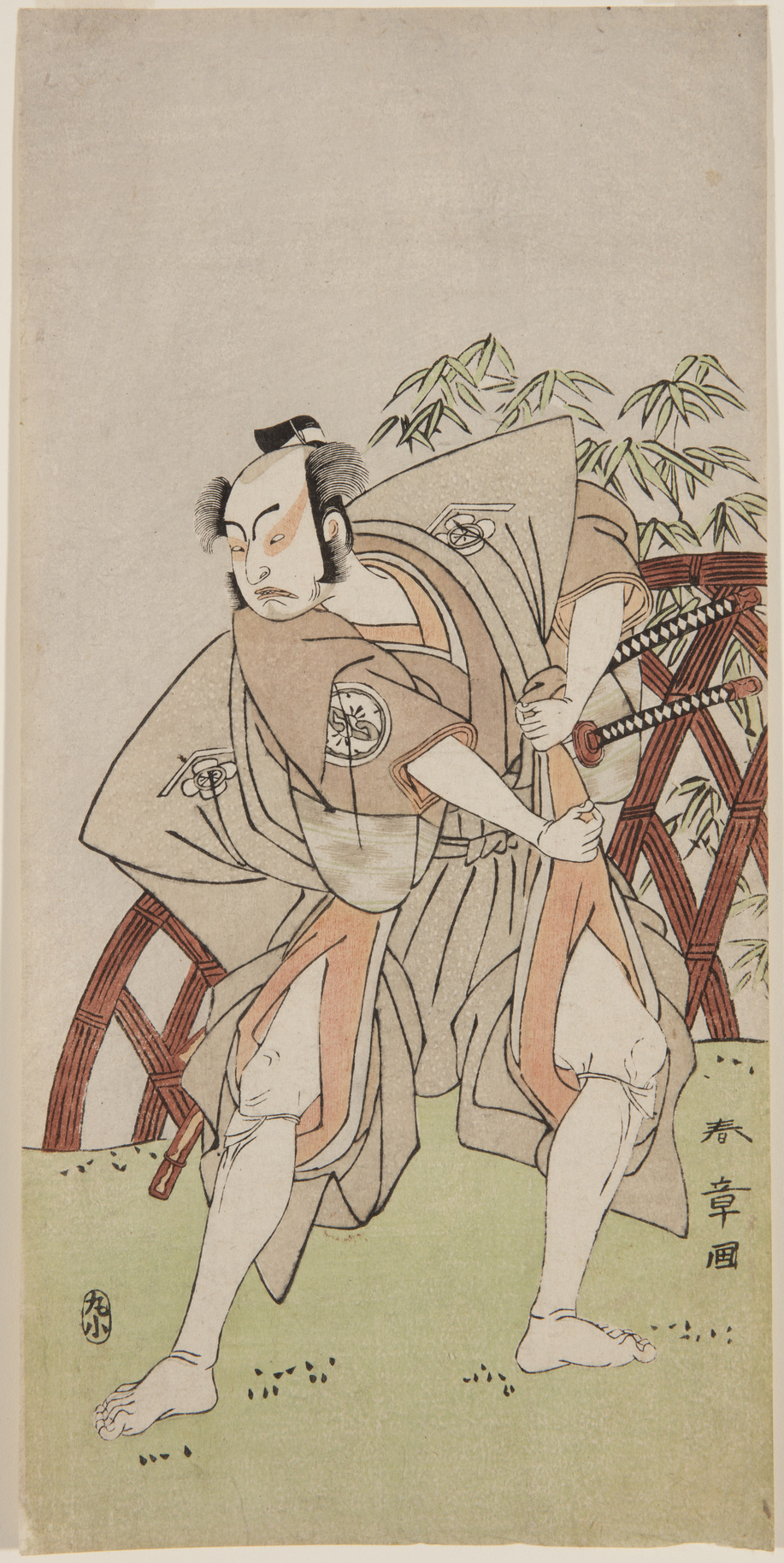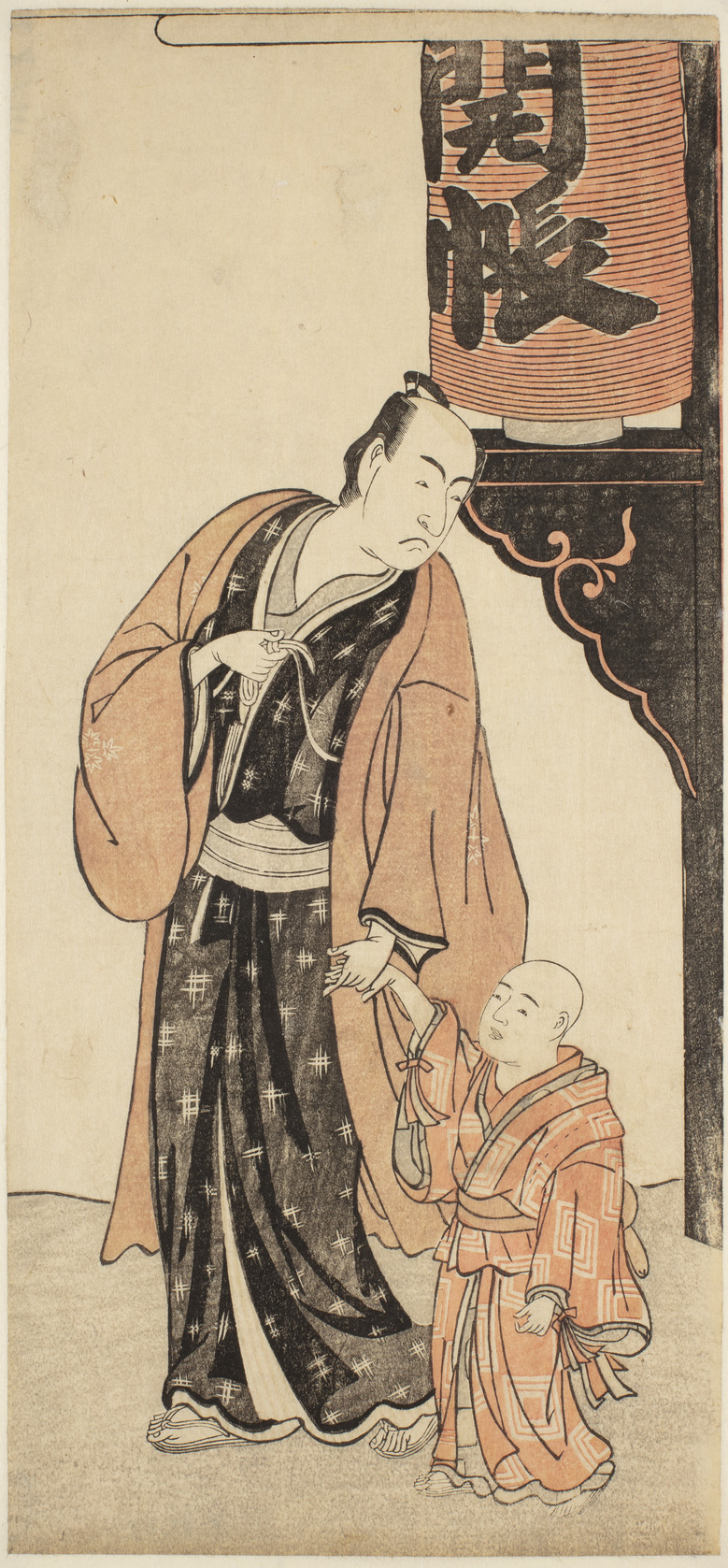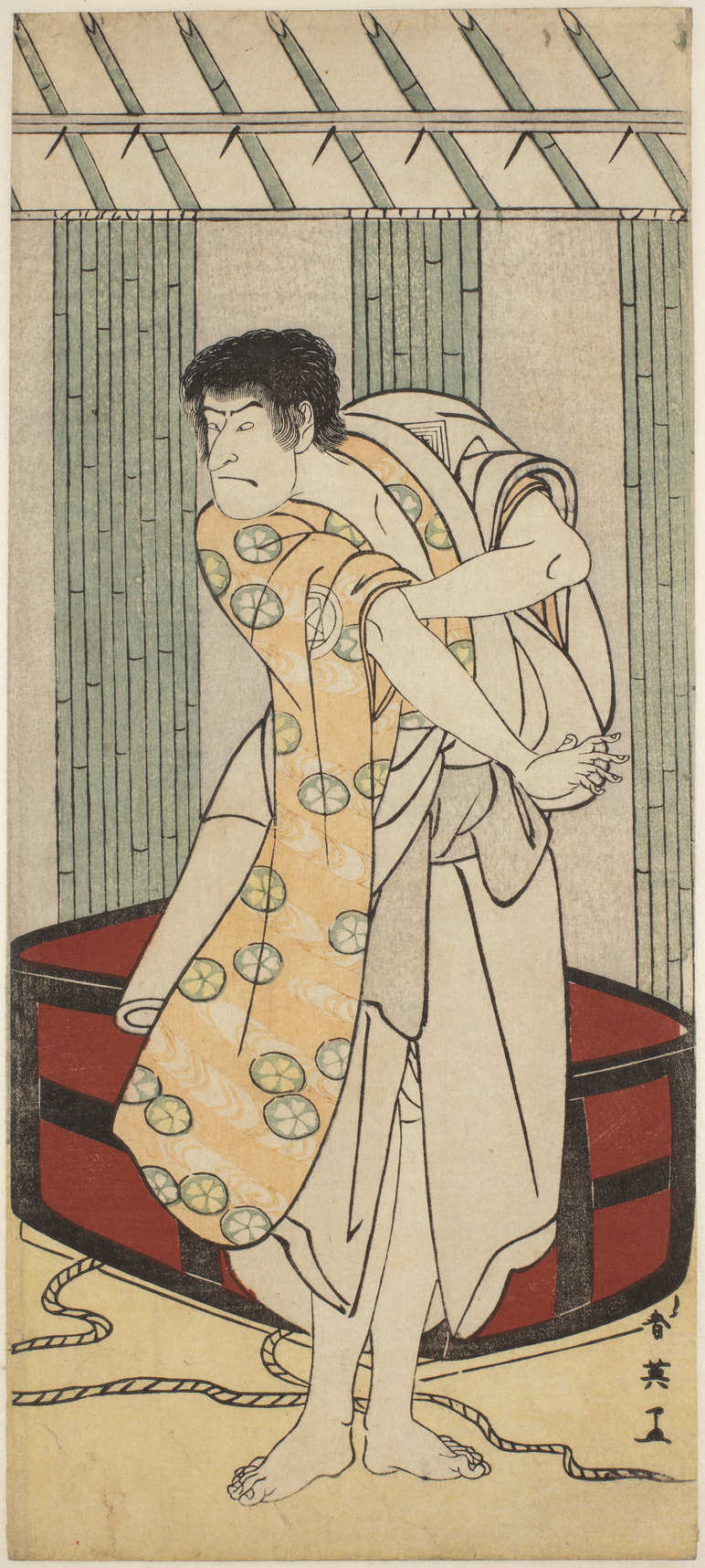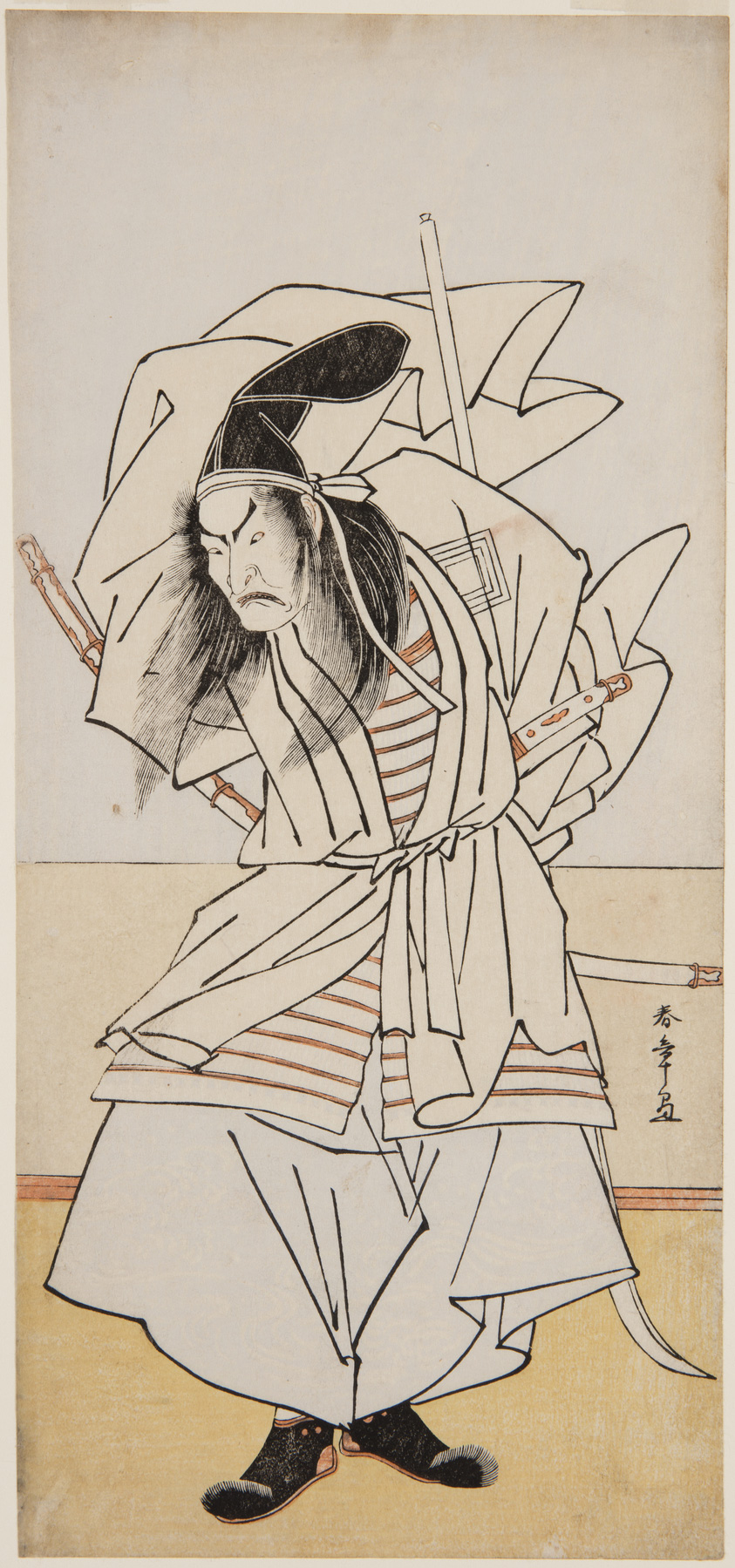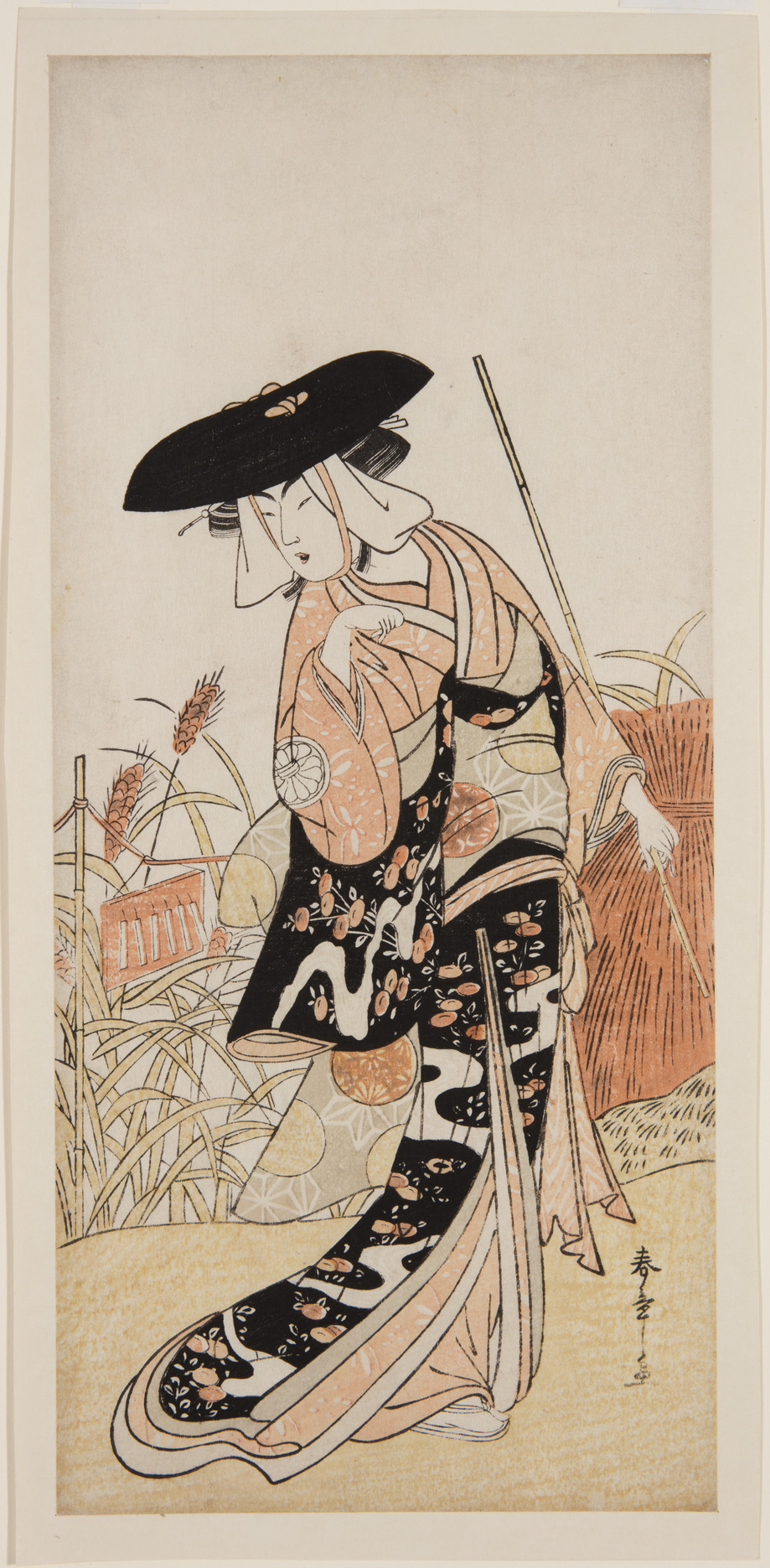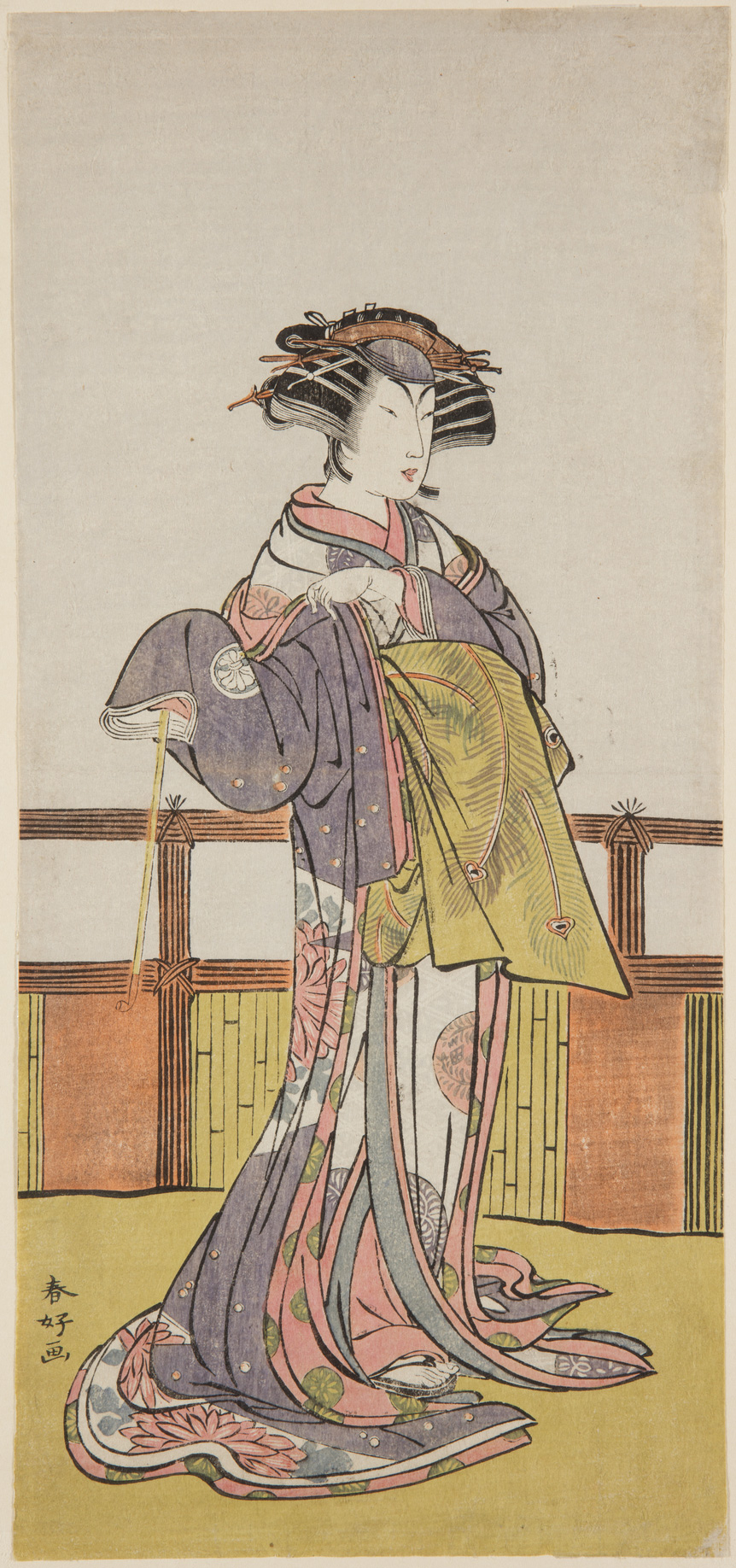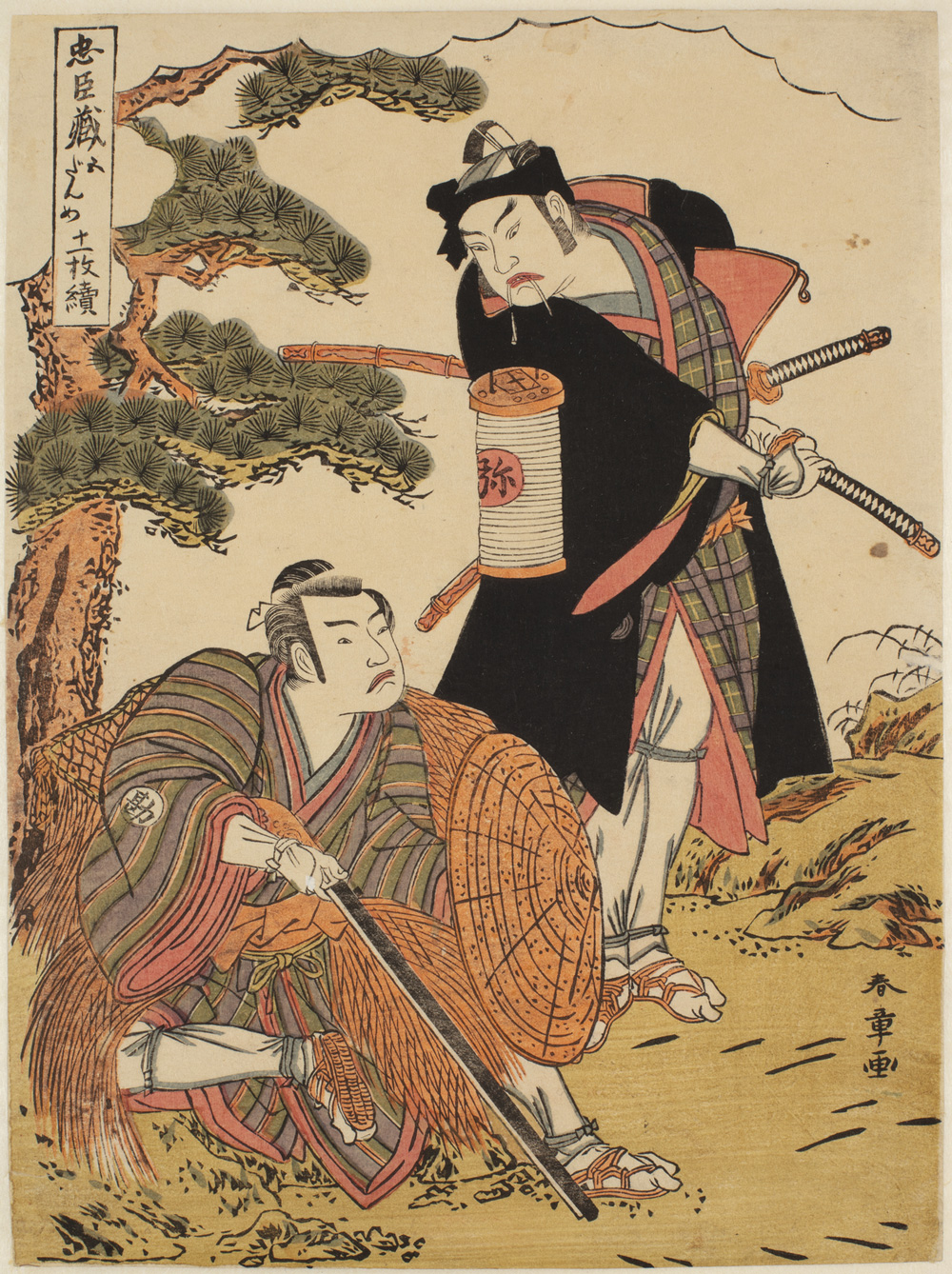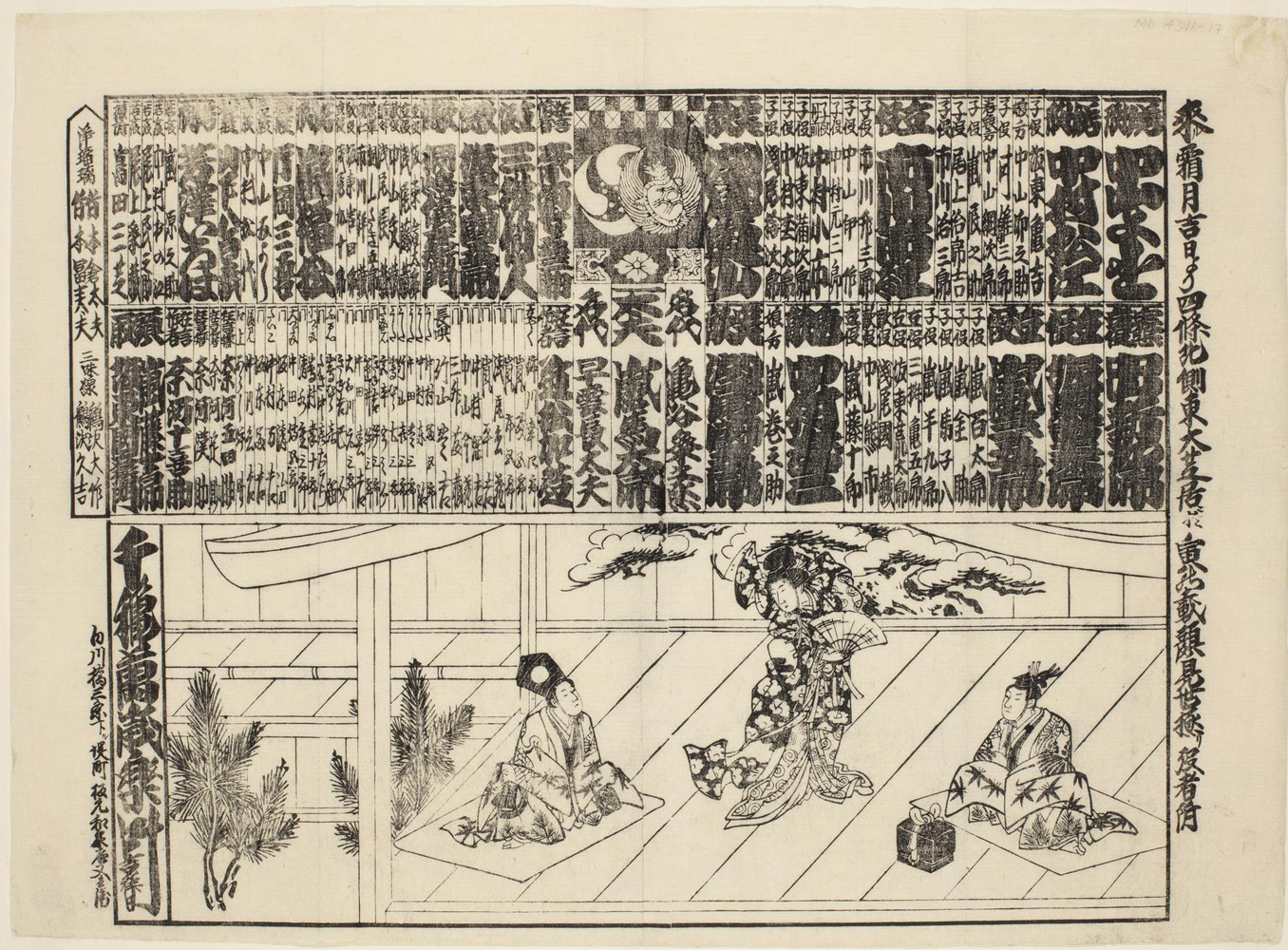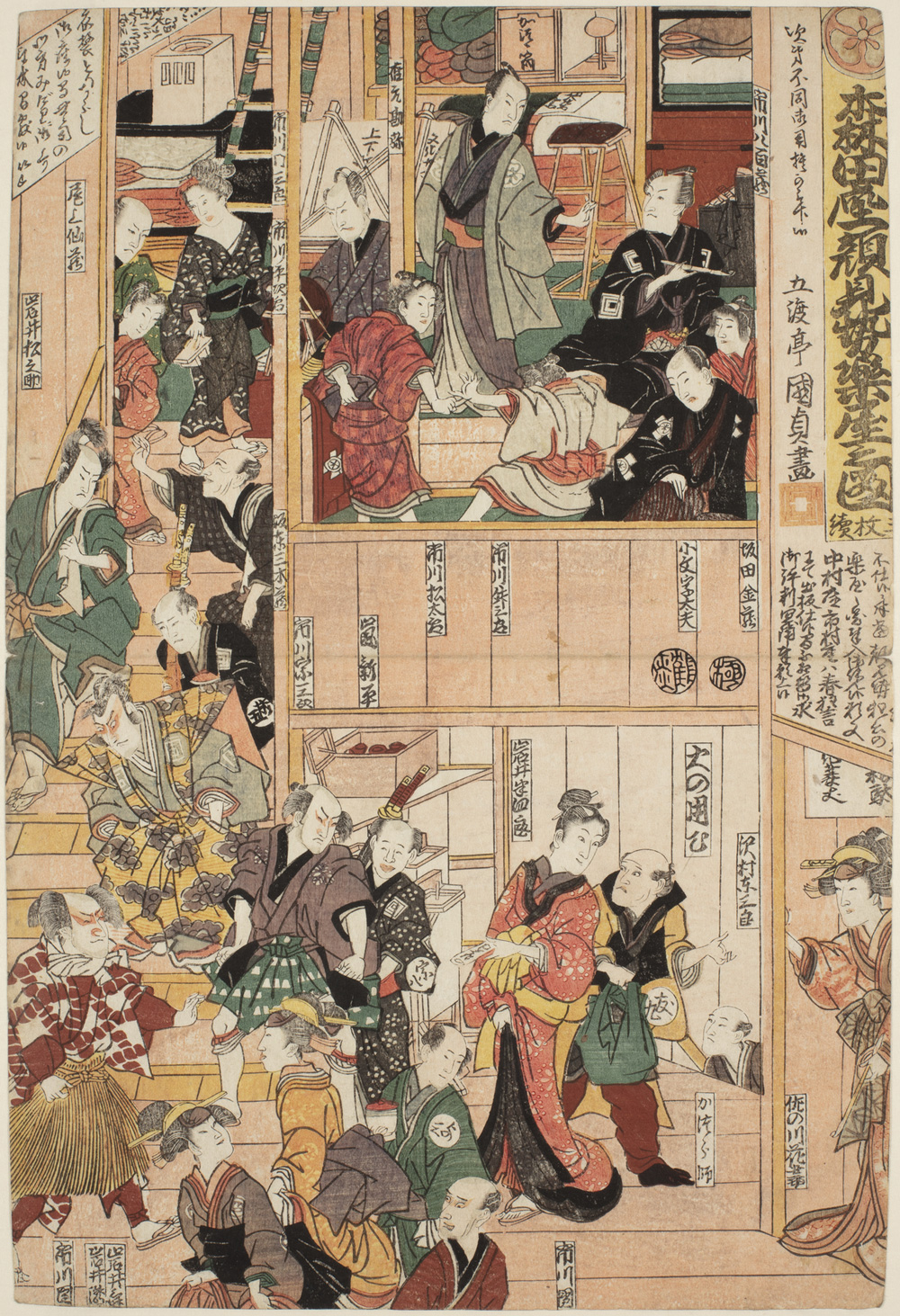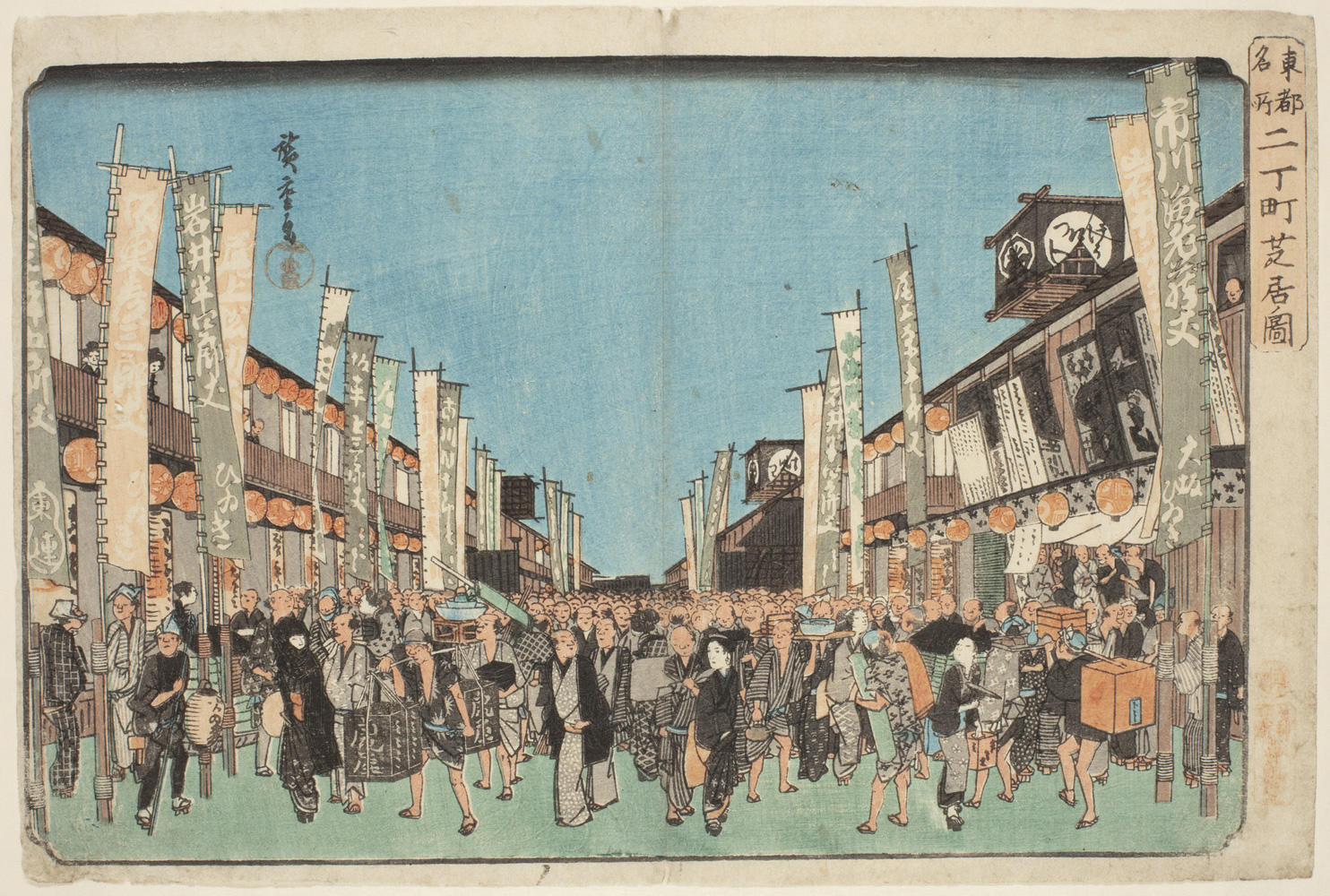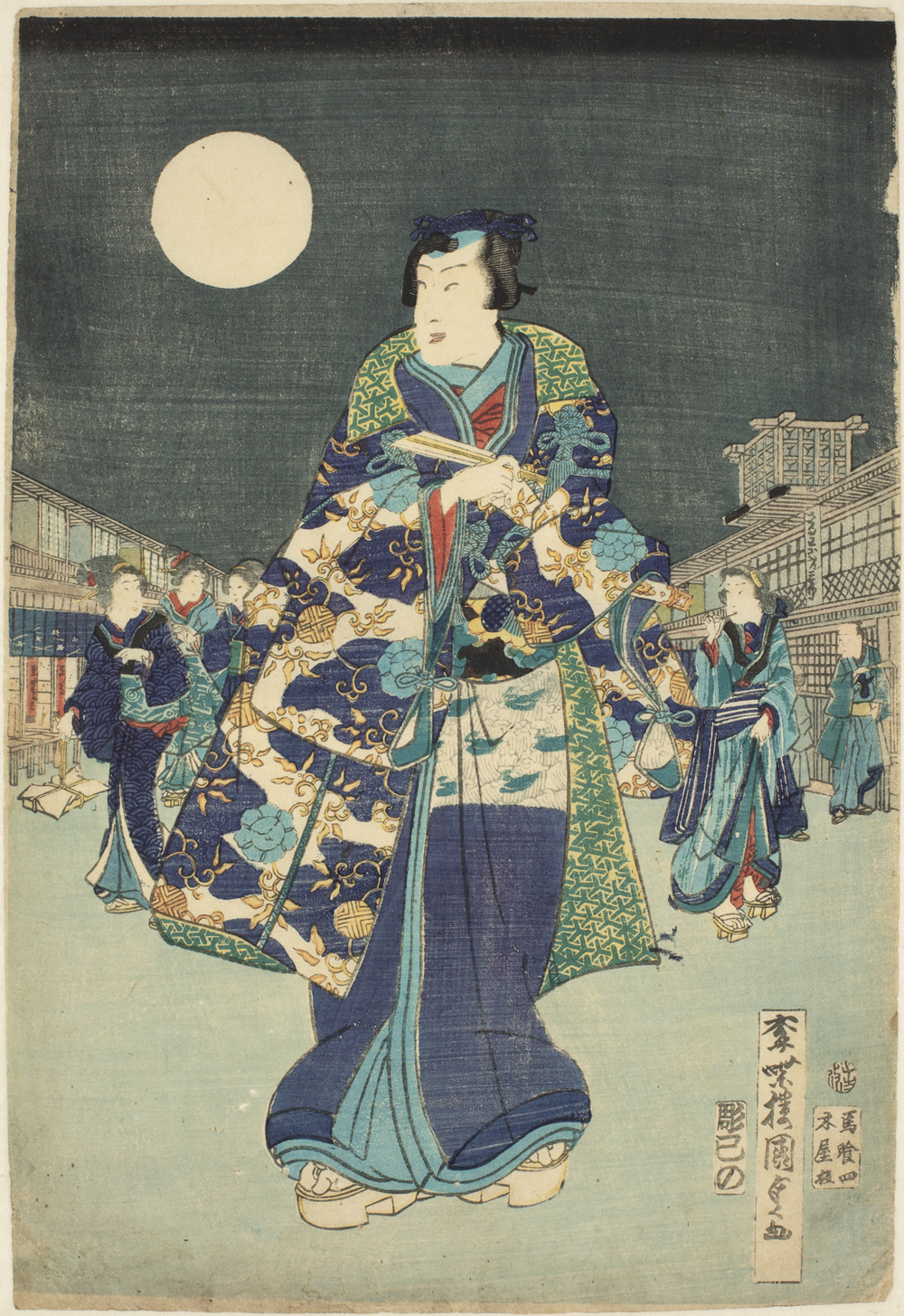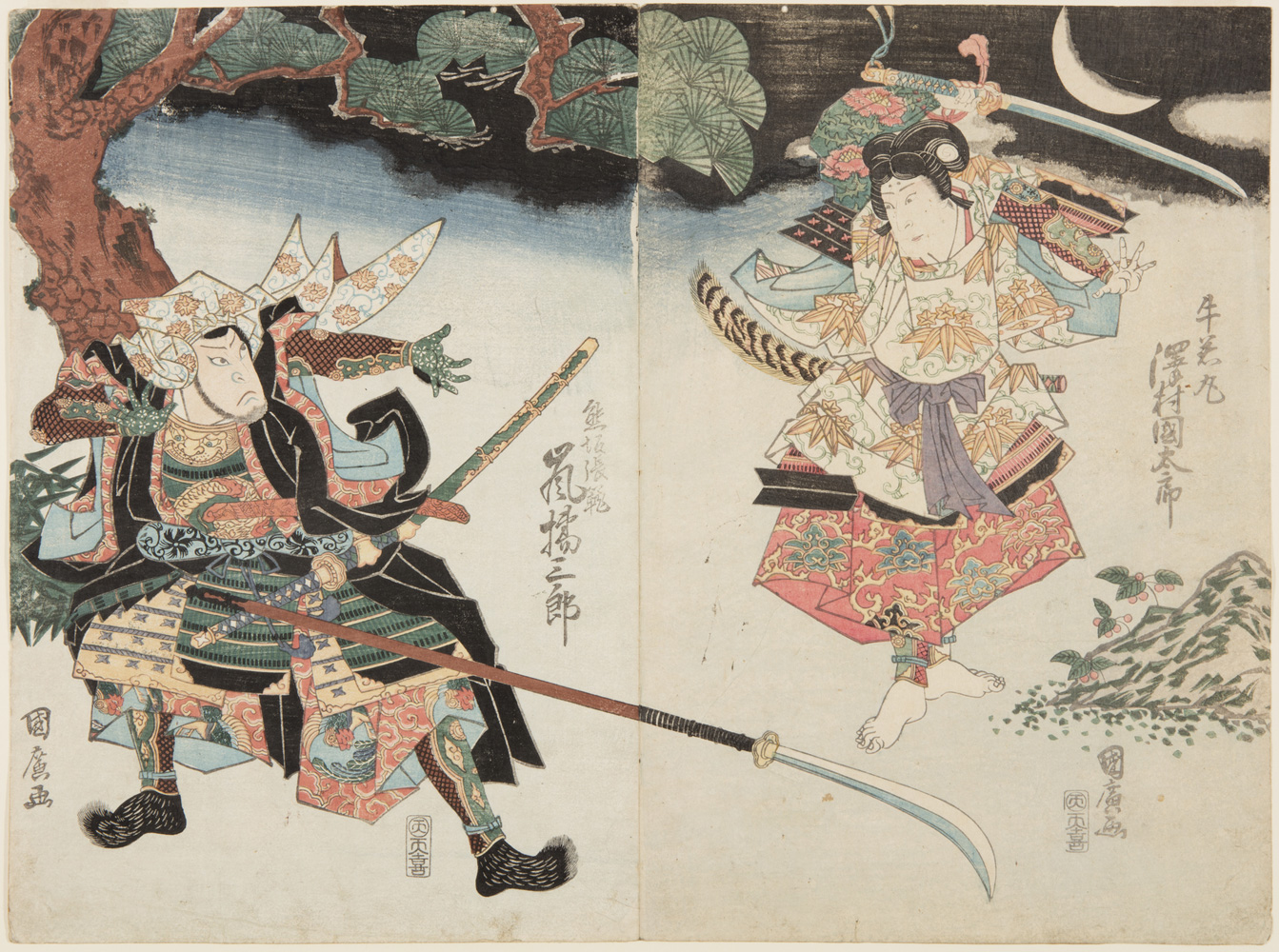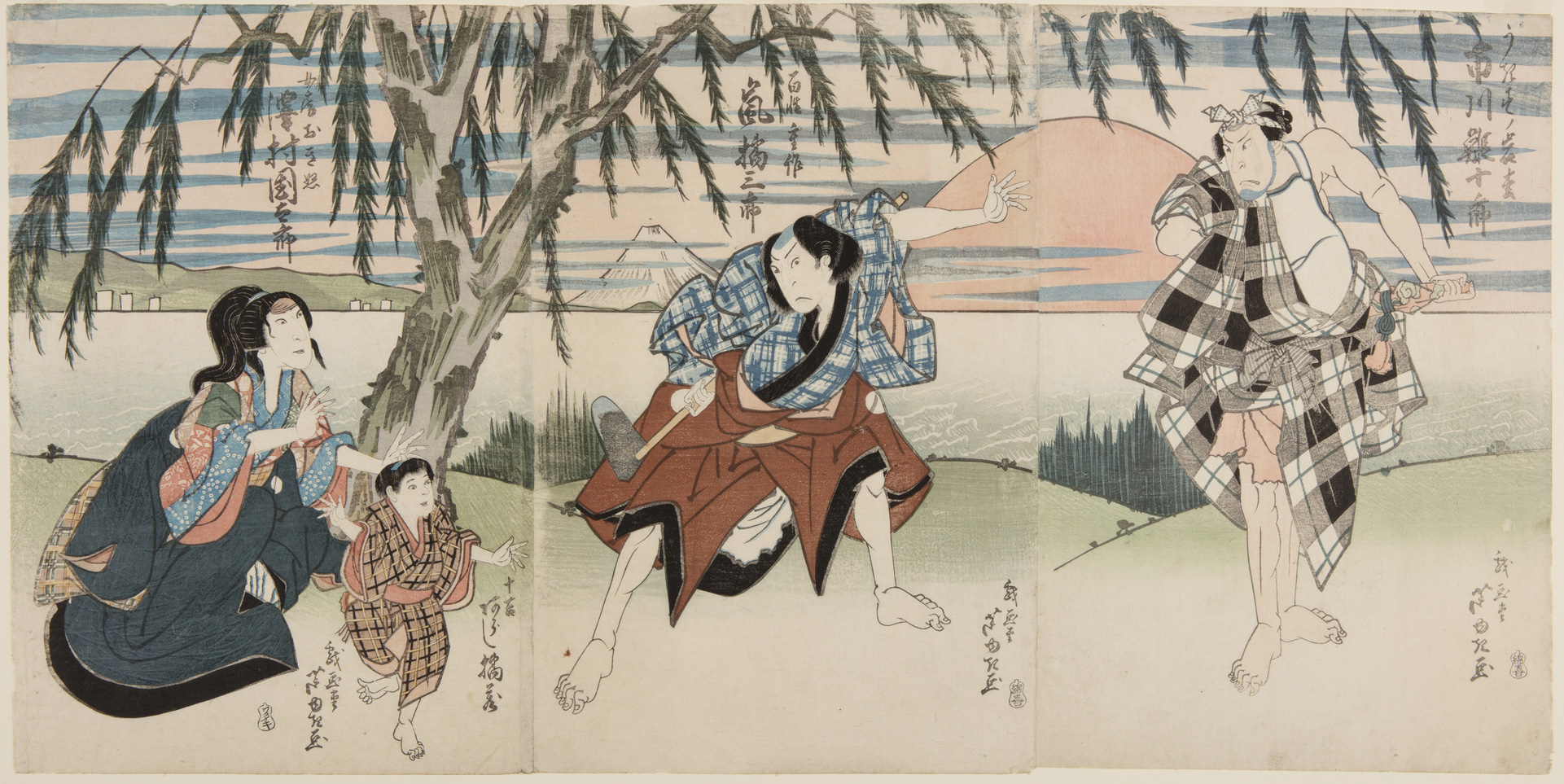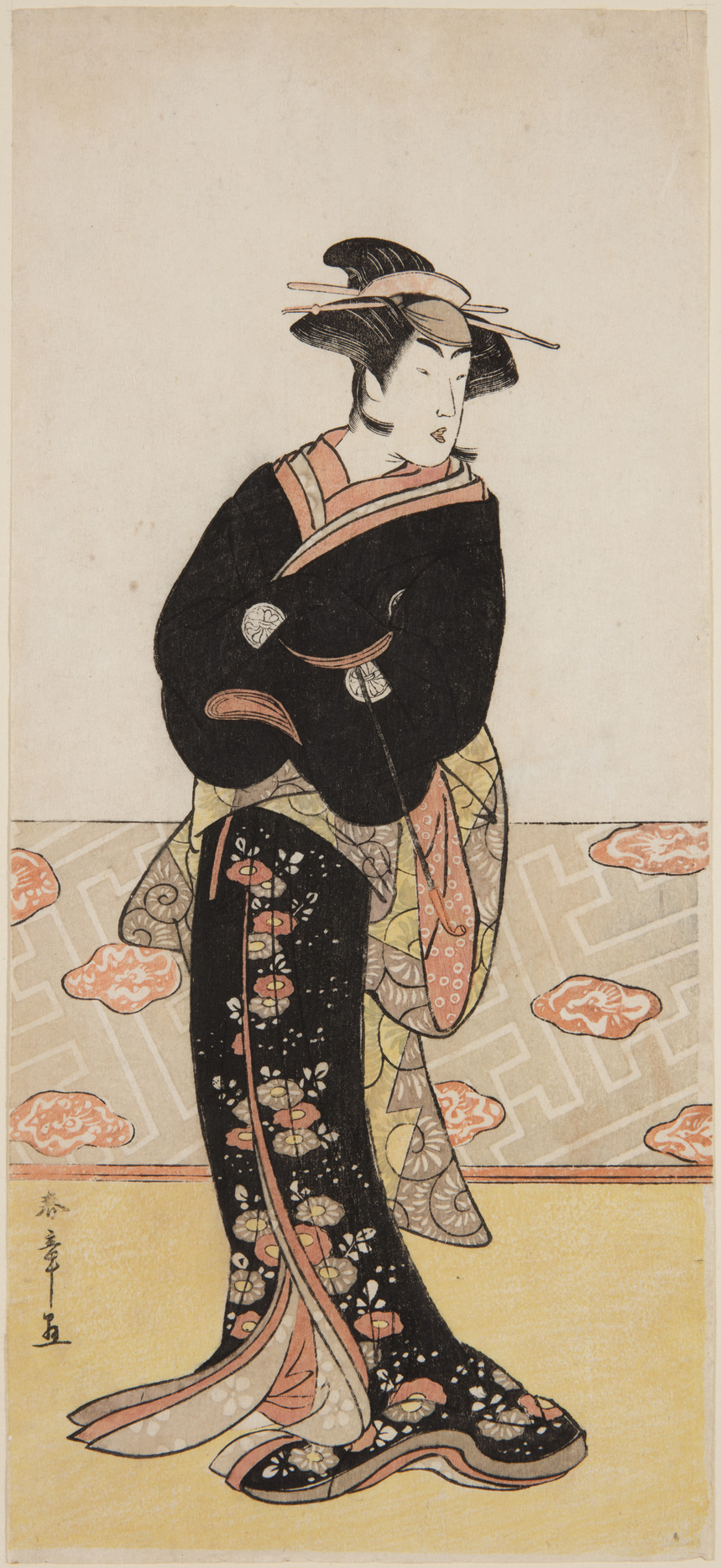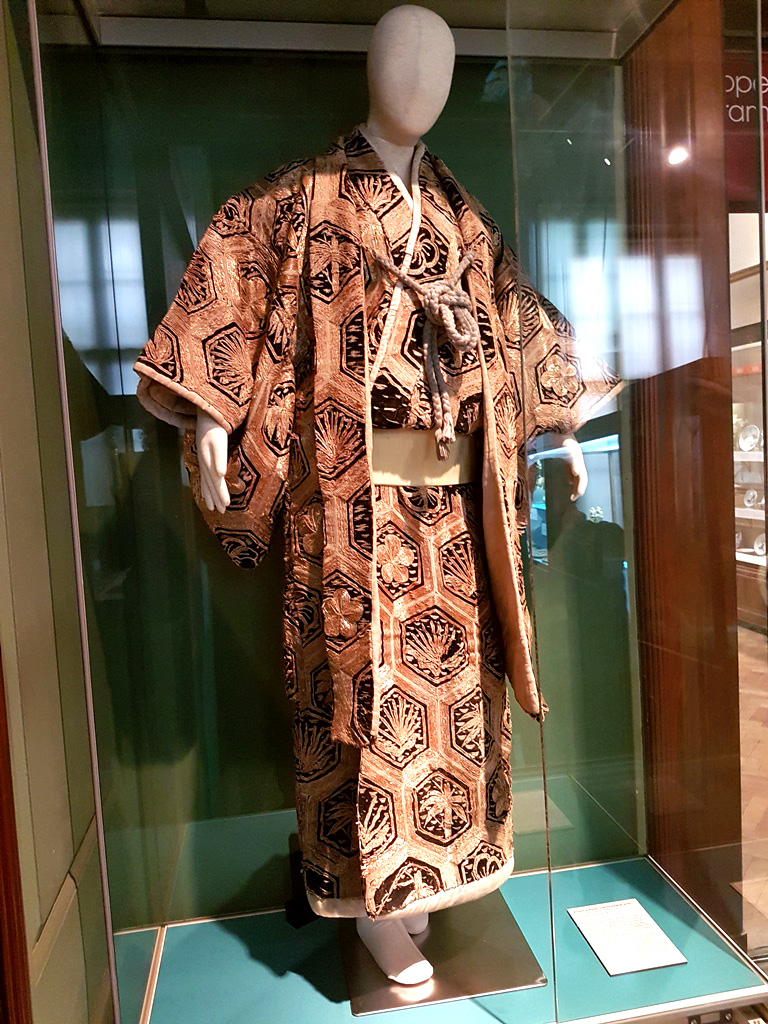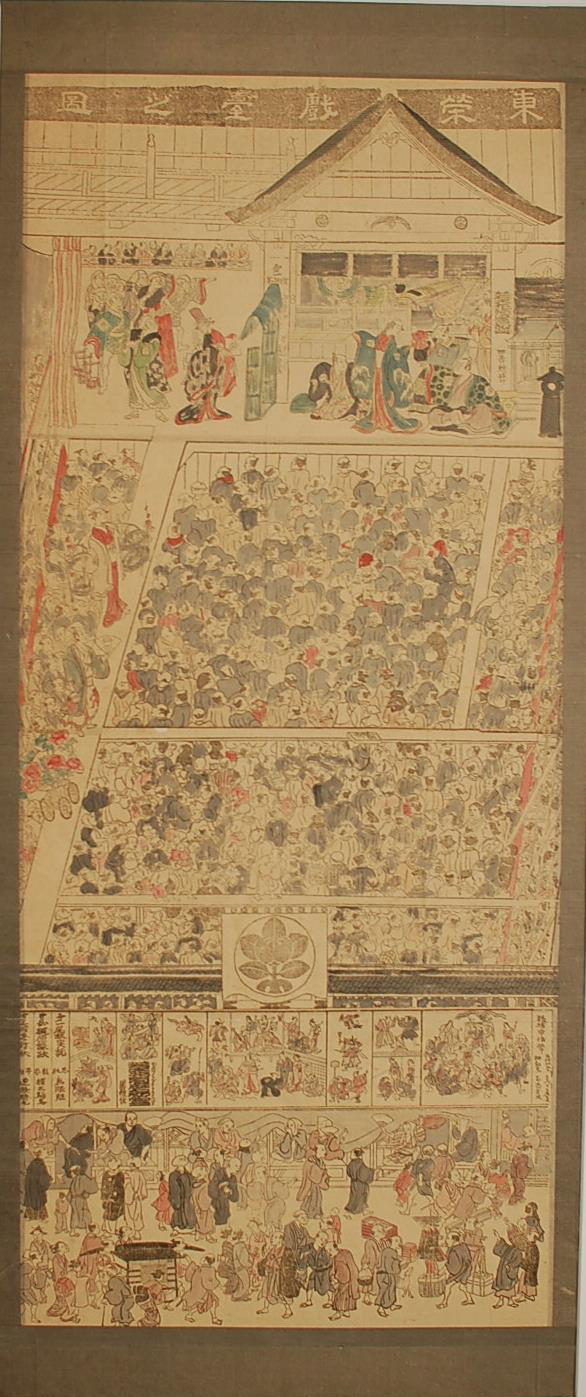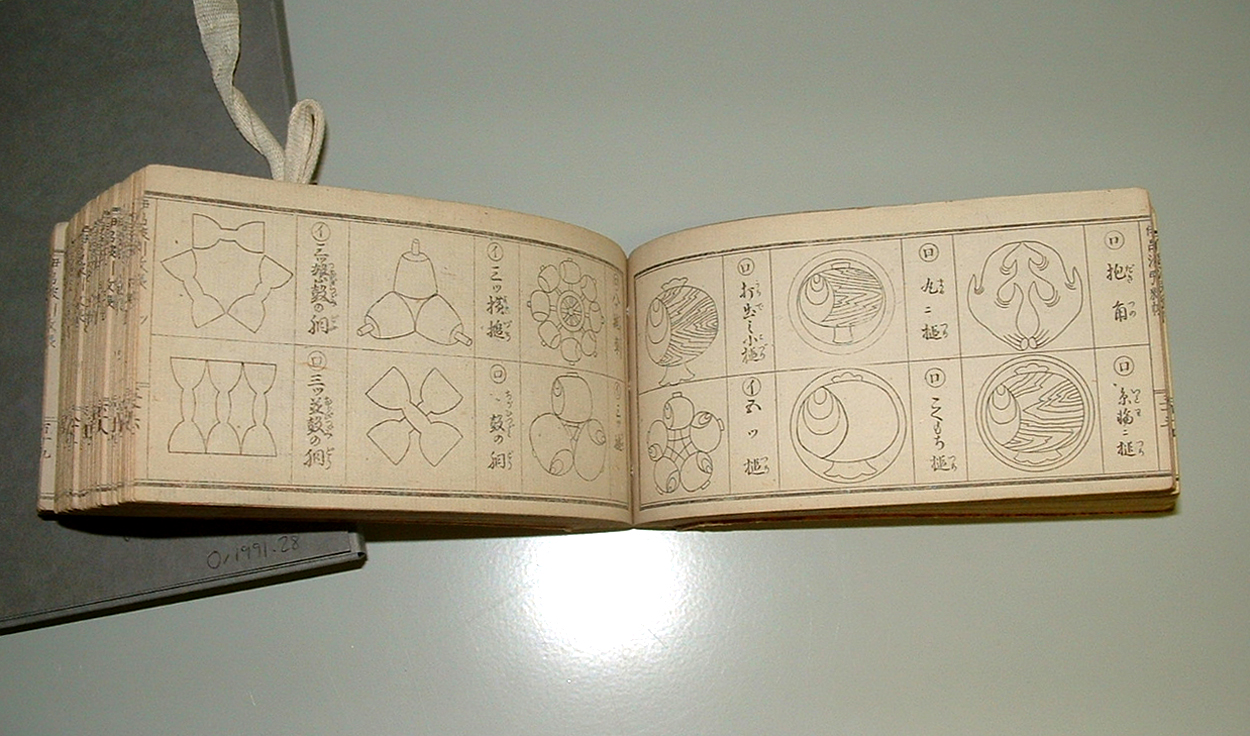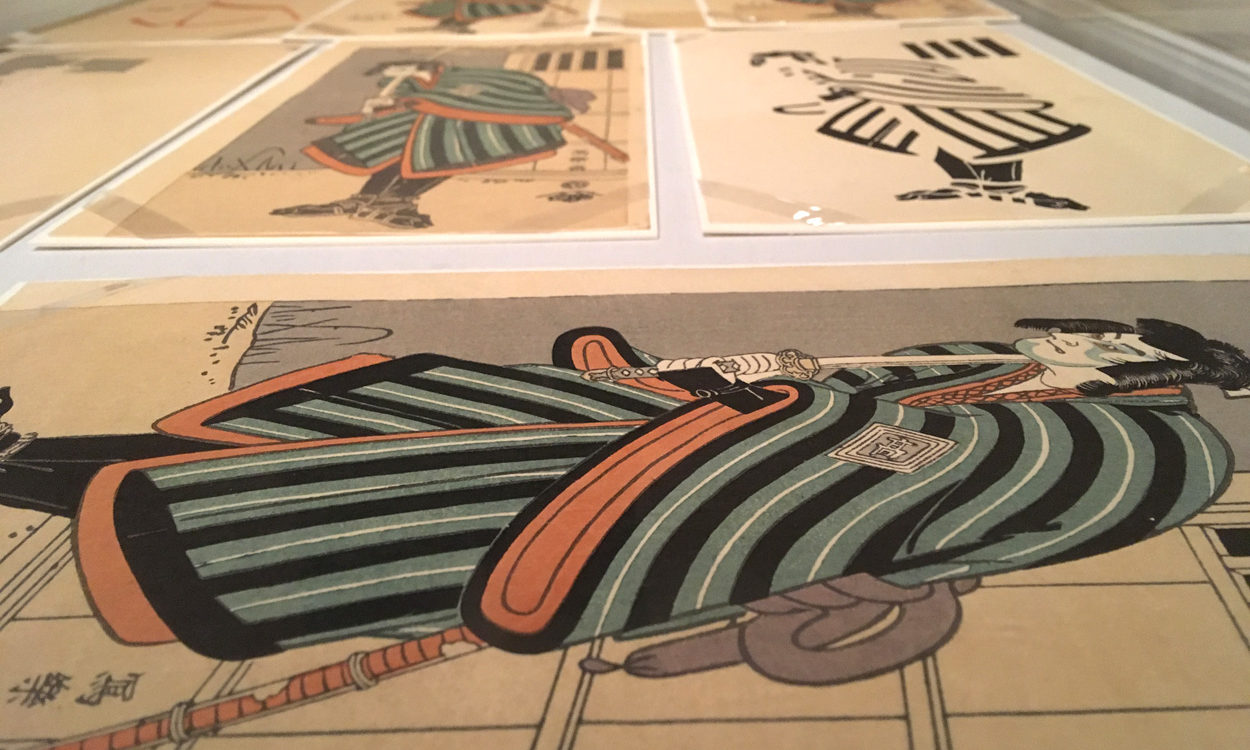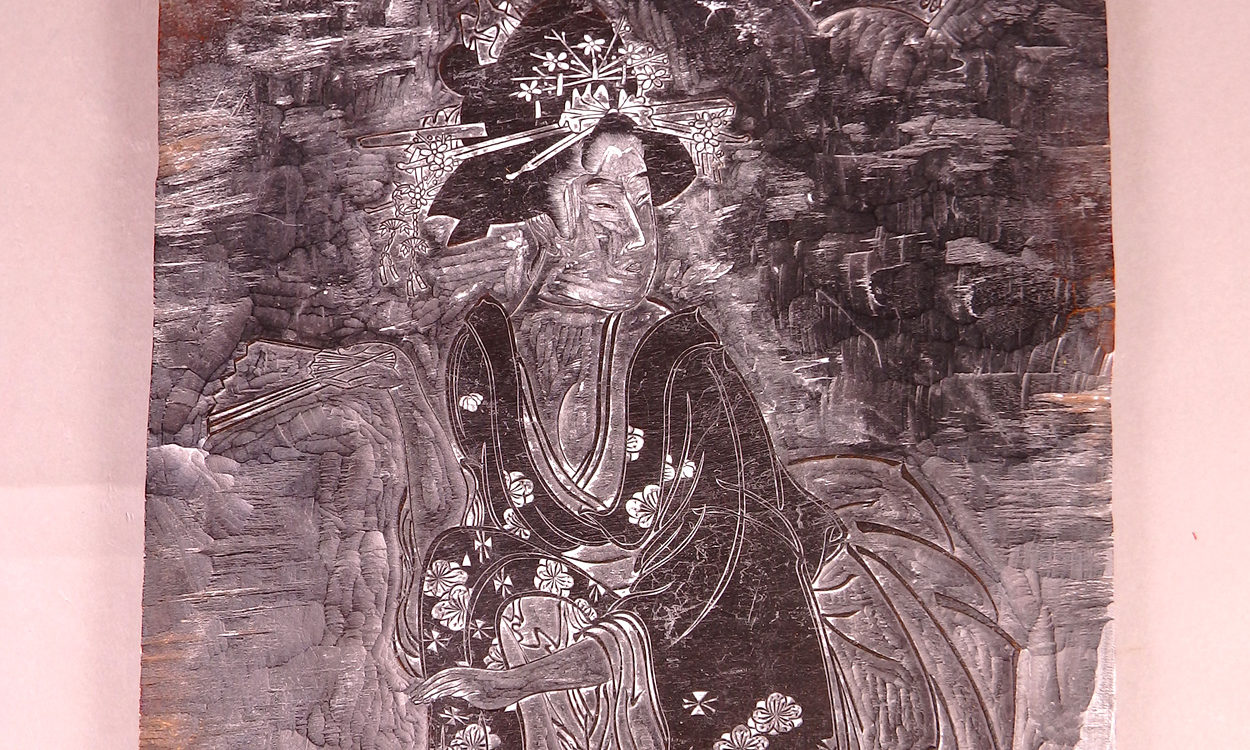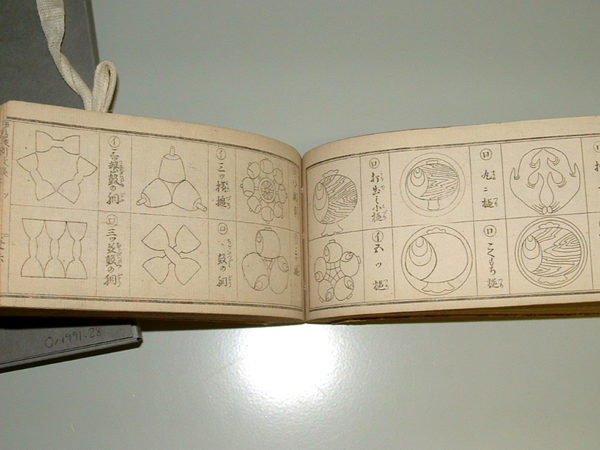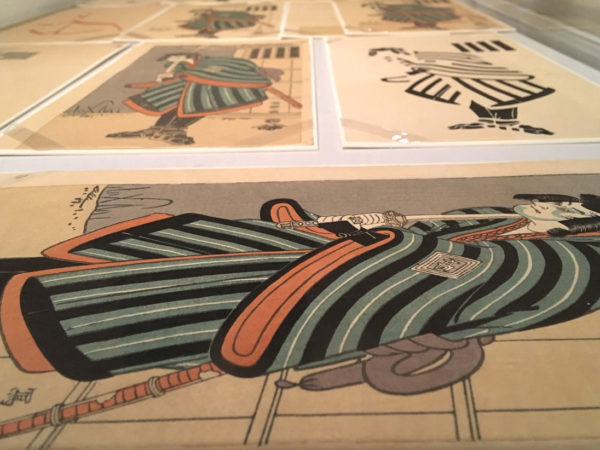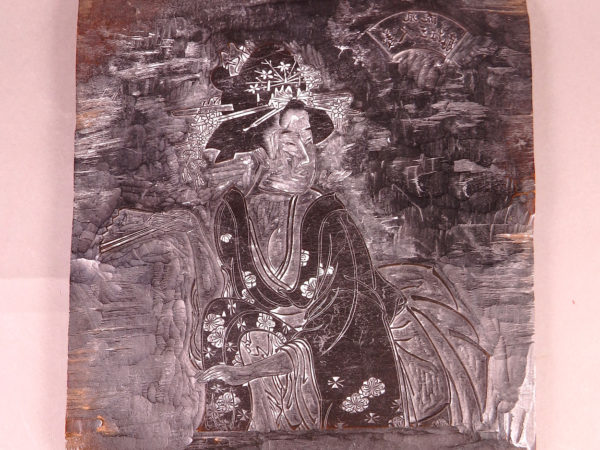12 January - 12 May 2019
Masters of Japanese prints: Life in the city
In Japan in the Edo period (1603-1868), the Shōgun (military dictator) ruled over a hierarchical society. At the top were the samurai warrior class and regional lords (daimyō), then came farmers, and at the bottom, merchants and other townspeople.
Japanese cities, especially Edo (today’s Tokyo), grew rapidly. Despite being lowest in the social order, many merchants and townspeople were comfortably off. They could afford fine fashion, trips to restaurants and the kabuki theatre as well as the services of courtesans (high-class prostitutes).
City residents and visitors were avid customers for images of these city pleasures, or ‘floating world’ as it was sometimes called. This fuelled a boom in woodblock printing, as artists worked with publishers and print workshops to supply demand.
This exhibition is selected from Bristol Museum’s collection of 500 Japanese woodblock prints.
This exhibition is the second of three that will showcase Bristol Museum & Art Gallery’s Japanese woodblock prints, one of the top five regional collections in the UK.

This exhibition was developed with a Jonathan Ruffer Curatorial Research Grant from Art Fund. Thank you to our Exhibition Sponsor Inside Japan.


Thriving cities
By the 1700s Japan’s capital city Edo (now known as Tokyo) had more than a million inhabitants. It was one of the largest cities in the world. Kyoto, the former capital and the trading city Naniwa (now known as Osaka) each had over 300,000 citizens.
All these townspeople needed to be fed, housed and entertained. Woodblock prints give us glimpses into the complex urban life of Japan at the time.
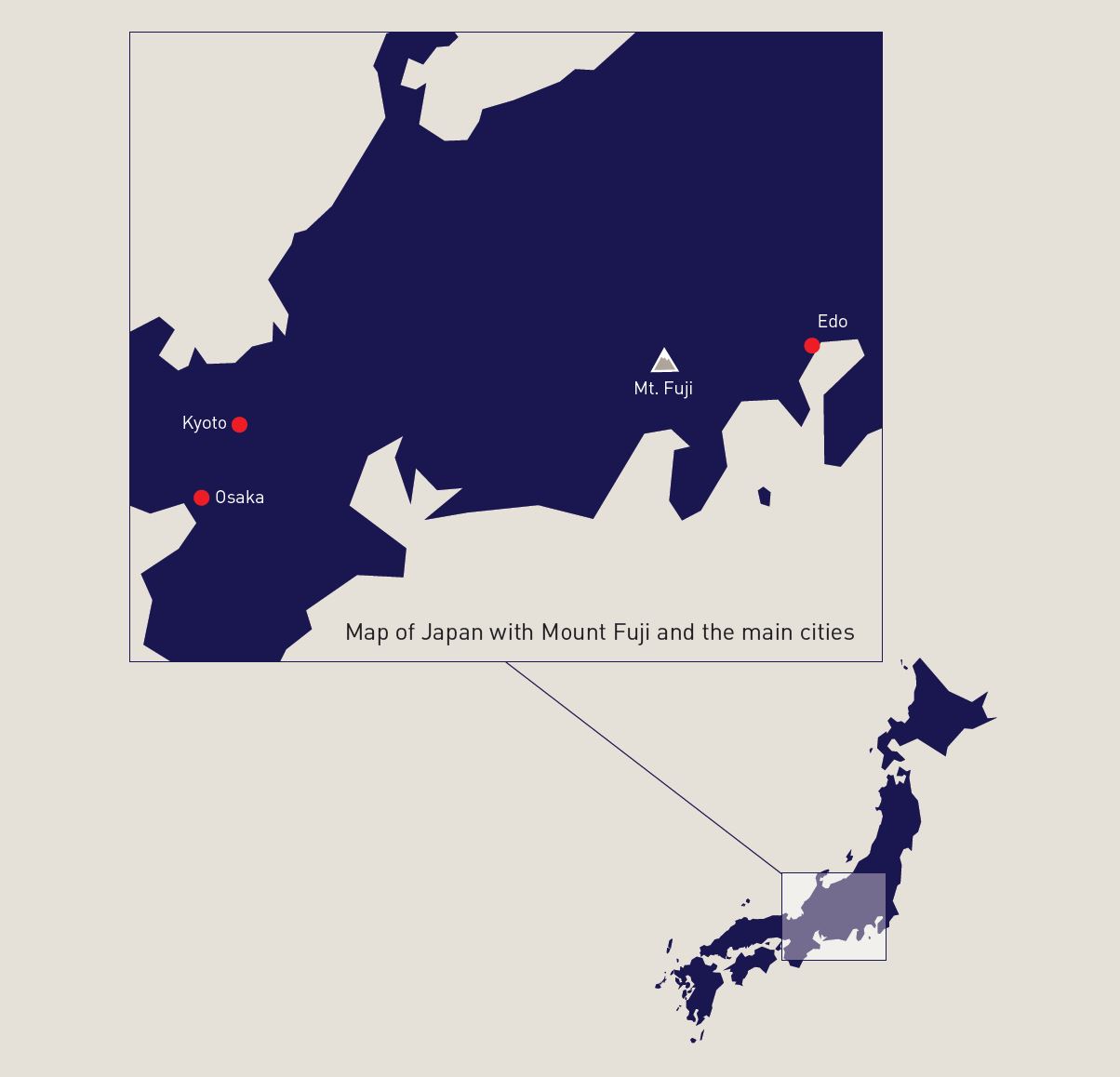
City entertainments
People in Edo (Tokyo) and other cities could enjoy a wide range of entertainments. They could watch performances of theatre, puppet theatre and acrobatics, visit temples and shrines and take part in the many seasonal fairs and festivals.
For those with money, fashion and shopping were important pastimes. Customers could purchase an ever-changing range of elegant goods although they had to be careful not to be seen to be too lavish or to ‘get above their station’ socially. The government of the Shōgun (military dictator) passed many laws to regulate spending (‘sumptuary laws’), aiming to control society and to avoid political threats.
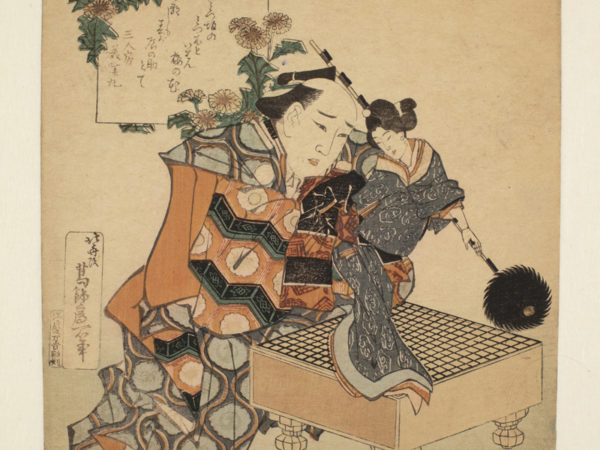
Puppeteer with a Puppet on a Go Board, about 1820–30 by Katsushika Hokusai (1760–1849)
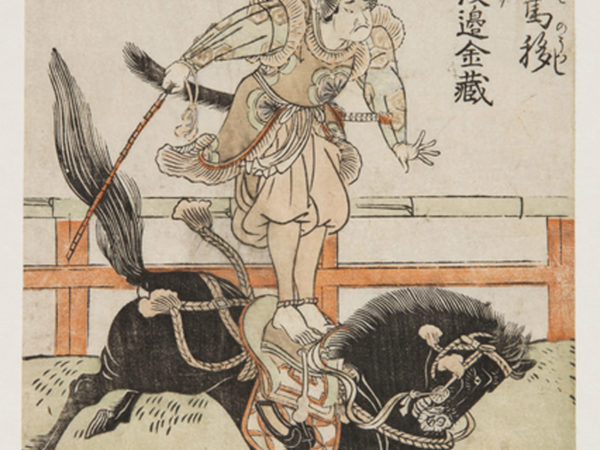
Kamo horse-riding moves: Watanabe Kinzō, 1772 by Kitao Shigemasa (1739–1820)

Osaka circus stunt rider: Murakami Heizō, 1772 by Kitao Shigemasa (1739–1820)

In Sensō-ji Temple, 1782 by Torii Kiyonaga (1752–1812)
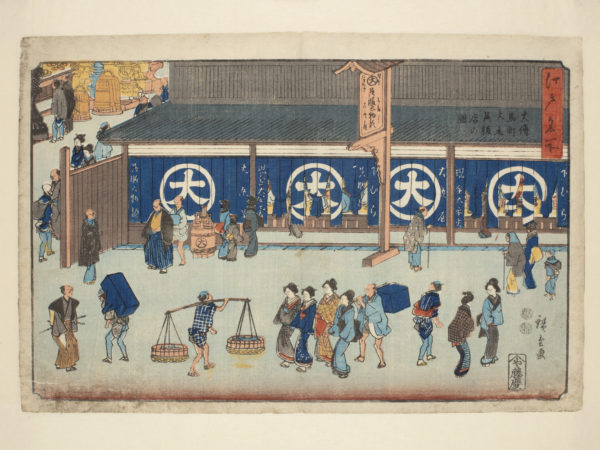
The Daimaru Dry-goods Store in Ōdenmachō, 1847–52 by Utagawa Hiroshige I (1797–1858)

Two Daughters of a Bannerman with a Serving Woman and a Young Man, 1783 by Torii Kiyonaga (1752–1812)
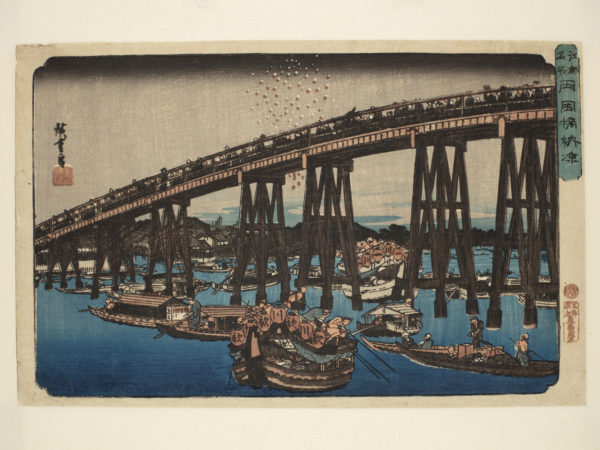
Enjoying the Evening Cool at Ryōgoku Bridge, 1832–34 by Utagawa Hiroshige I (1797–1858)
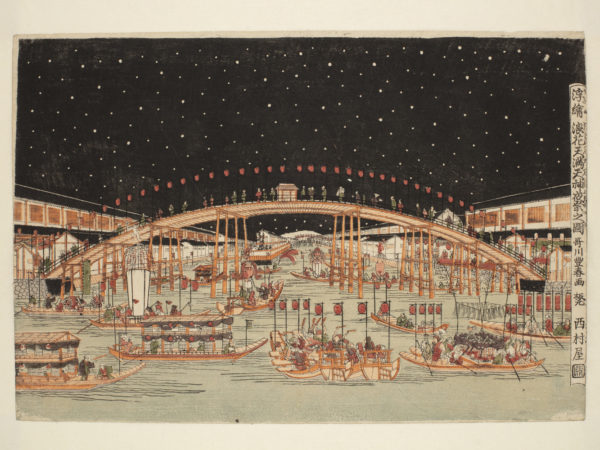
The Tenma Tenjin Festival at Night in Naniwa (Osaka), a Perspective Picture, about 1773-78 by Utagawa Toyoharu (1735–1814)
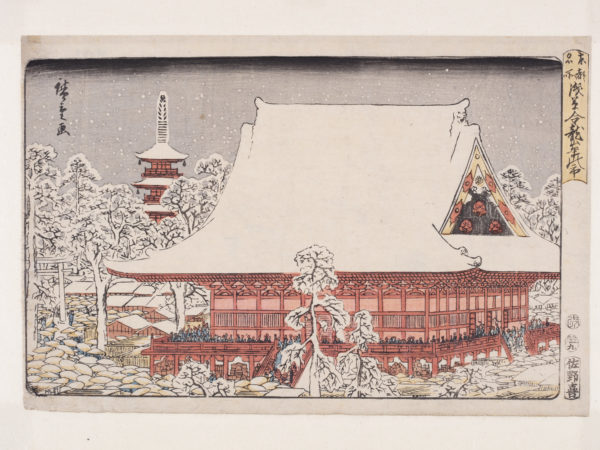
Year-end Fair at Kinryūzan Temple in Asakusa, 1782 by Utagawa Hiroshige I (1797–1858)

The Year-end Fair at Asakusa, 1861 by Utagawa Hirokage (active 1855–65)
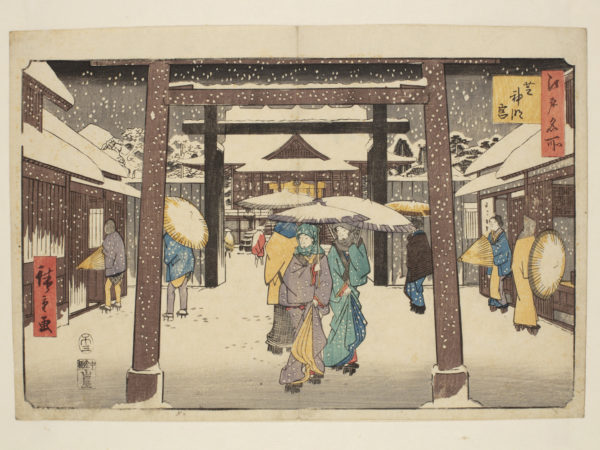
Shinmei Shrine in Shiba, 1858 by Hiroshige II (1826–69)
Eating and drinking
Residents of the capital Edo (Tokyo) and other Japanese cities had many options for eating and drinking out. This was one of the pleasures of city life for those who could afford it.
People could enjoy refreshments at tea-houses and restaurants at scenic spots on river-banks and by temples. For a novel experience, they could climb aboard a floating restaurant.
The large number of single men who lived in Edo on a temporary basis as followers of daimyō (feudal lords) probably boosted the trade in fast foods such as sushi, noodles and deep-fried tempura.
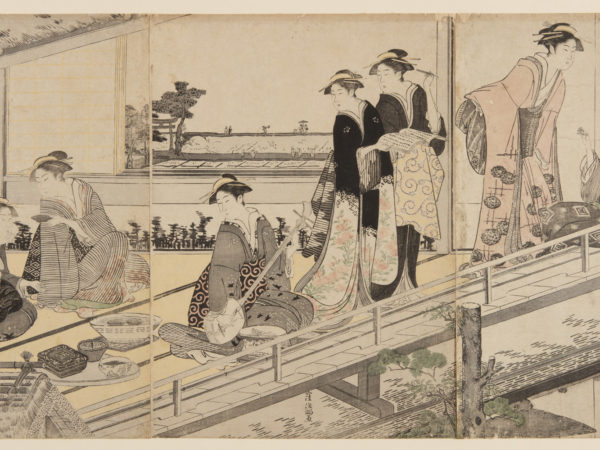
Women on a Tea-house Balcony, the Nakadaya in the Mukojima district of Edo, 1787–88 by Kubo Shunman (1757–1820)
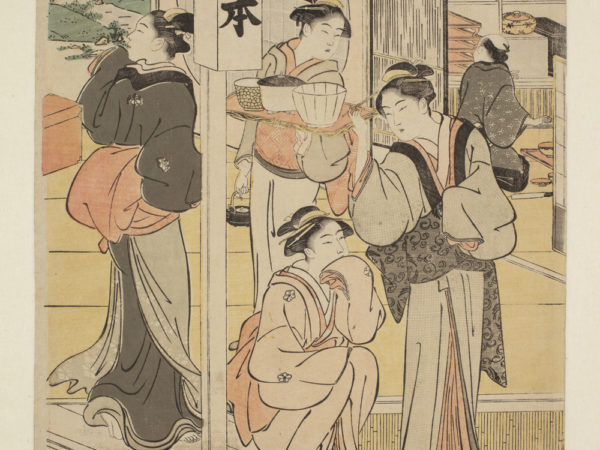
Preparations for a Party, 1791–93 by Katsukawa Shunshō (active 1780–1801)
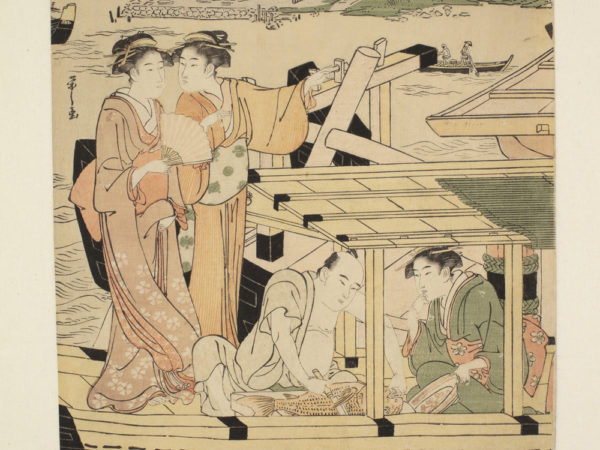
Pleasure Boats on the Sumida River beneath Shin-Ōhashi Bridge, about 1780 by Chōbunsai Eishi (1756–1829)
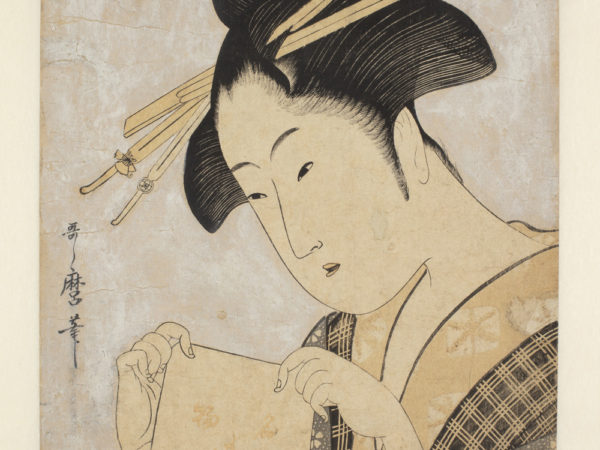
Cake shop waitress with a bag marked ‘Famous Rice-cakes’, 1796 by Kitagawa Utamaro I (1753–1806)

East Slope at Kanda Myōjin Shrine, 1832–38 by Utagawa Hiroshige I (1797–1858)
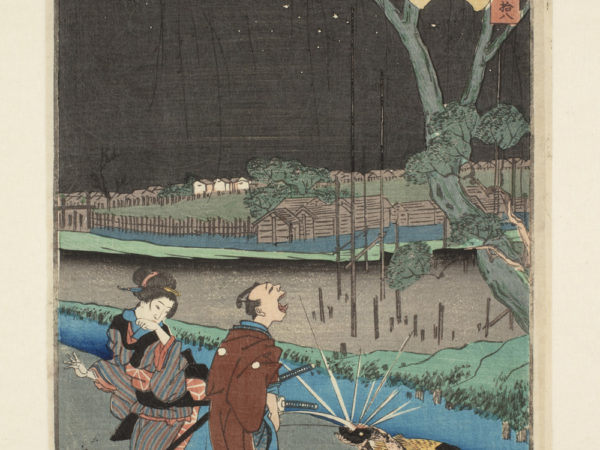
Night Scene at Horitahara in Asakusa, 1860 by Utagawa Hirokage (active 1855–65)
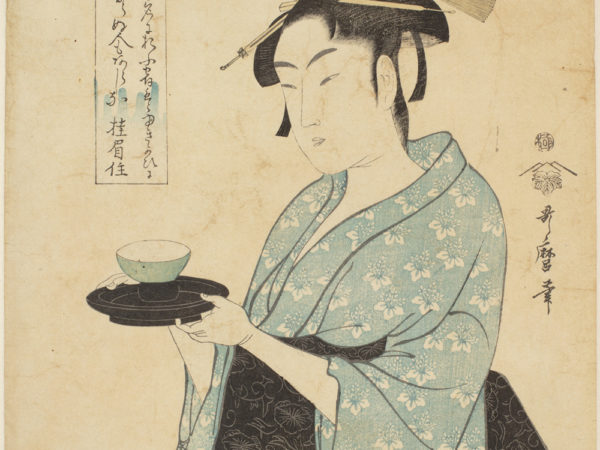
Okita of the Naniwaya teahouse, 1793 by Kitagawa Utamaro I (1753–1806)
Women of the ‘pleasure districts’
Japanese cities had high levels of prostitution. Depending on their wealth, men could buy a range of sexual services from women and men.
The government created special districts for prostitution in Edo (Tokyo), Osaka and Kyoto to try to keep the industry under control. Edo’s ‘pleasure district’, the Yoshiwara, was surrounded by a moat and had only one entrance. It contained brothels, theatres and tea-houses, a ‘floating world’ set apart from real life.
High-ranking courtesans (prostitutes) paraded through the streets of the ‘pleasure districts’ wearing the latest fashions to attract customers. They were among the celebrities of their age, and people bought colourful woodblock prints of this aspect of city life. However, prostitutes of any rank had little chance of leaving their employment, they were effectively enslaved.
Geisha also worked in the ‘pleasure districts’. They were professional entertainers, skilled in the arts of music and conversation and forbidden from selling sexual services.
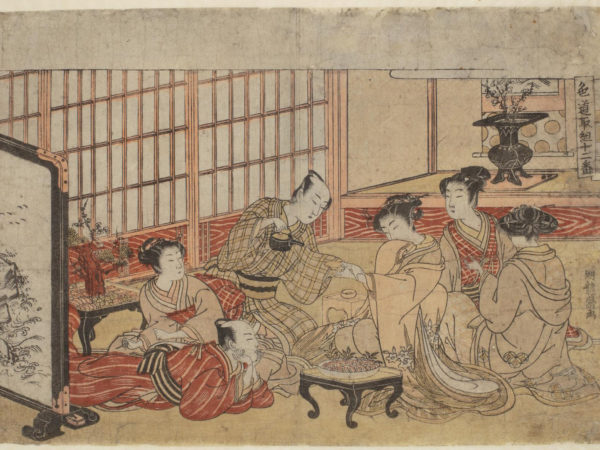
A Party in the Yoshiwara, 1775 by Isoda Koryūsai (1735–90)
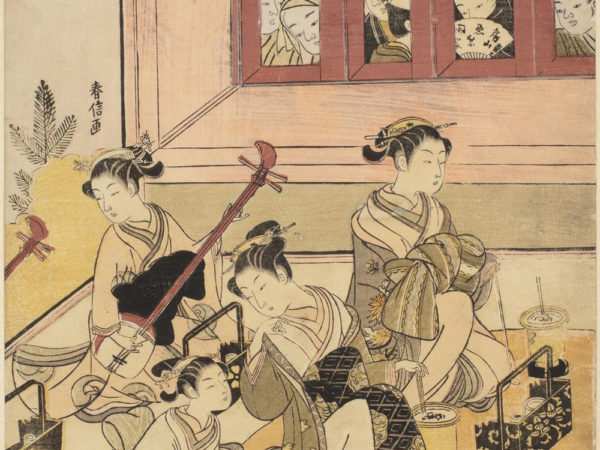
The Watchers and the Watched, about 1764–72 by Suzuki Harunobu (1725–1770)
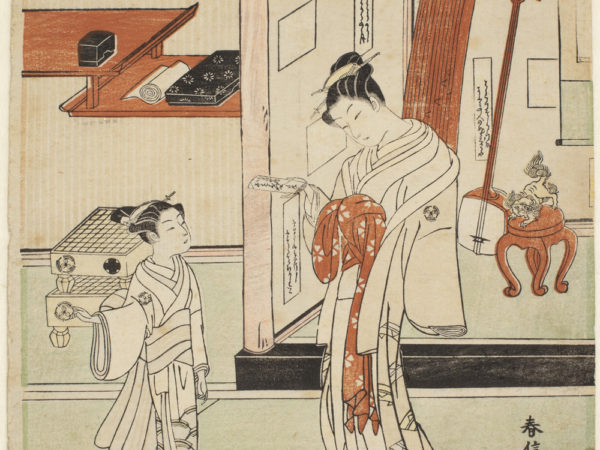
A courtesan and her attendant, about 1770 by Suzuki Harunobu (1725–1770)
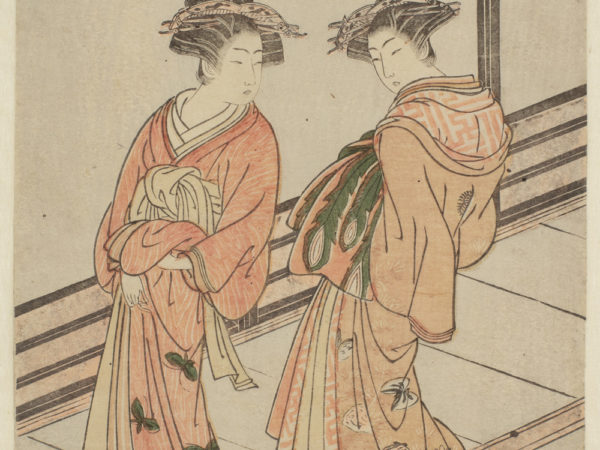
The Syllable Wa. Prostitutes of the Tsutaya: Hitomachi [left] and Shizukinu [right], 1796 by Isoda Koryūsai (1735–90)
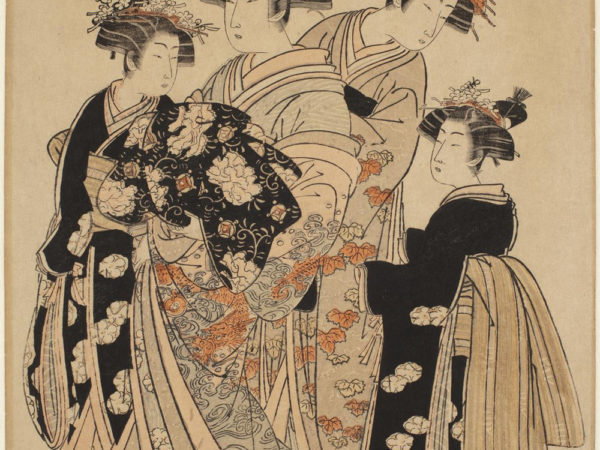
Kasugano of the Yotsumeya, kamuro Onami and Menami, shinzō Mitsuura, 1778–80 by Isoda Koryūsai (1735–90)
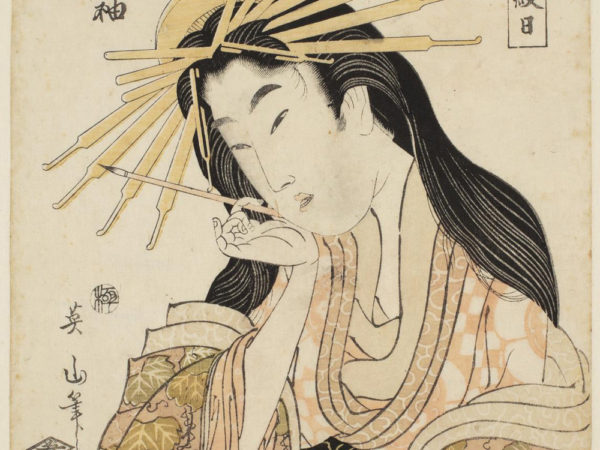
Tagasode at Tamaya, about 1807 by Kikukawa Eizan (1787–1867)
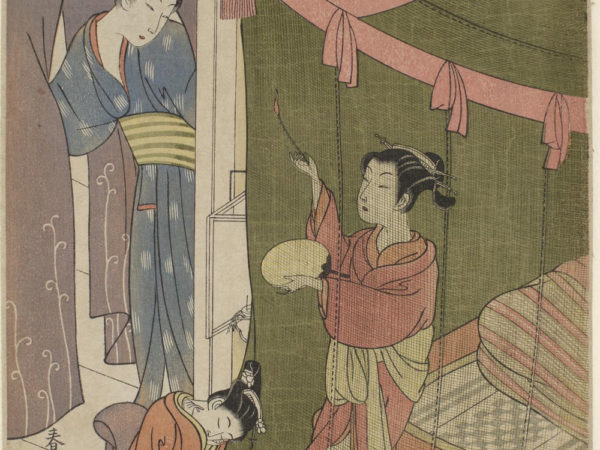
Courtesan and Guest with Mosquito Net, 1772–73 by Shiba Kokan (1747–1818)
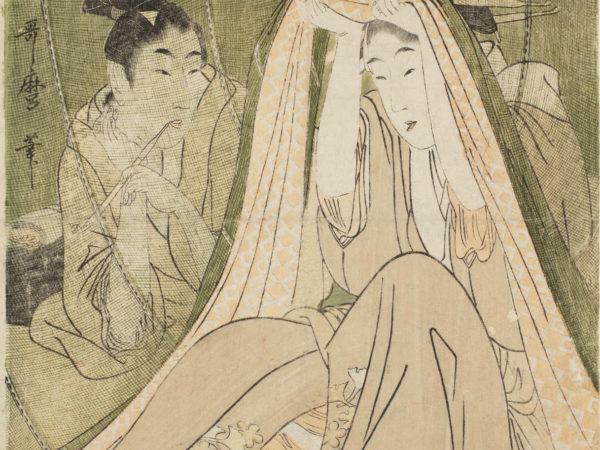
Mosquito Net, 1798–1801 by Kitagawa Utamaro I (1753–1806)
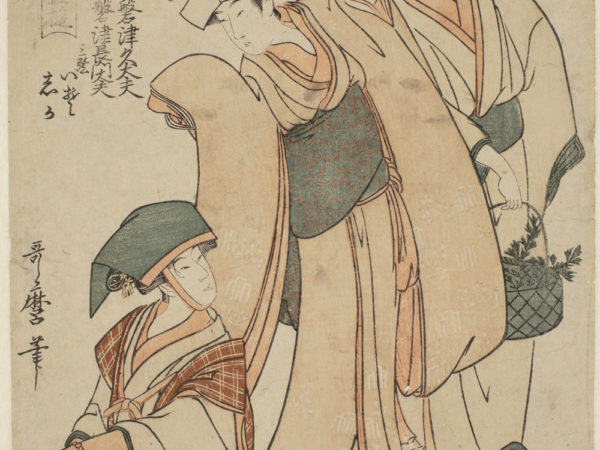
Spring Onion Sellers, 1801 by Kitagawa Utamaro I (1753–1806)
Kabuki theatre
Kabuki theatre was one of the most popular entertainments in Edo (Toyko), Osaka and Kyoto. Theatre fans loved watching actors and musicians perform the plays which combined stylised drama and dance.
Customers were eager to buy souvenirs of their favourite actors in particular roles. Publishing houses sold more woodblock prints relating to kabuki than any other subject. They worked with artists and craftsmen to develop attractive colour images.
Individual actors belonged to different acting families, often starting to work as young children. From 1629 only male actors were allowed to perform in kabuki so all female parts were played by men.
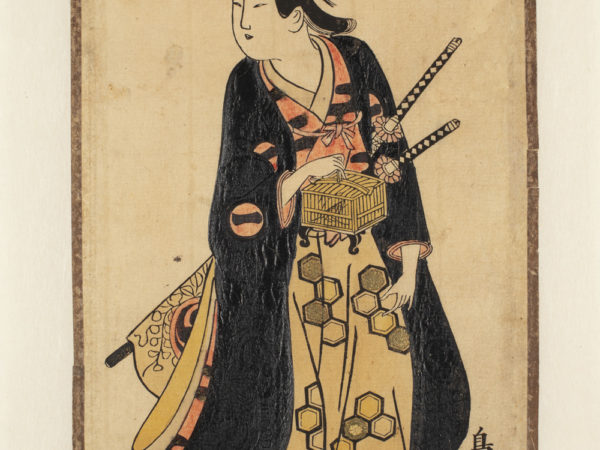
The actor Ichikawa Monnosuke I, about 1721 by Torii Kiyotada (worked 1720–50)
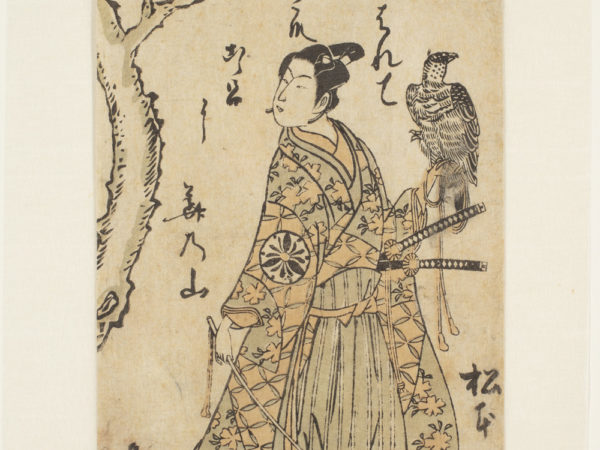
The actor Matsumoto Sankichi with a hawk, about 1760 by Torii Kiyomitsu I (1735-85)
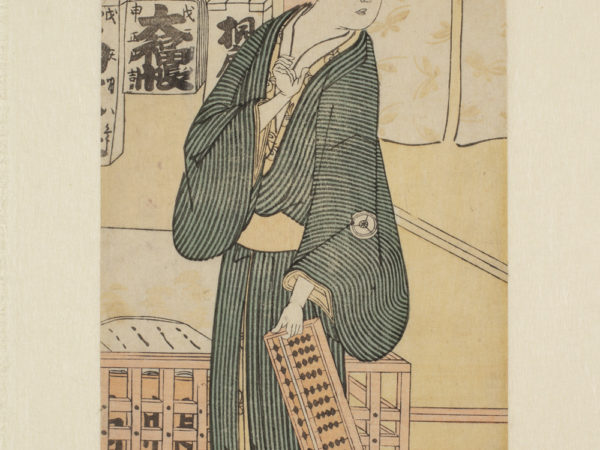
Iwai Hanshirō IV as Hisamatsu, 1788 by Katsukawa Shunkō (1743-1821)
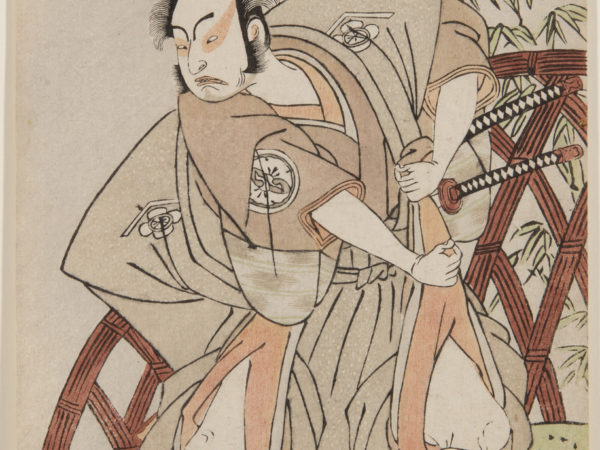
The actor Nakamura Jūzō II, 1773 by Katsukawa Shunkō (1743–1821)

The actor Ichikawa Danjūrō V as Sakata Kintoki [right] and Sawamura Sōjurō III as Minamoto no Raikō [left ], 1781 by Katsukawa Shunshō (1726–1793)
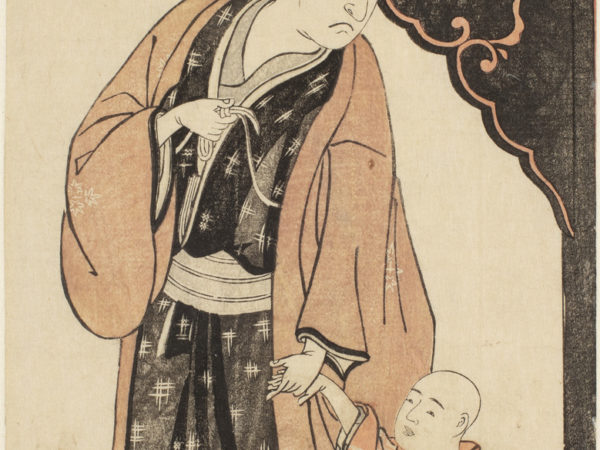
The actor Ichikawa Danjūrō V and his son at a temple for a Kaichō, about 1782 by Katsukawa Shunshō (1726–1793)
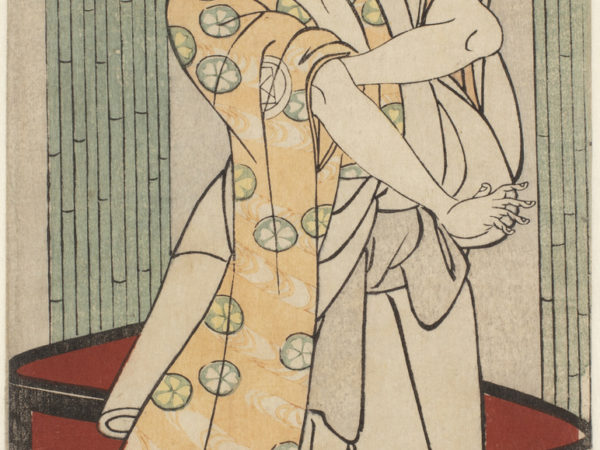
The actor Ichikawa Komazō III as Ten-Ichi-Bō, about 1780 by Katsukawa Shun'ei (1762-1819)
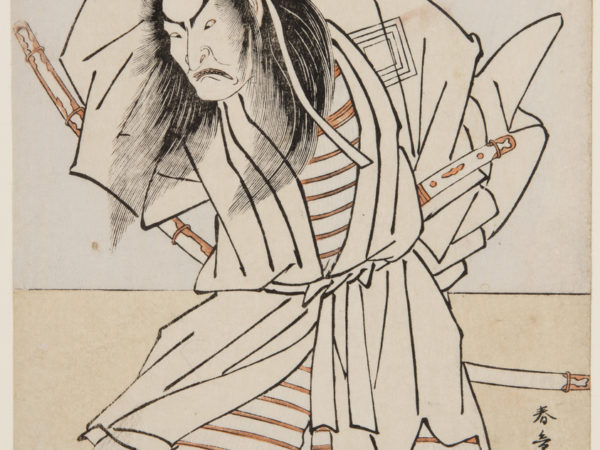
The actor Ichikawa Danjūrō V as Tomomori, 1784 by Katsukawa Shunshō (1726–1793)

The actor Segawa Kikunojō III as Fox Ōkiku, 1782 by Katsukawa Shunshō (1726–1793)
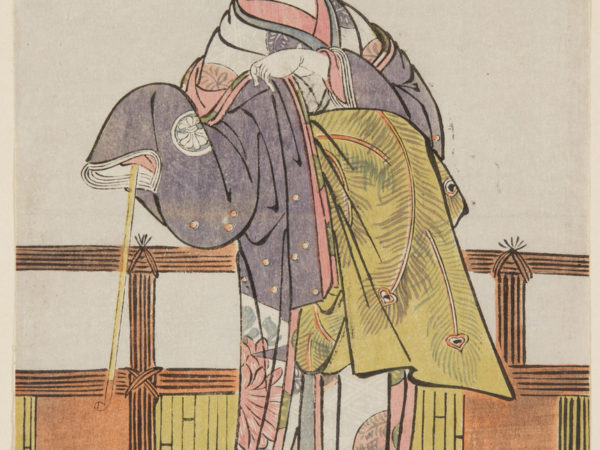
The actor Segawa Kikunojō III, about 1780 by Katsukawa Shunkō (1743–1821)
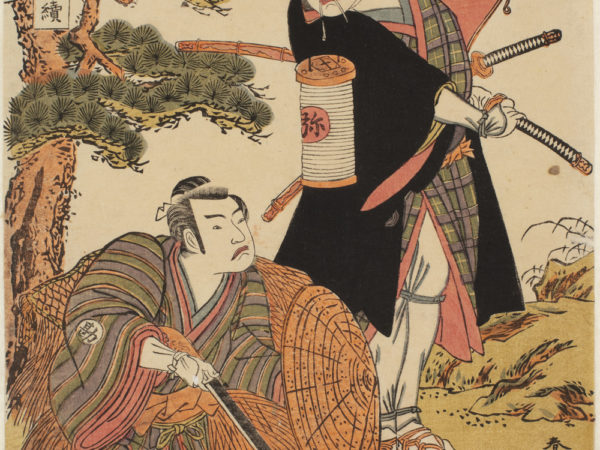
Ichikawa Masugoro as Kanpei [left] in Act V of A Treasury of Loyal Retainers, about 1780 by Katsukawa Shunshō (1726–1793)
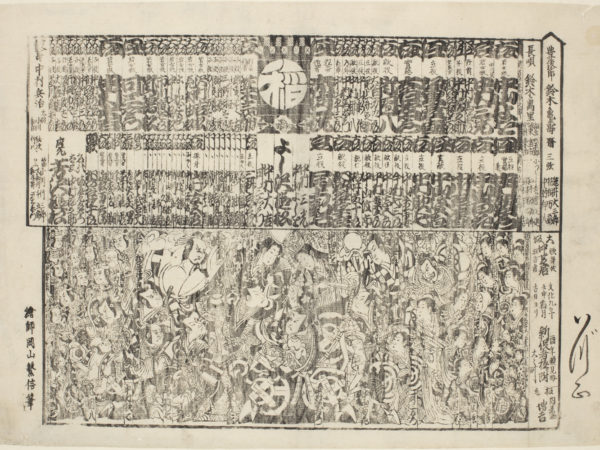
Playbill for Season-opening Programme, Naka Theatre, Osaka, 11th month, 1812 by Okayama Shigenobu (birth and death dates unknown)
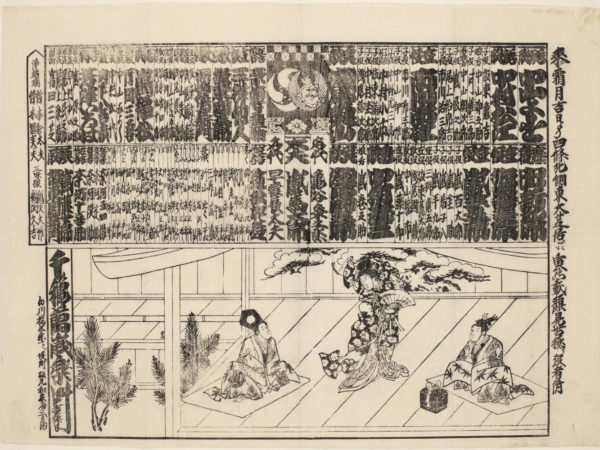
Playbill for Season-opening Programme, Kita Theatre, Kyoto, 11th month 1817 (anonymous artist)
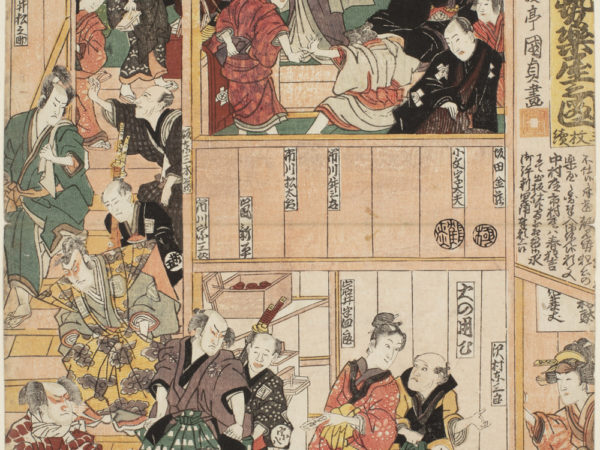
Backstage at the Season-opening Performance of the Morita Theatre, Edo (Tokyo), 1812 by Utagawa Kunisada I (1786-1864)
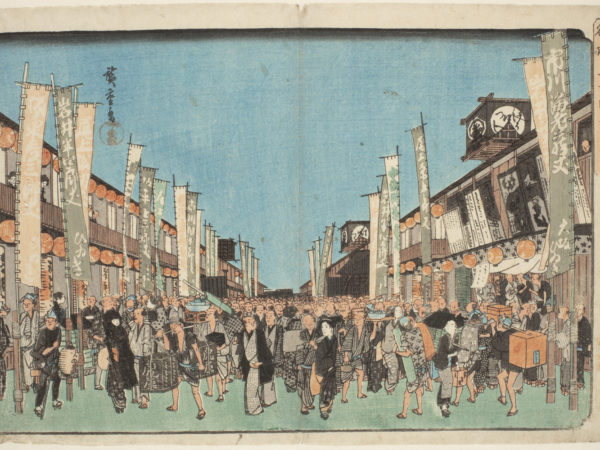
Theatres in Nichōmachi, 1832-38 by Utagawa Hiroshige I (1797-1858)
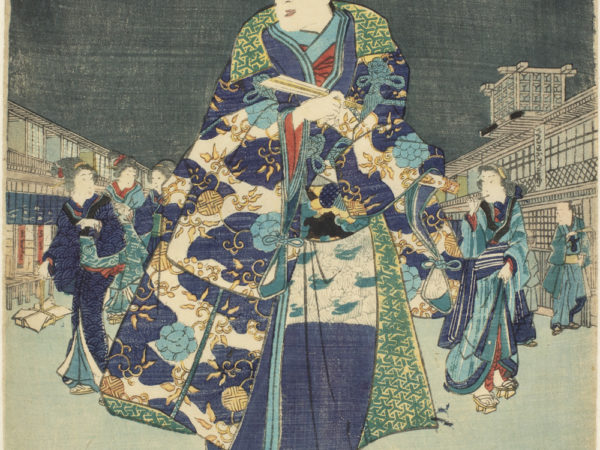
A Moonlit Evening in the Theatre District, 1864 by Utagawa Kunisada I (1786-1864)
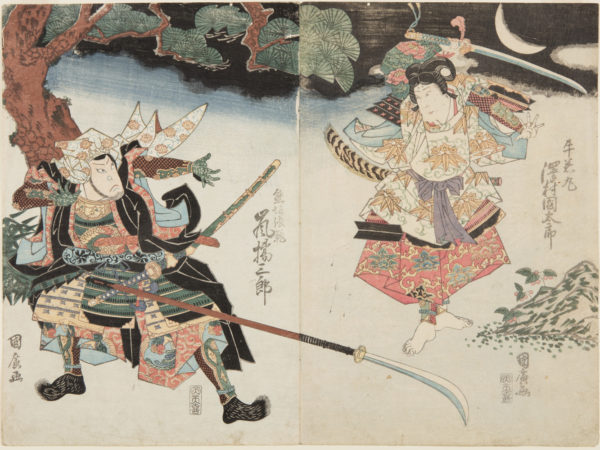
The actor Sawamura Kunitarō II as Ushiwakamaru [Right] and Arashi Kitsusaburō I as Kumasaka Chōhan [Left], 1827 by Ganjōsai Kunihiro (active 1815–1843)
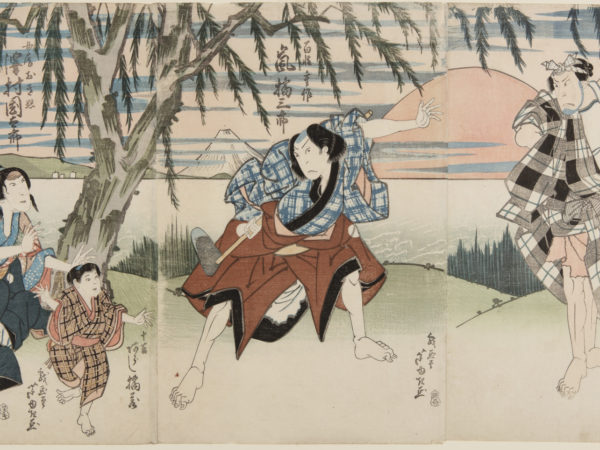
The actors Ichikawa Ebijūrō I as Ukisu no Iwamatsu [Right], Arashi Kitsusaburō II as the Farmer (Hyakushō) Jūsaku [Centre], Arashi Kitsuzō as Jūkichi, and Sawamura Kunitarō II as Jūsaku's Wife (Nyōbō) Okinu [Left], 1827 by Gigadō Ashiyuki (active 1814–35)
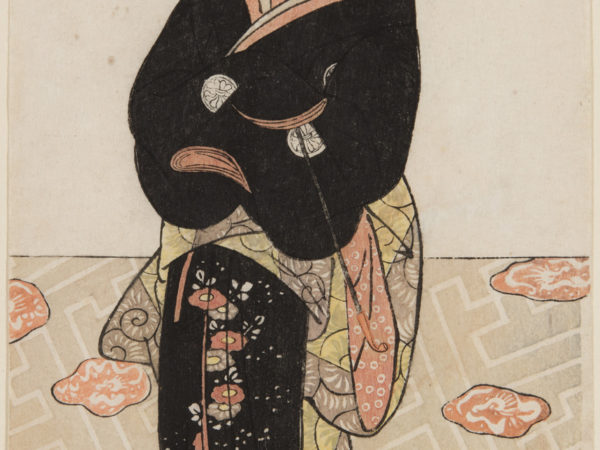
The actor Segawa Kikunojō III as Ohan, 1781 by Katsukawa Shunshō (1726–1793)
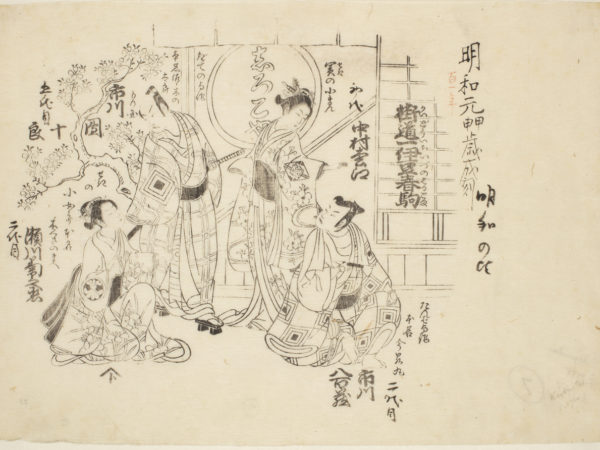
Horse Dance in Izu Highway One, 1764 by Torii Kiyomitsu (1735–1785)
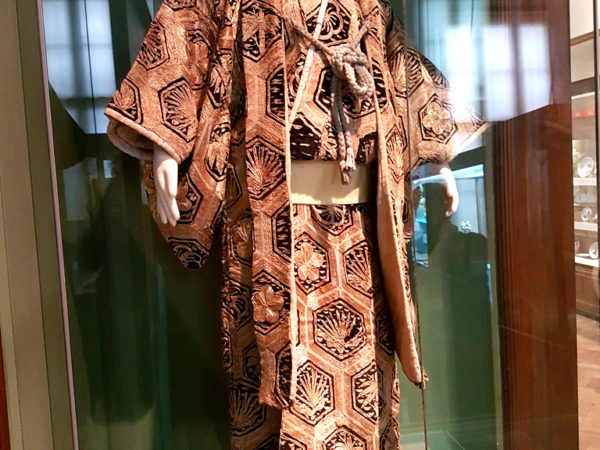
Kimono and haori coat for a kabuki actor, Japan, about 1870–1900.
